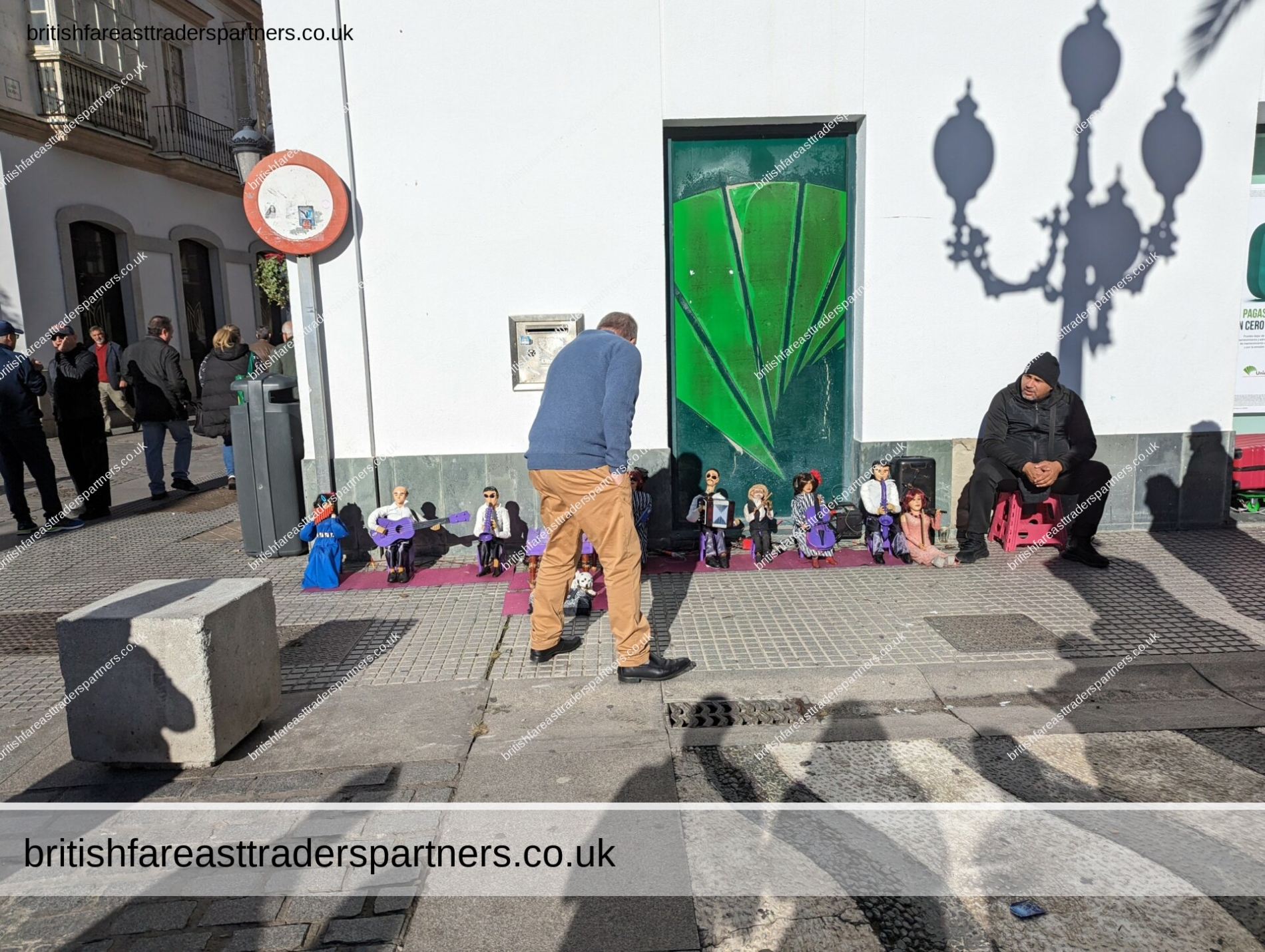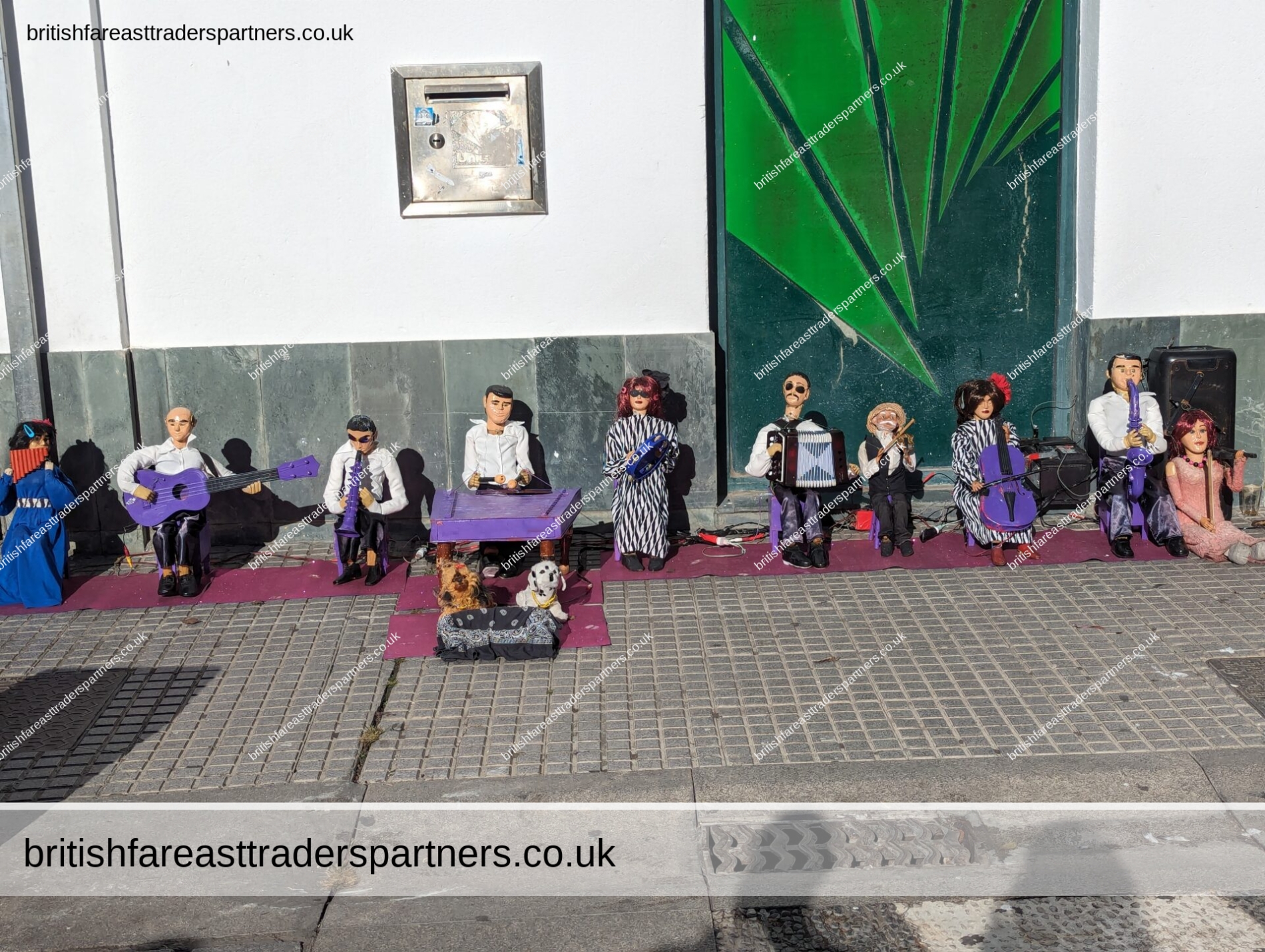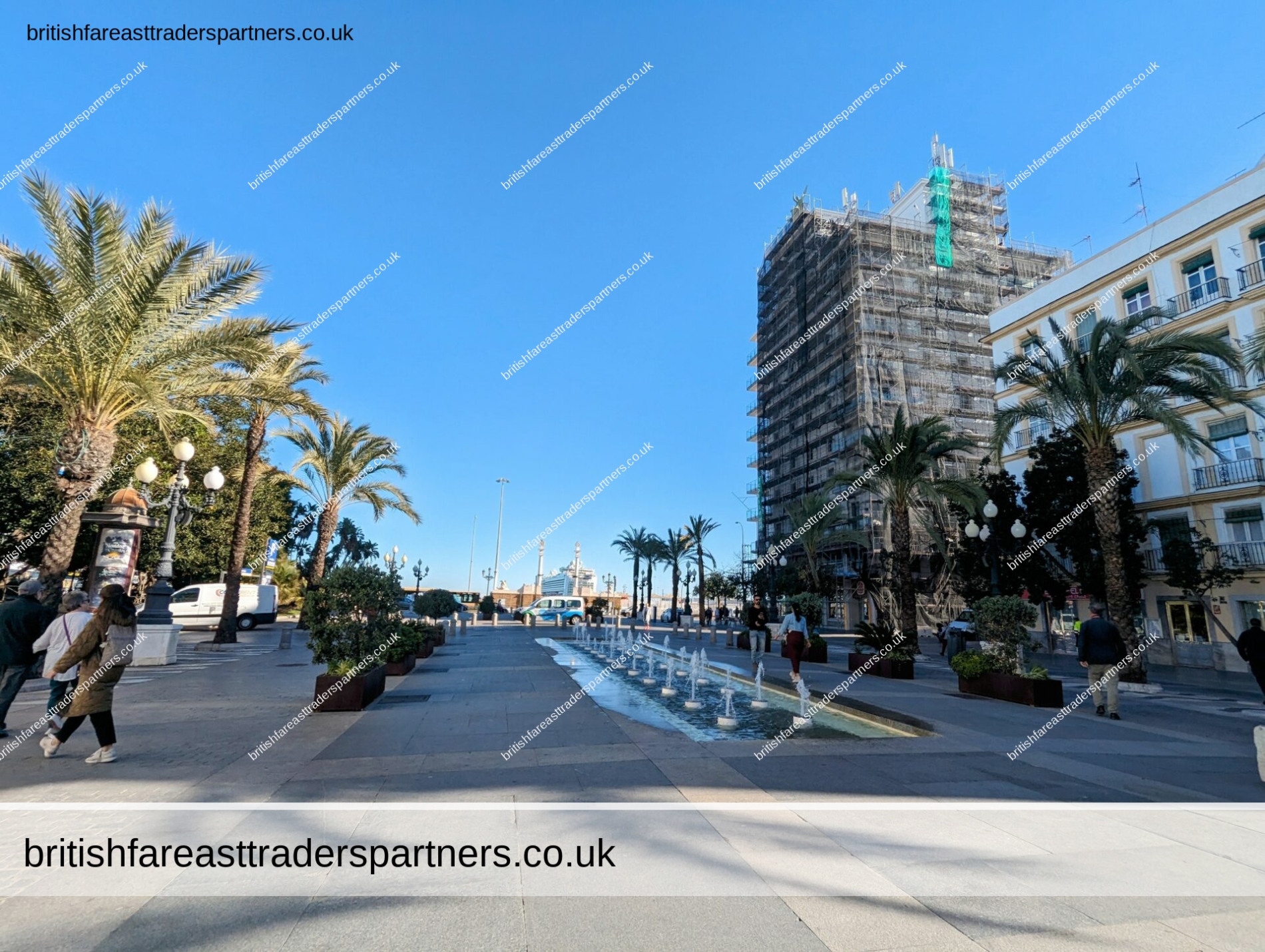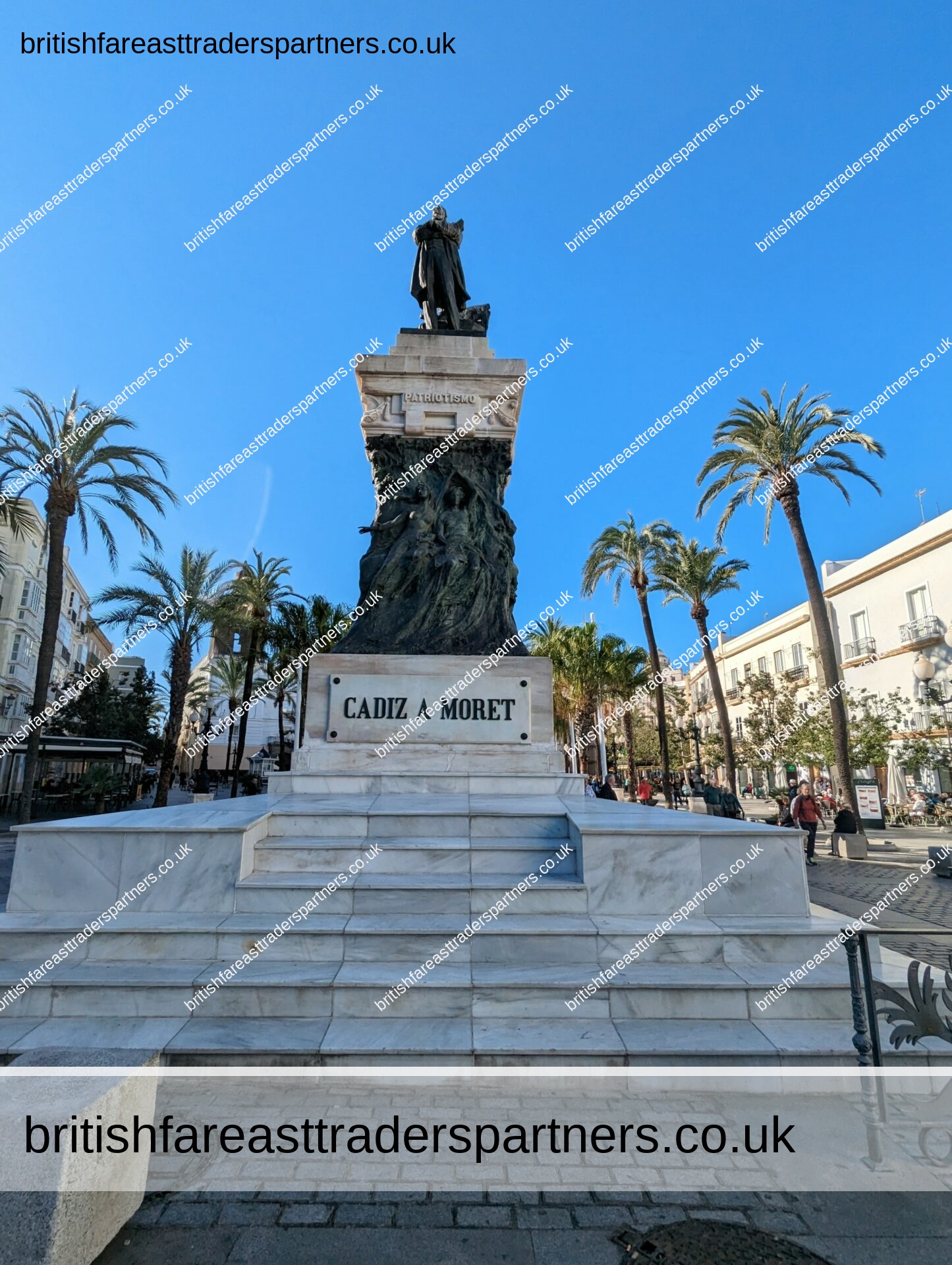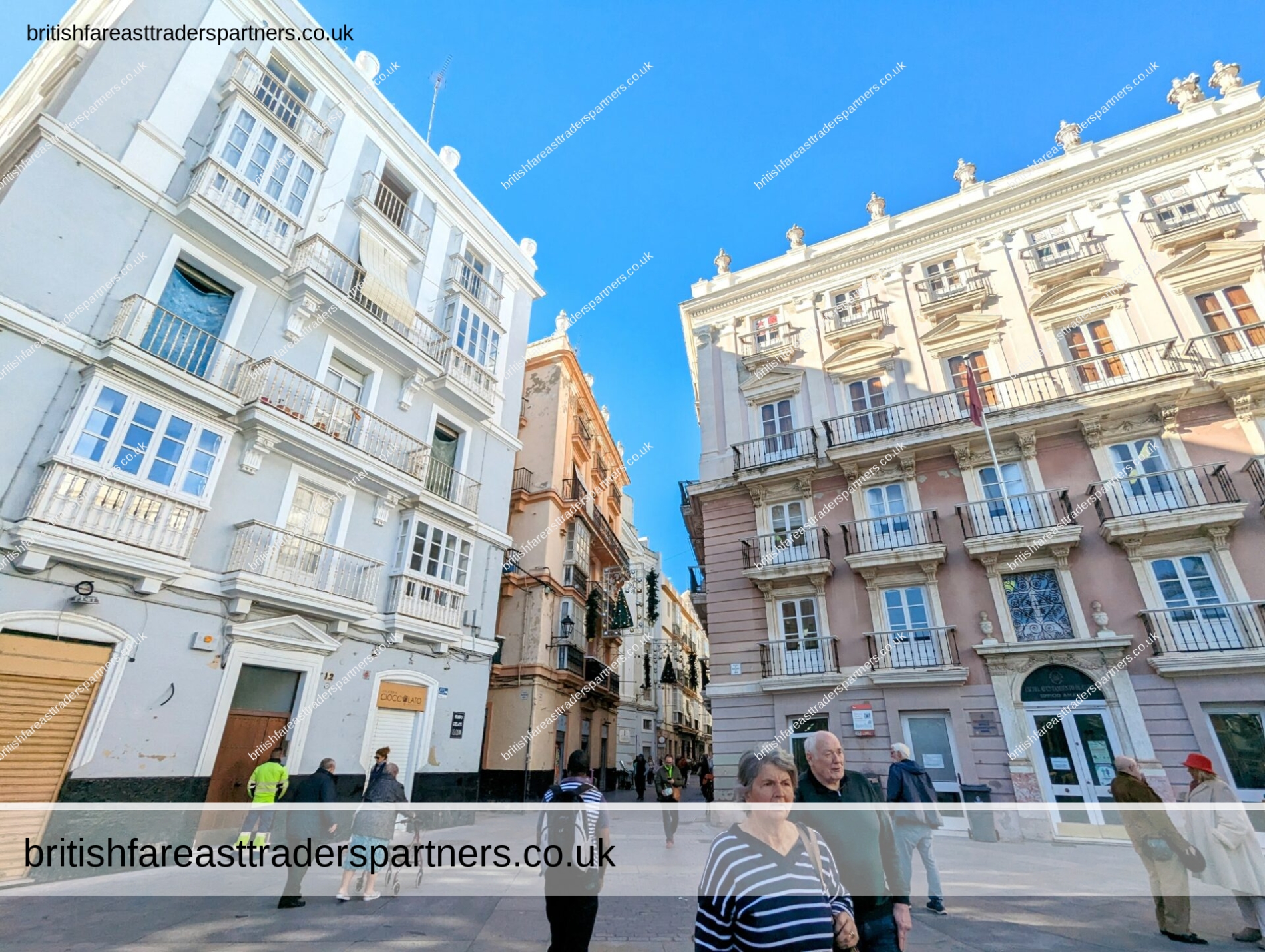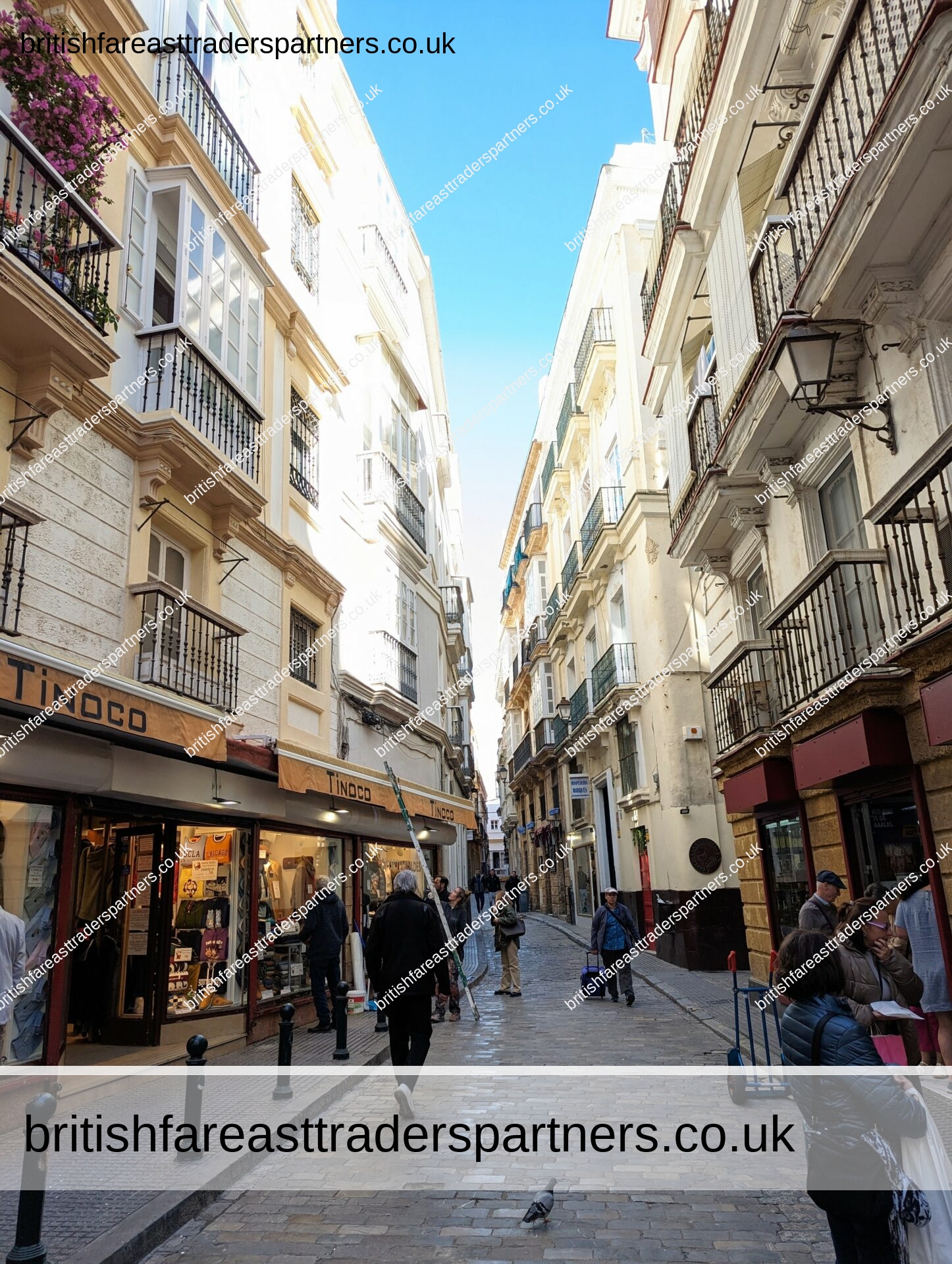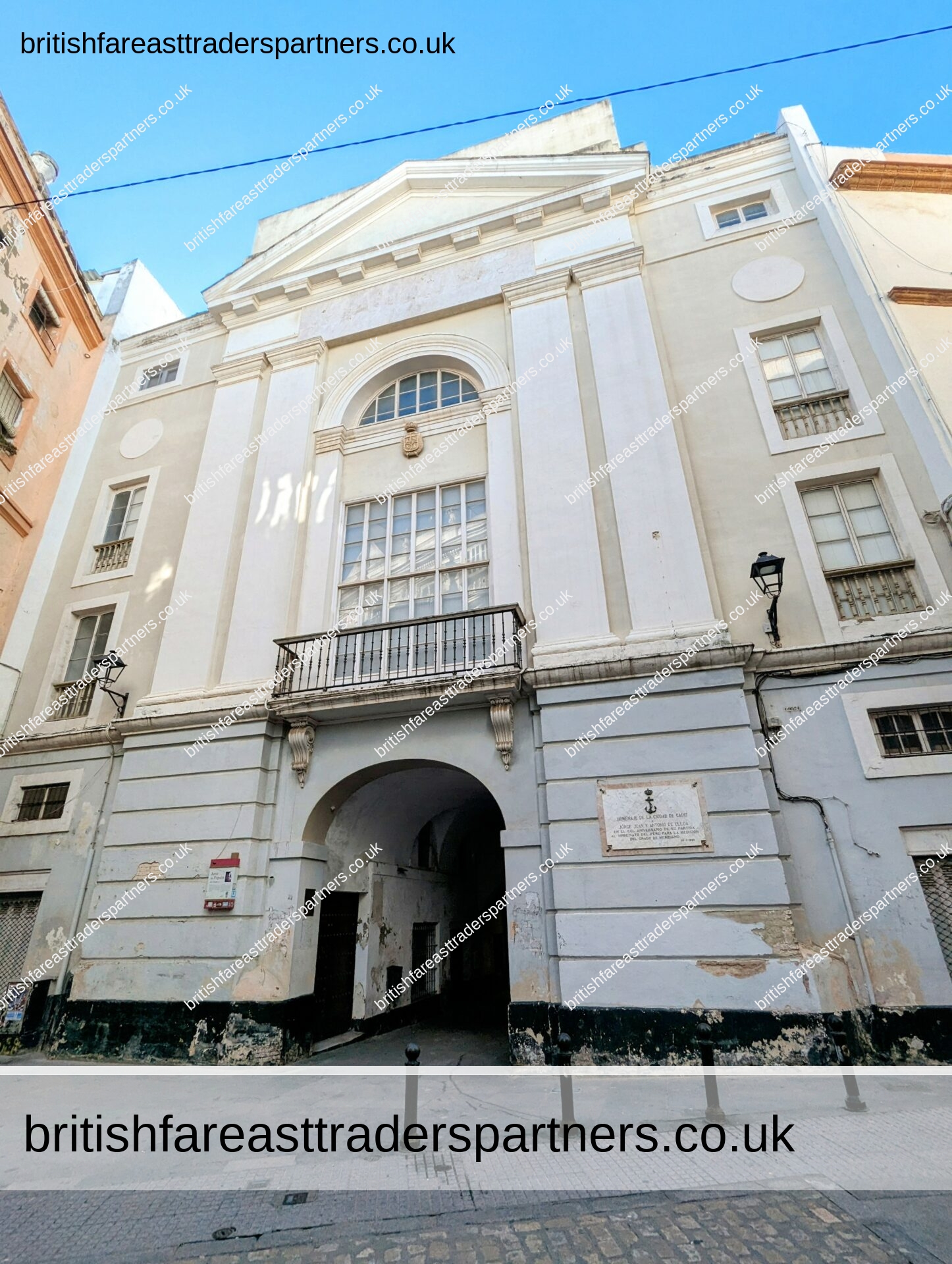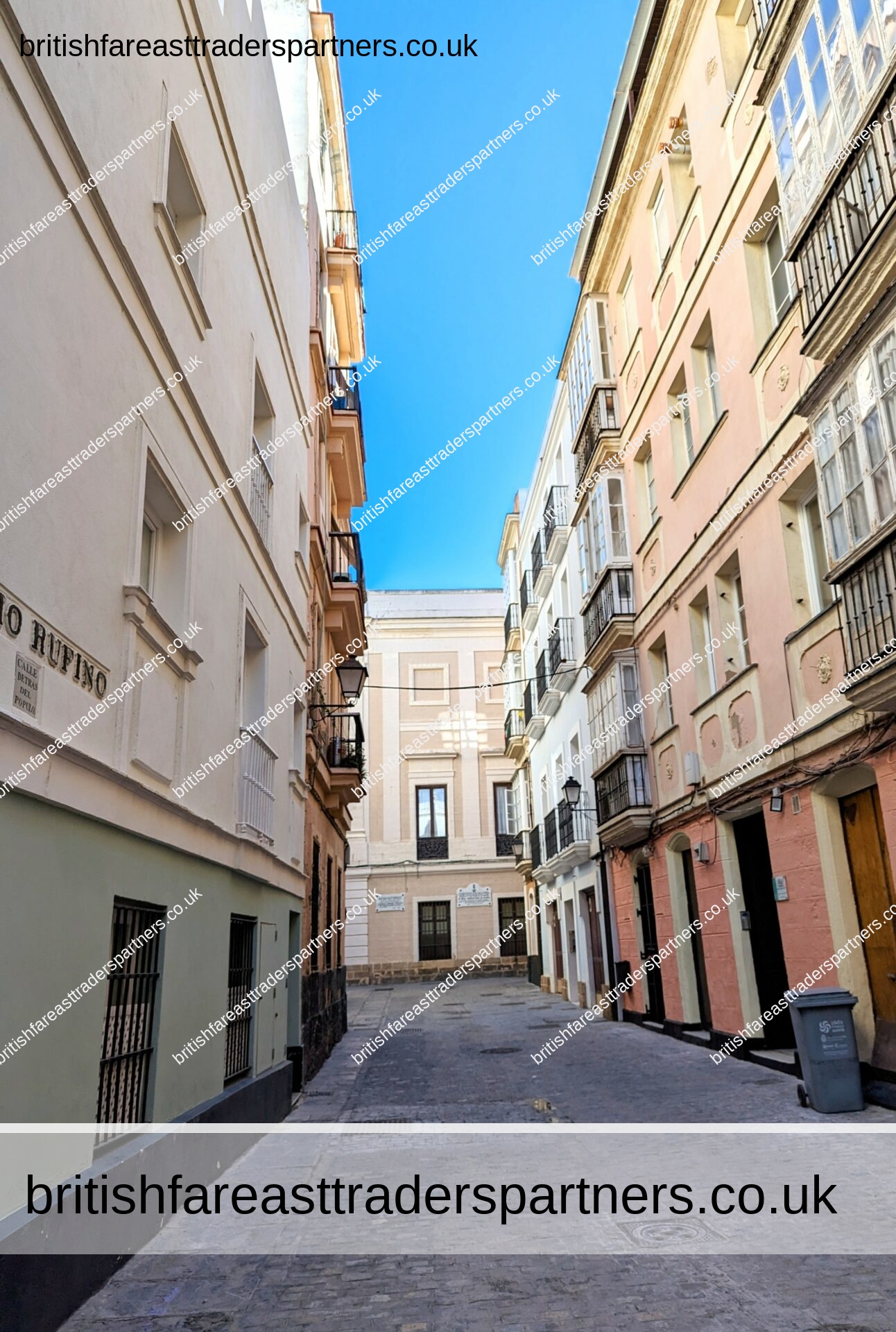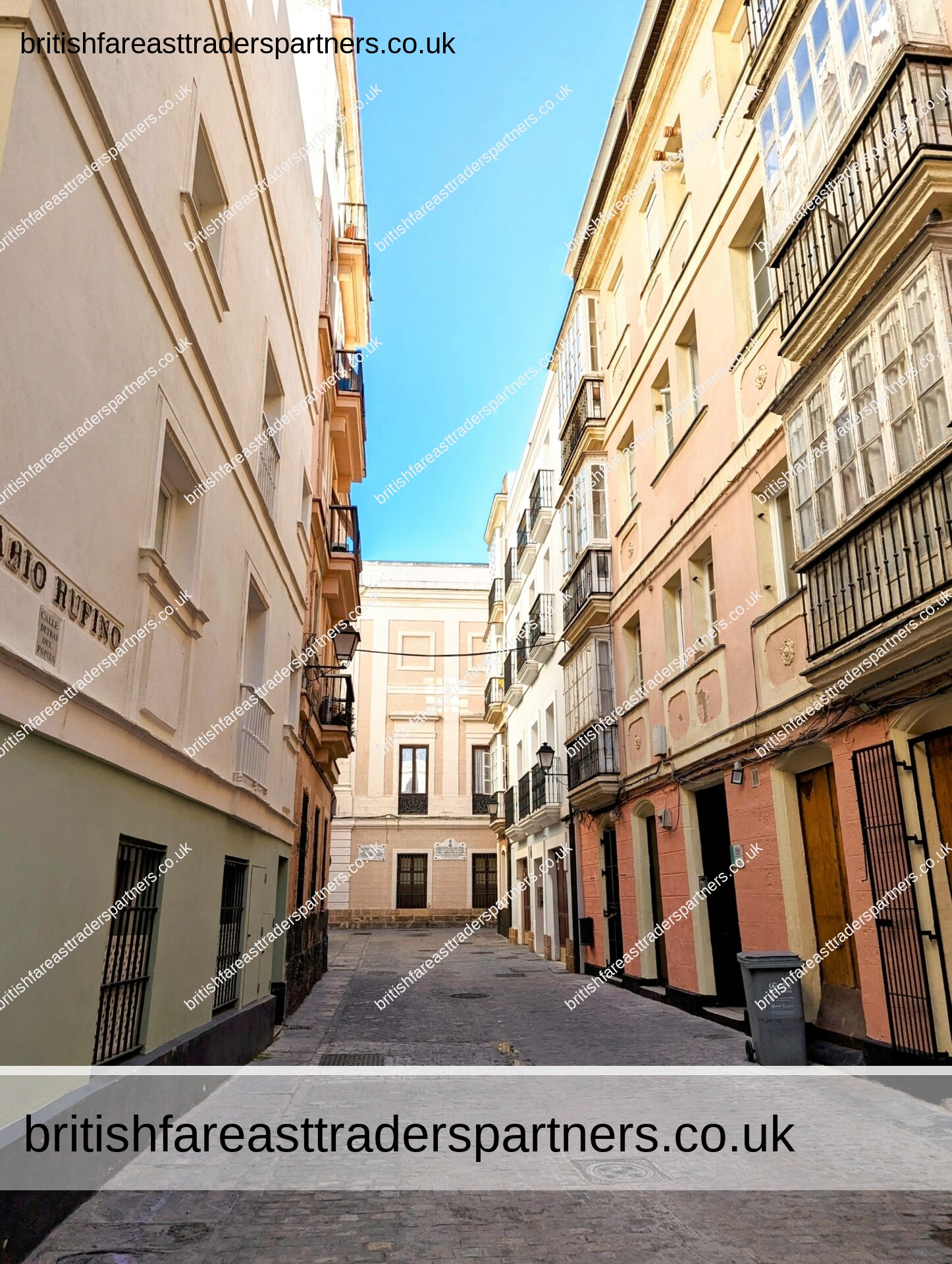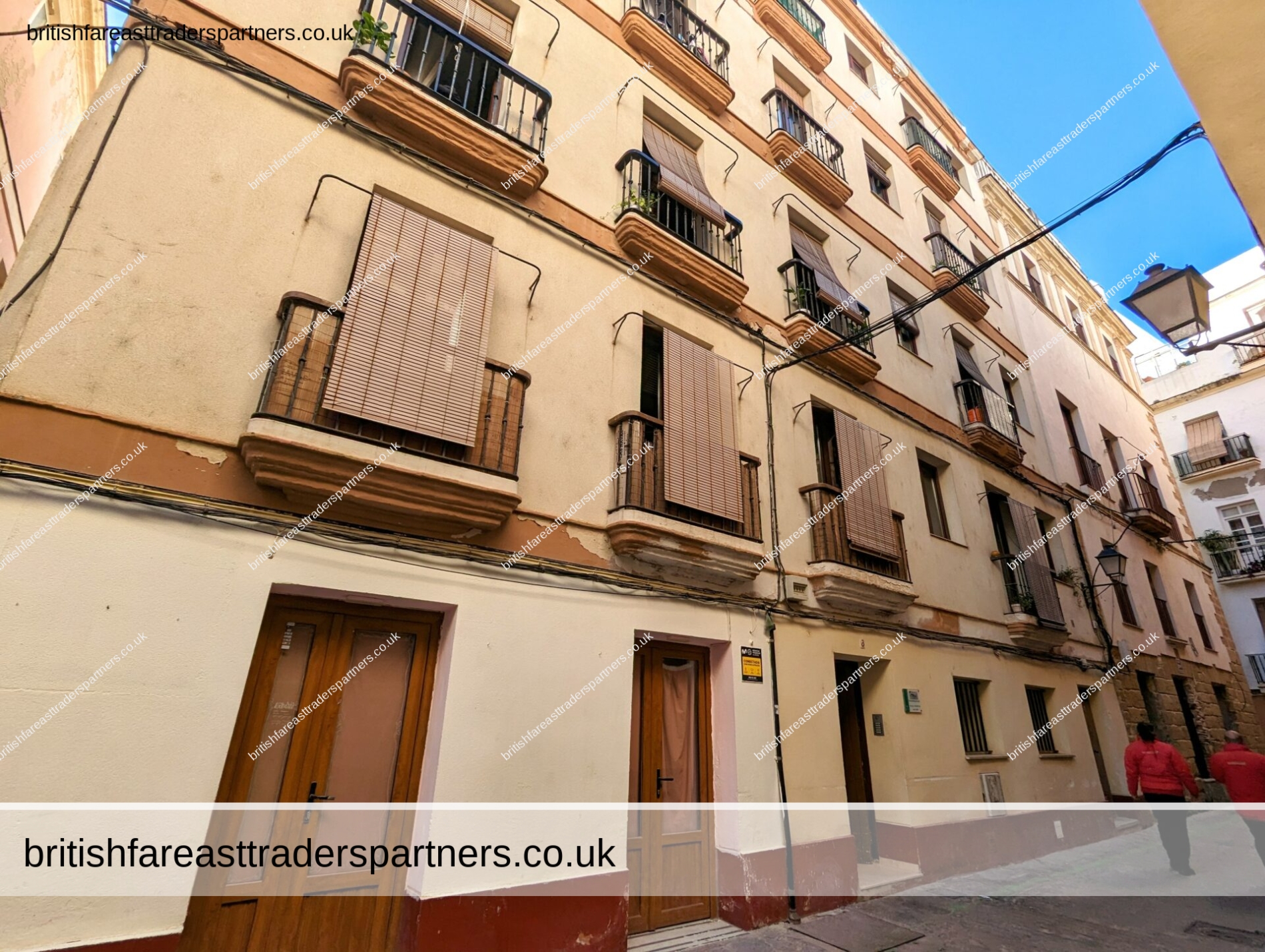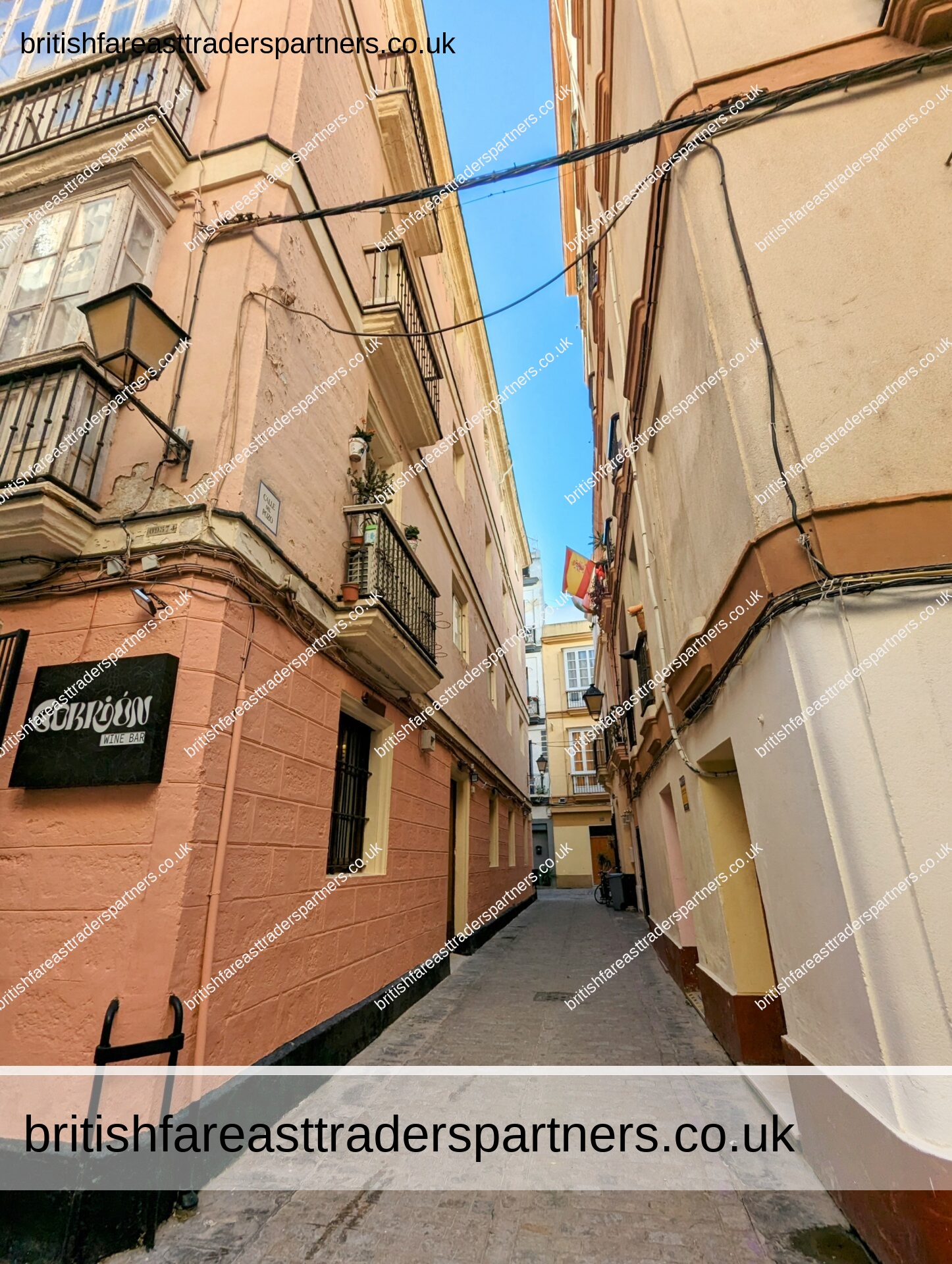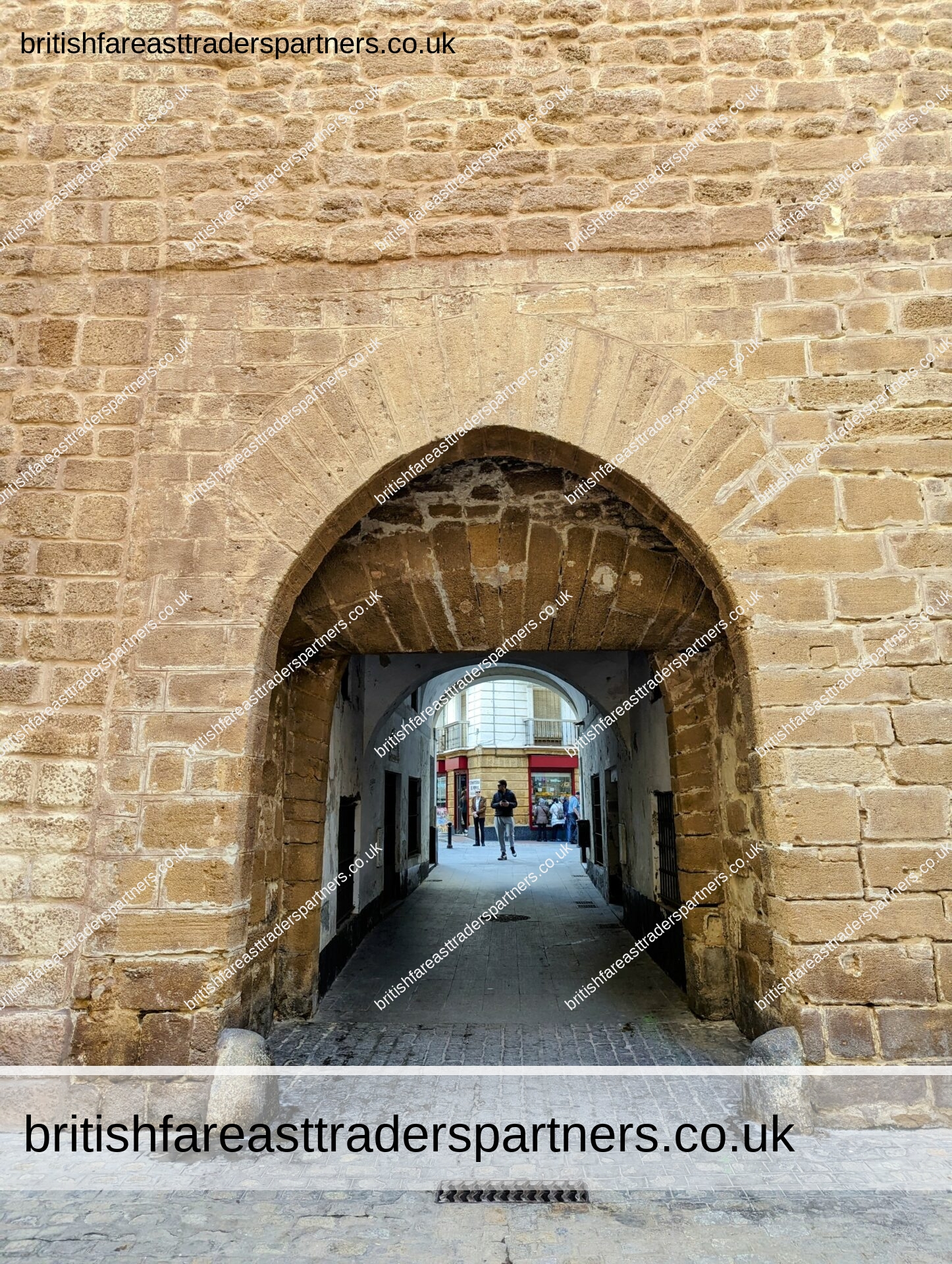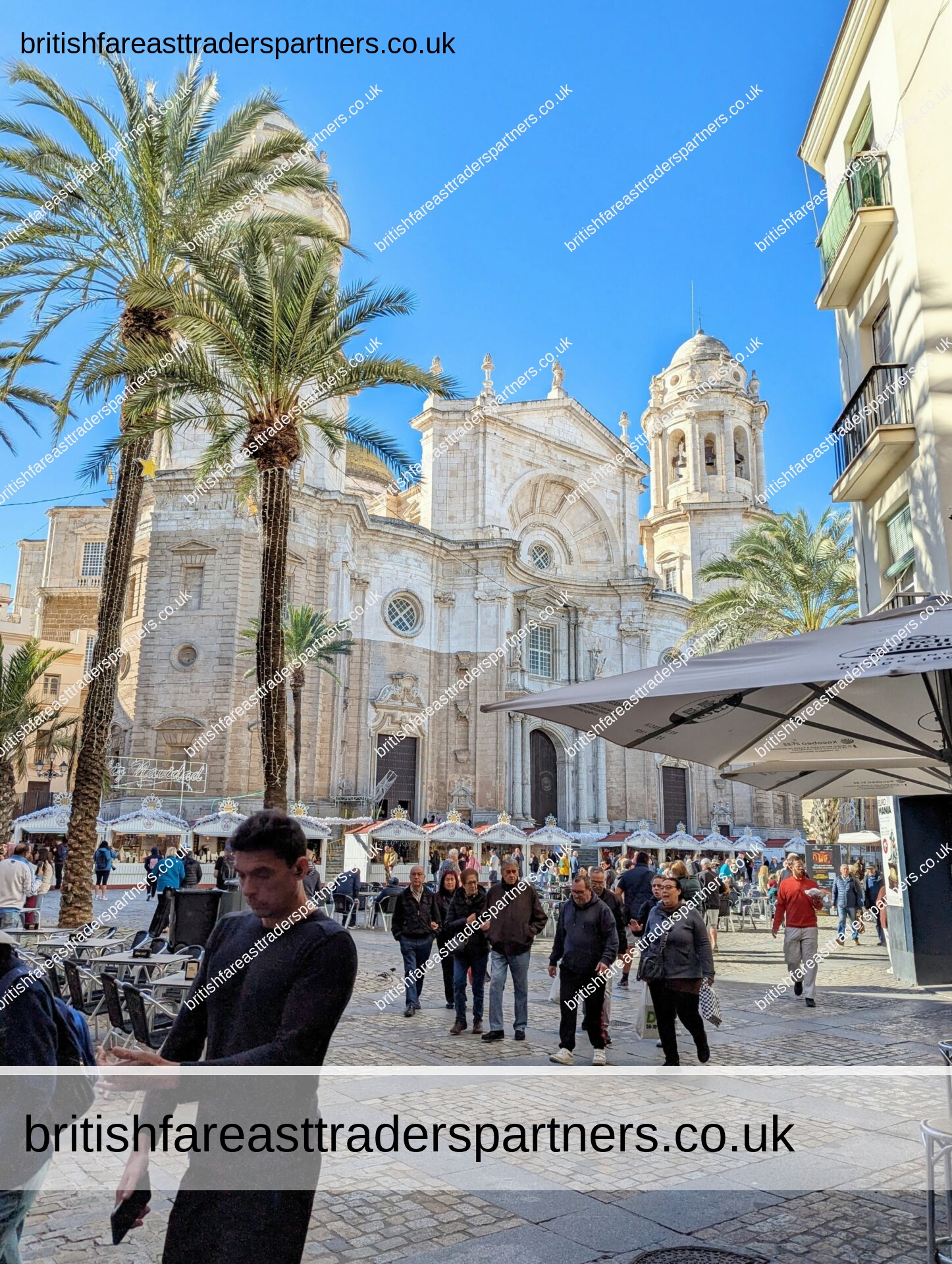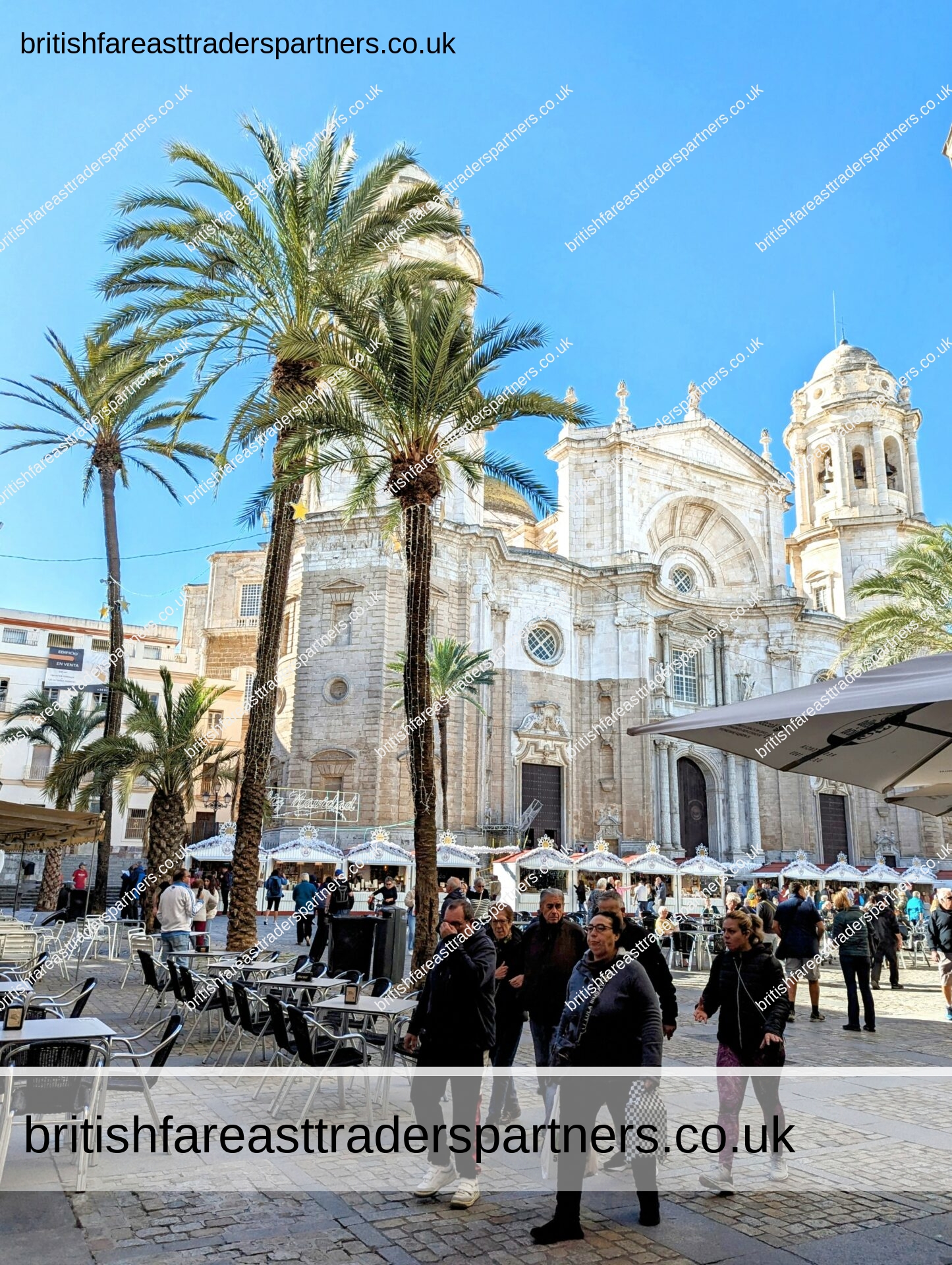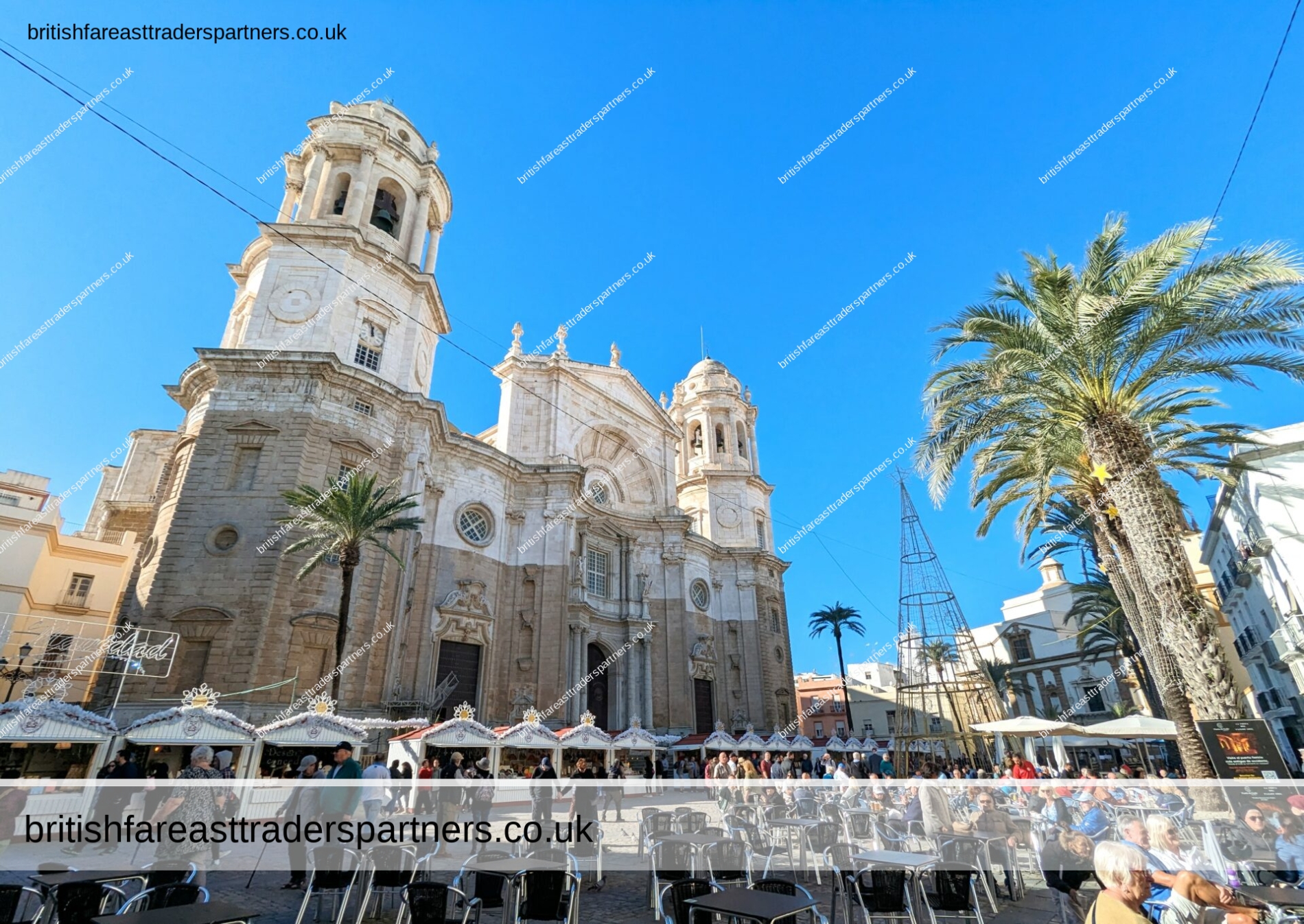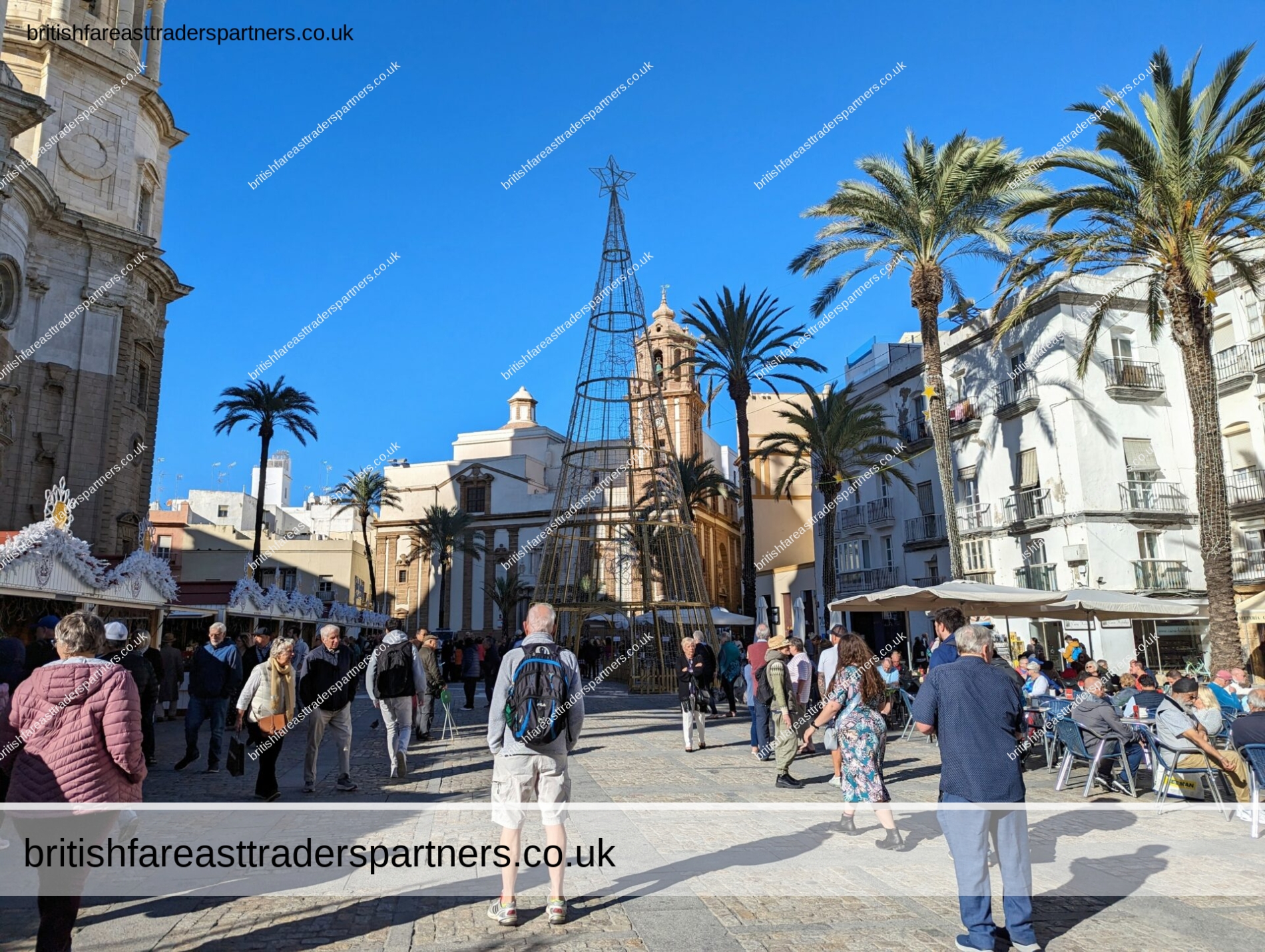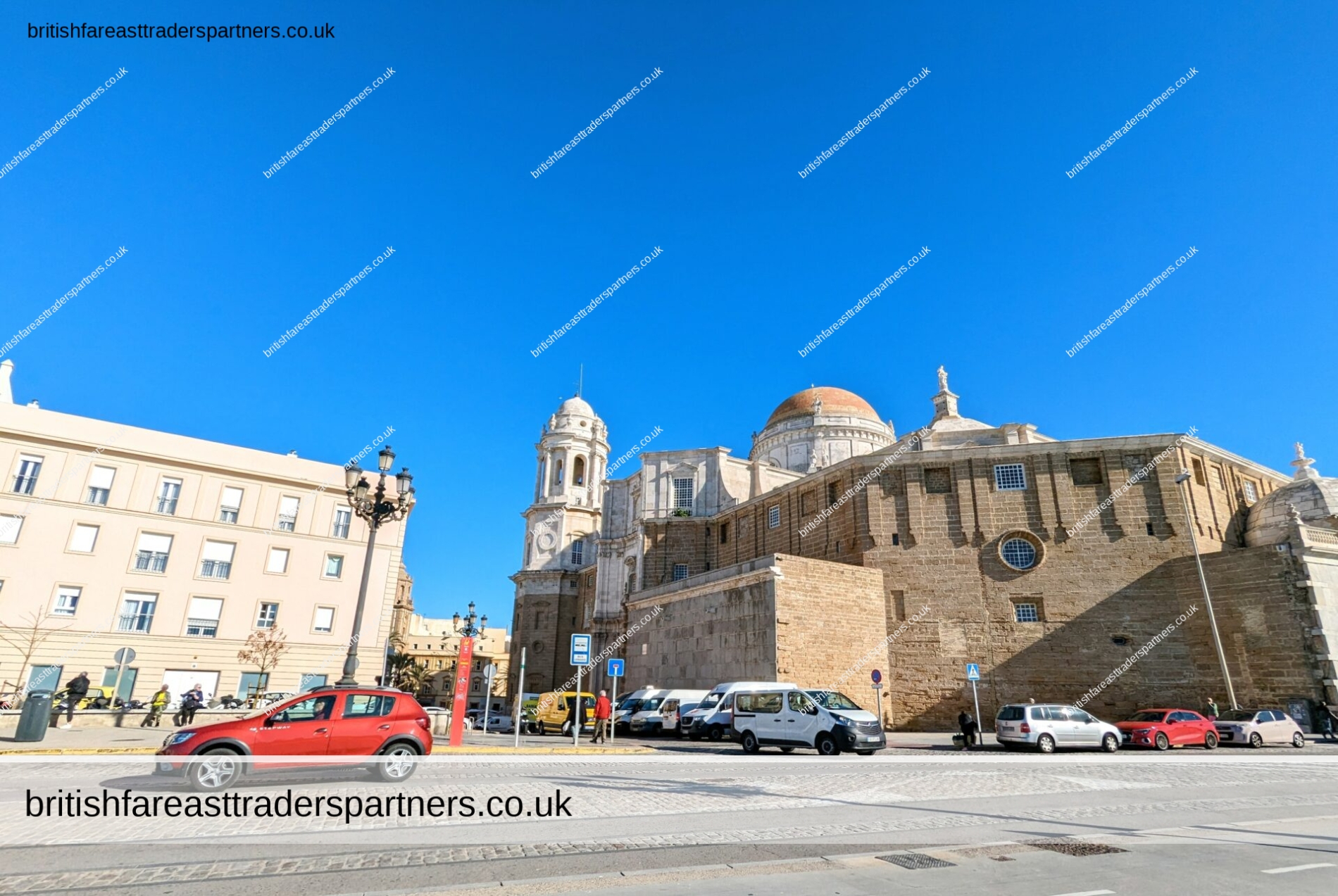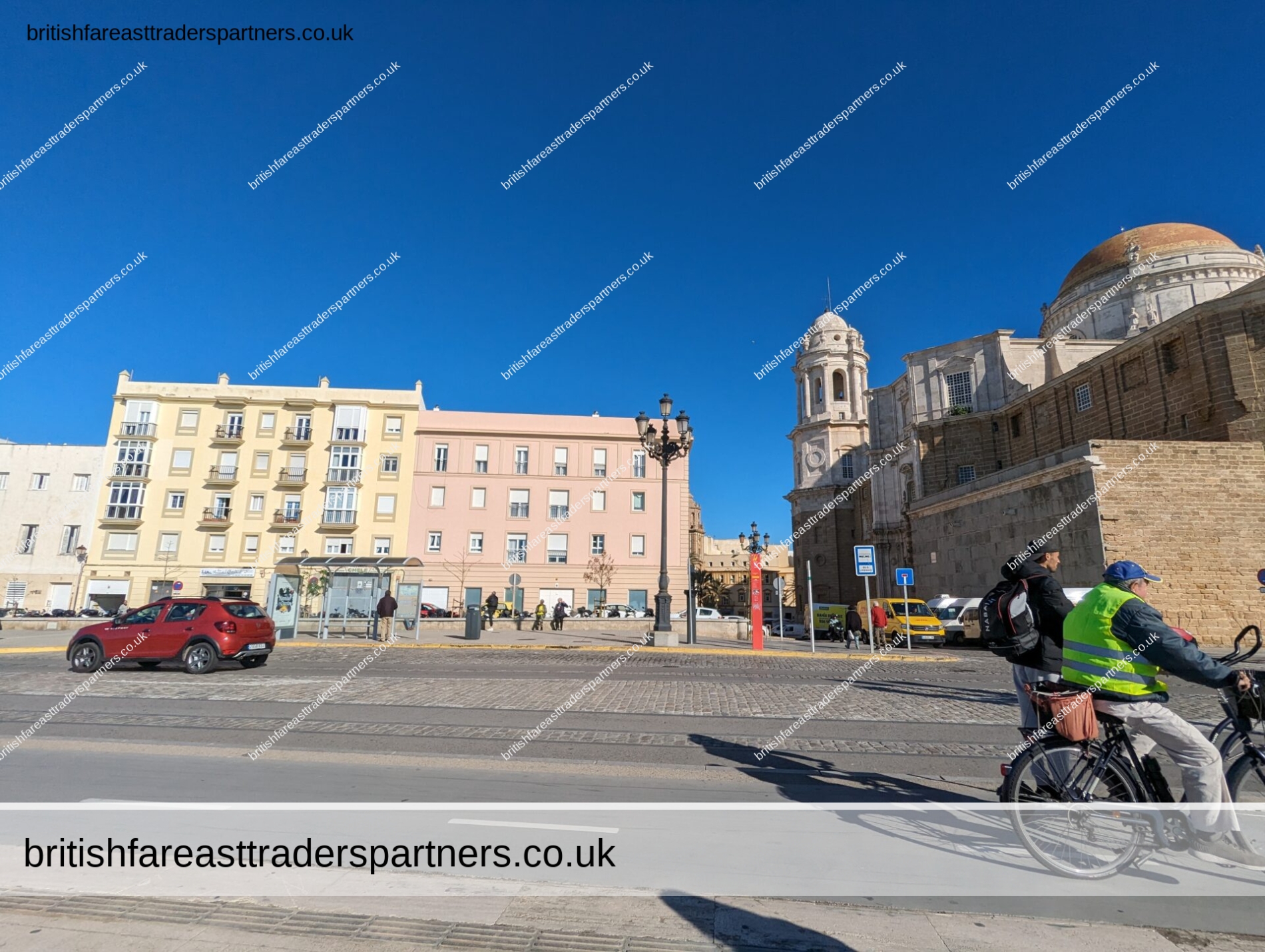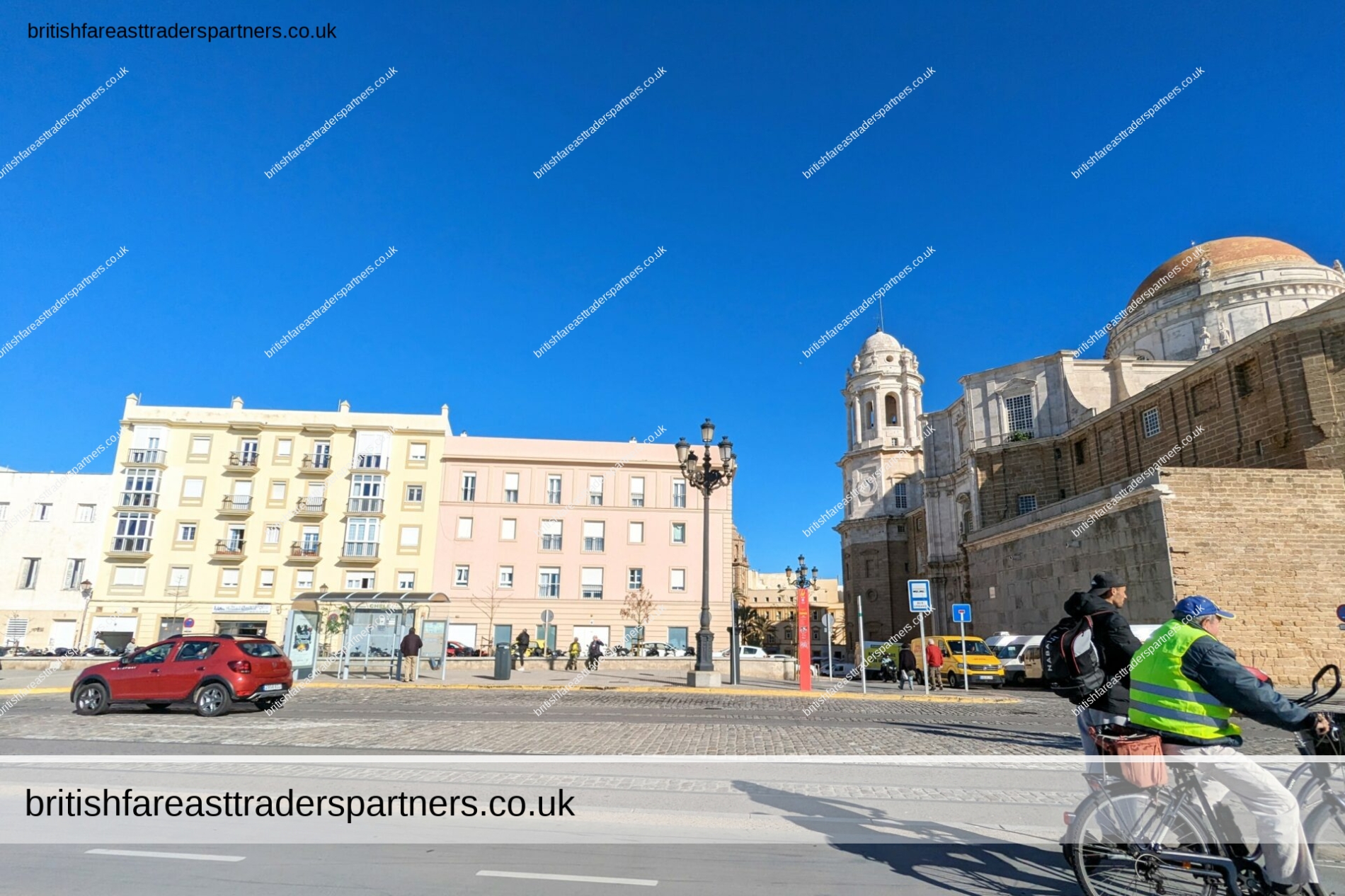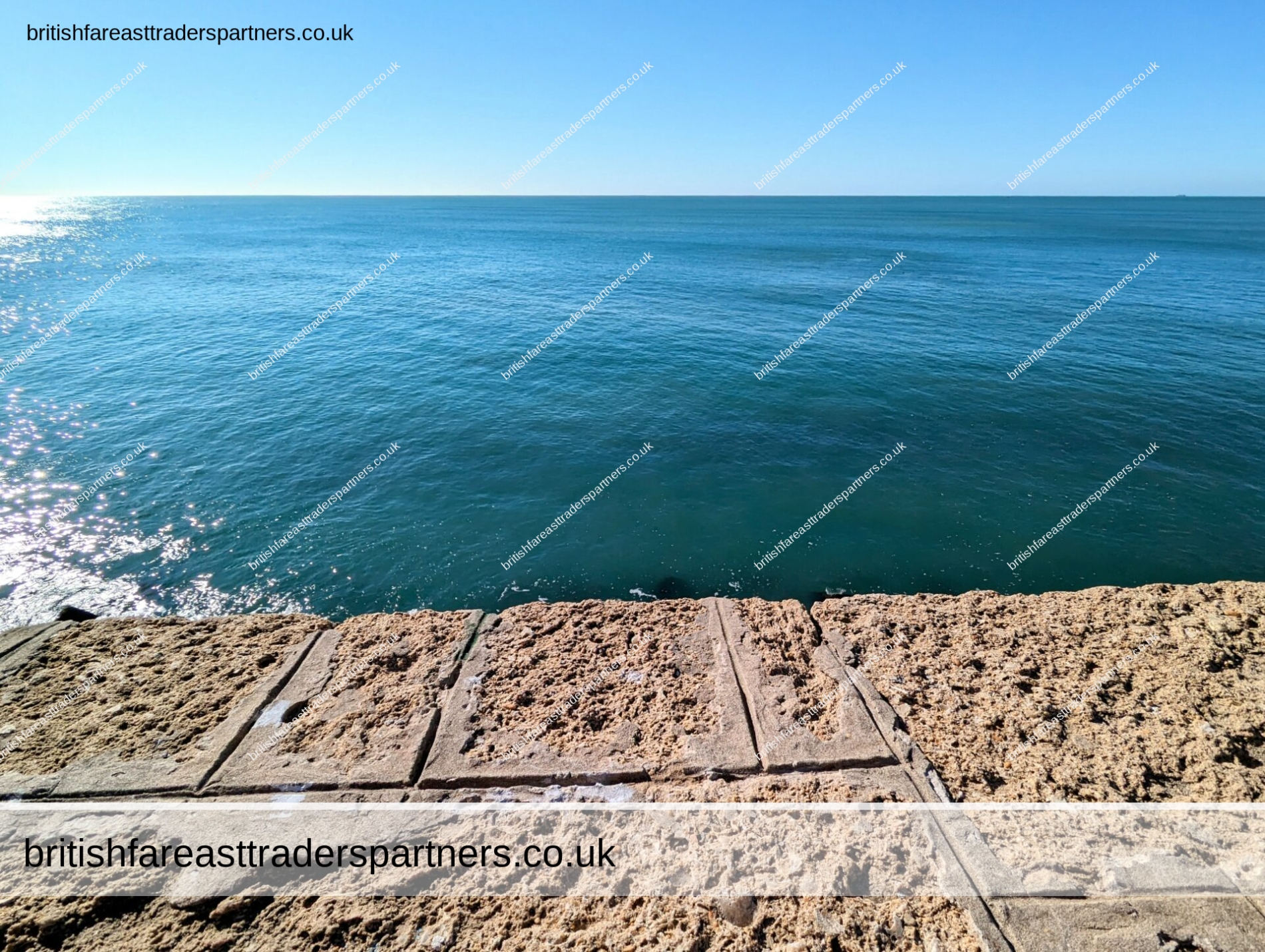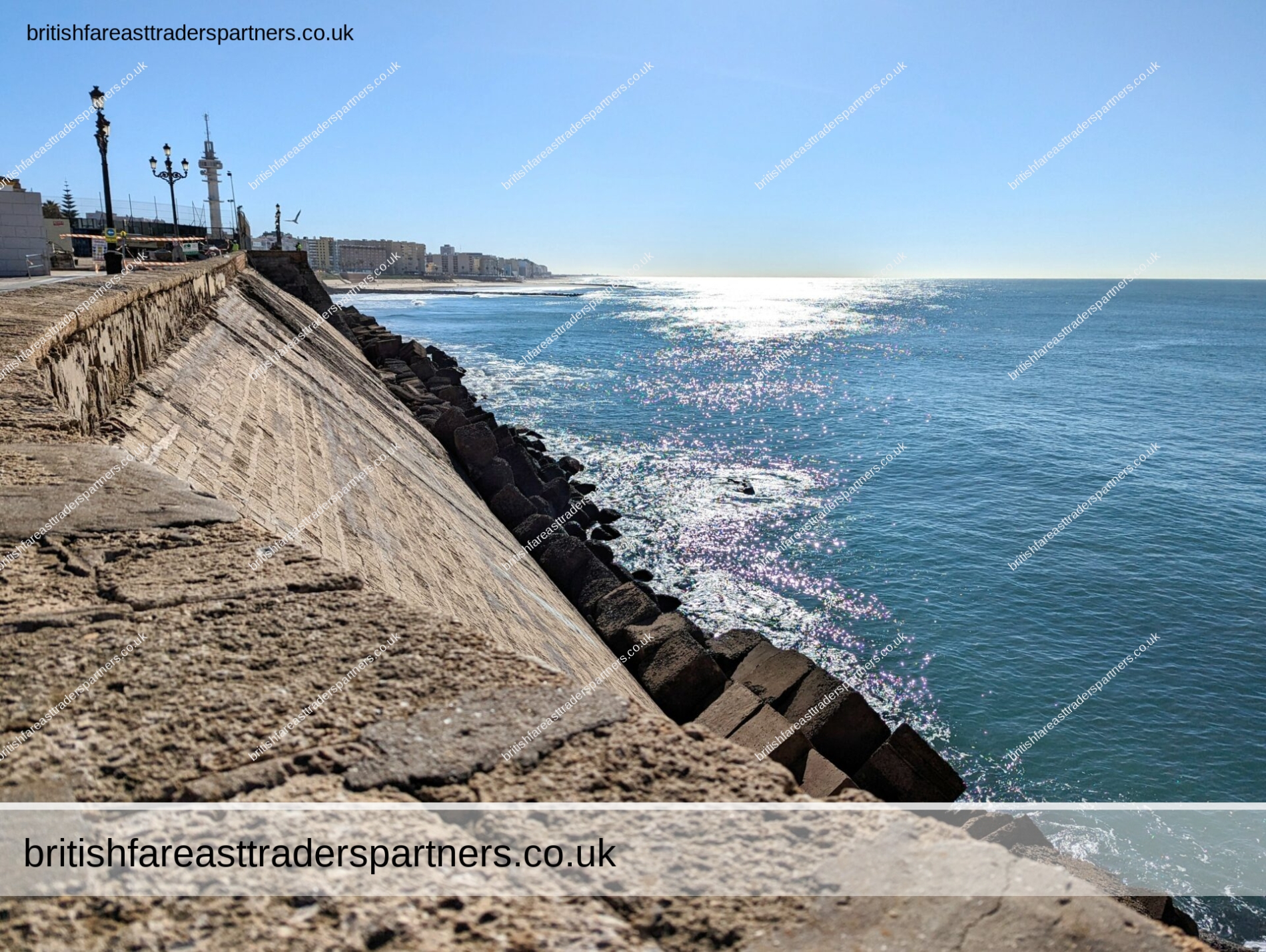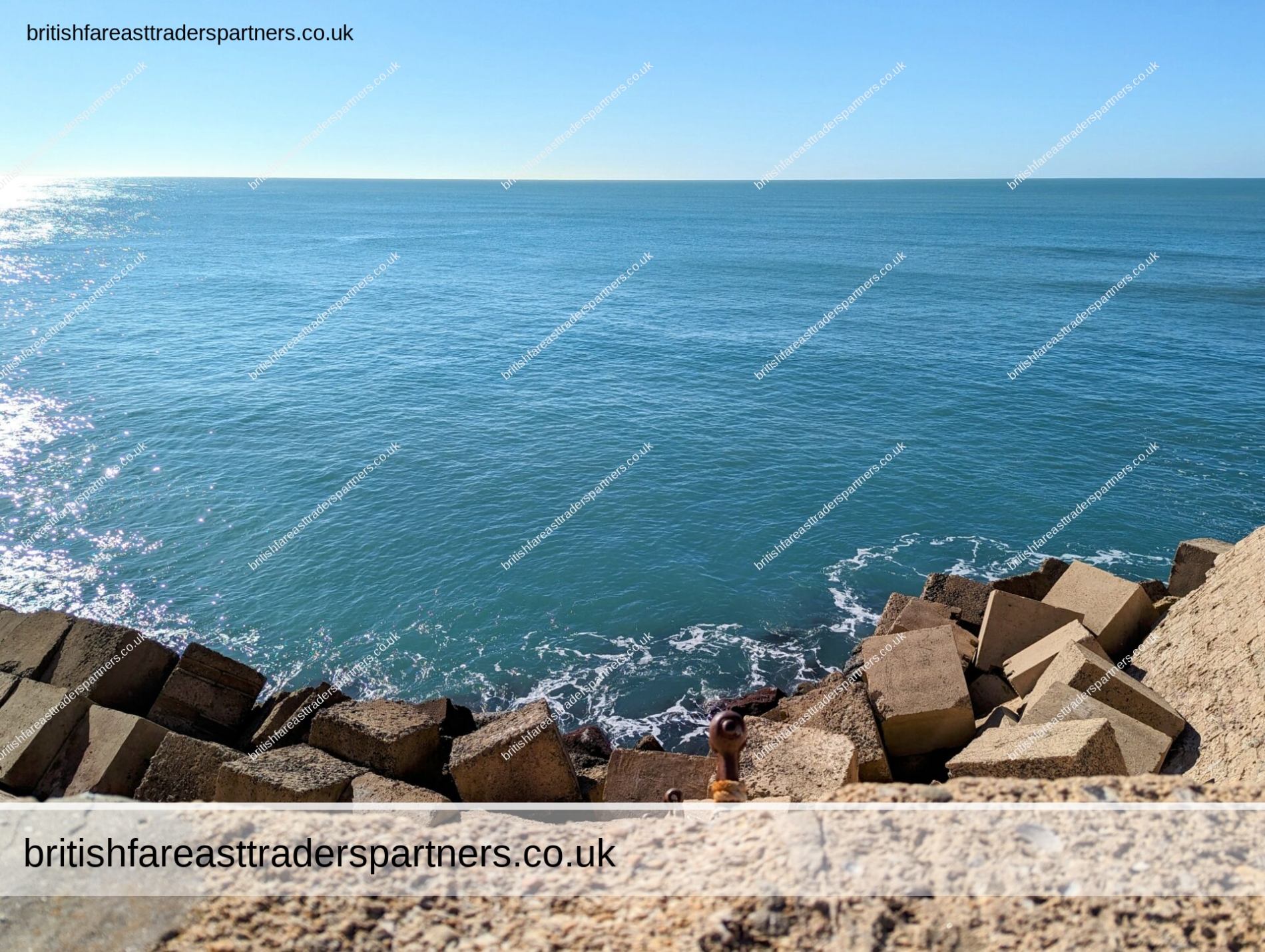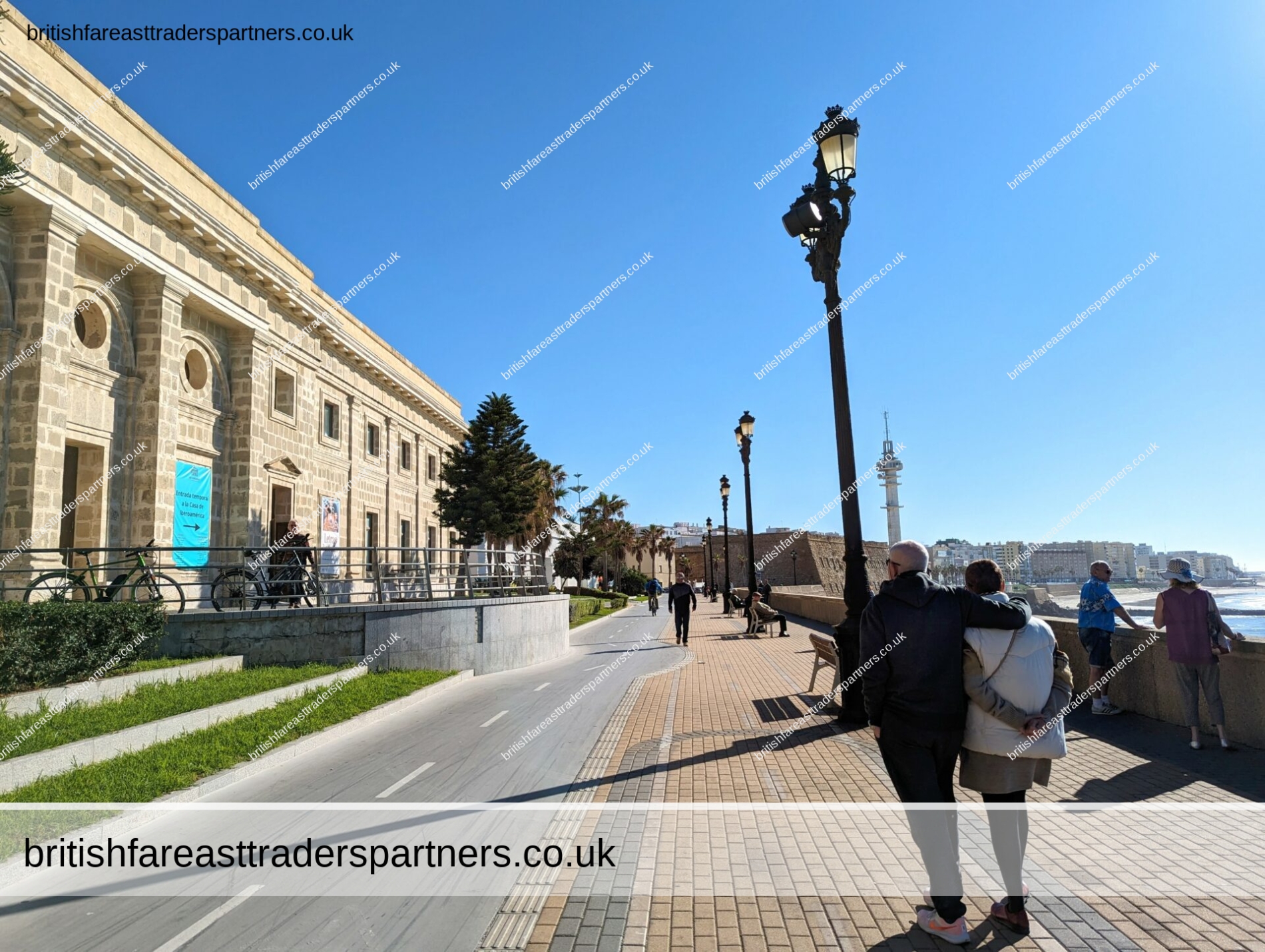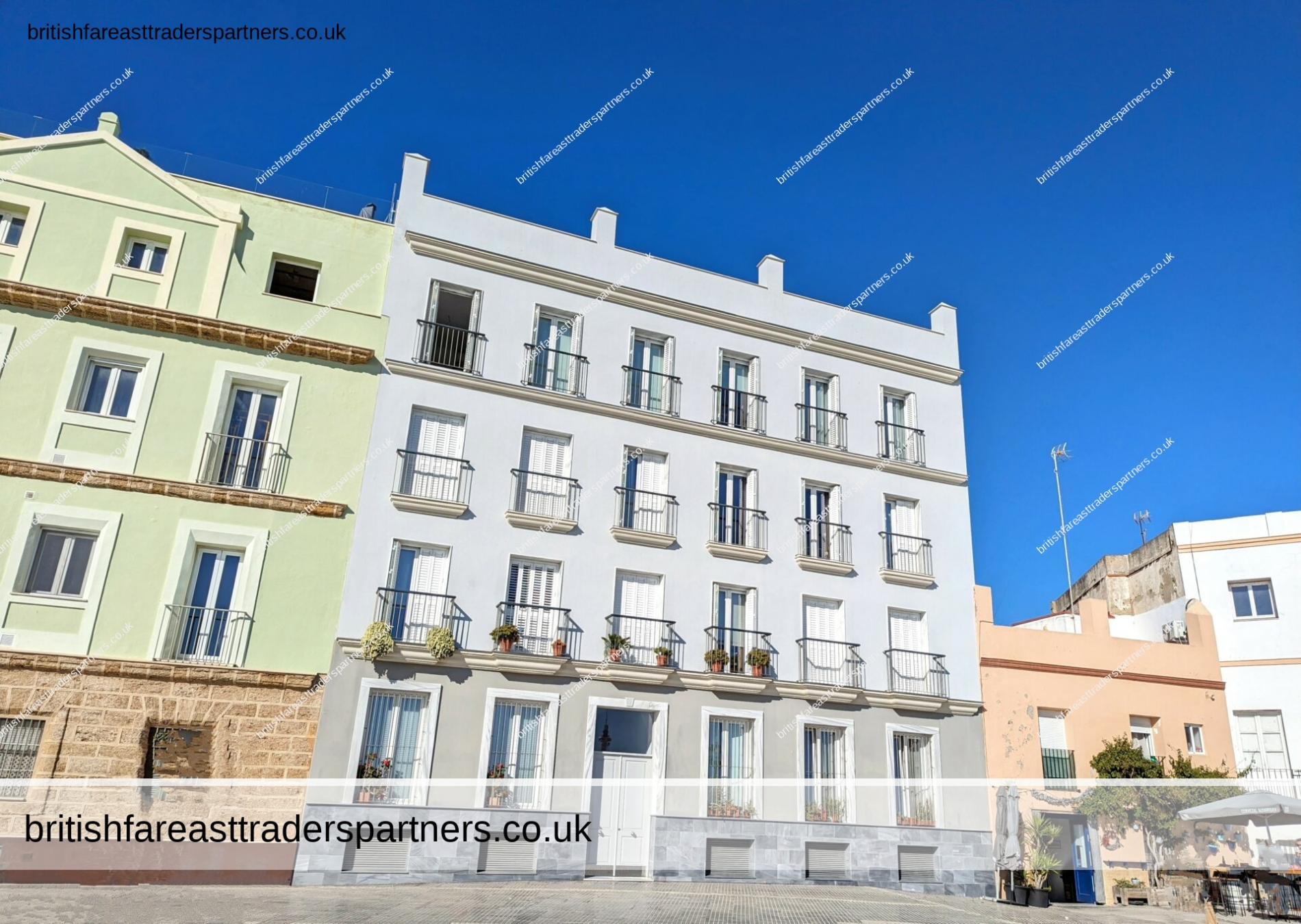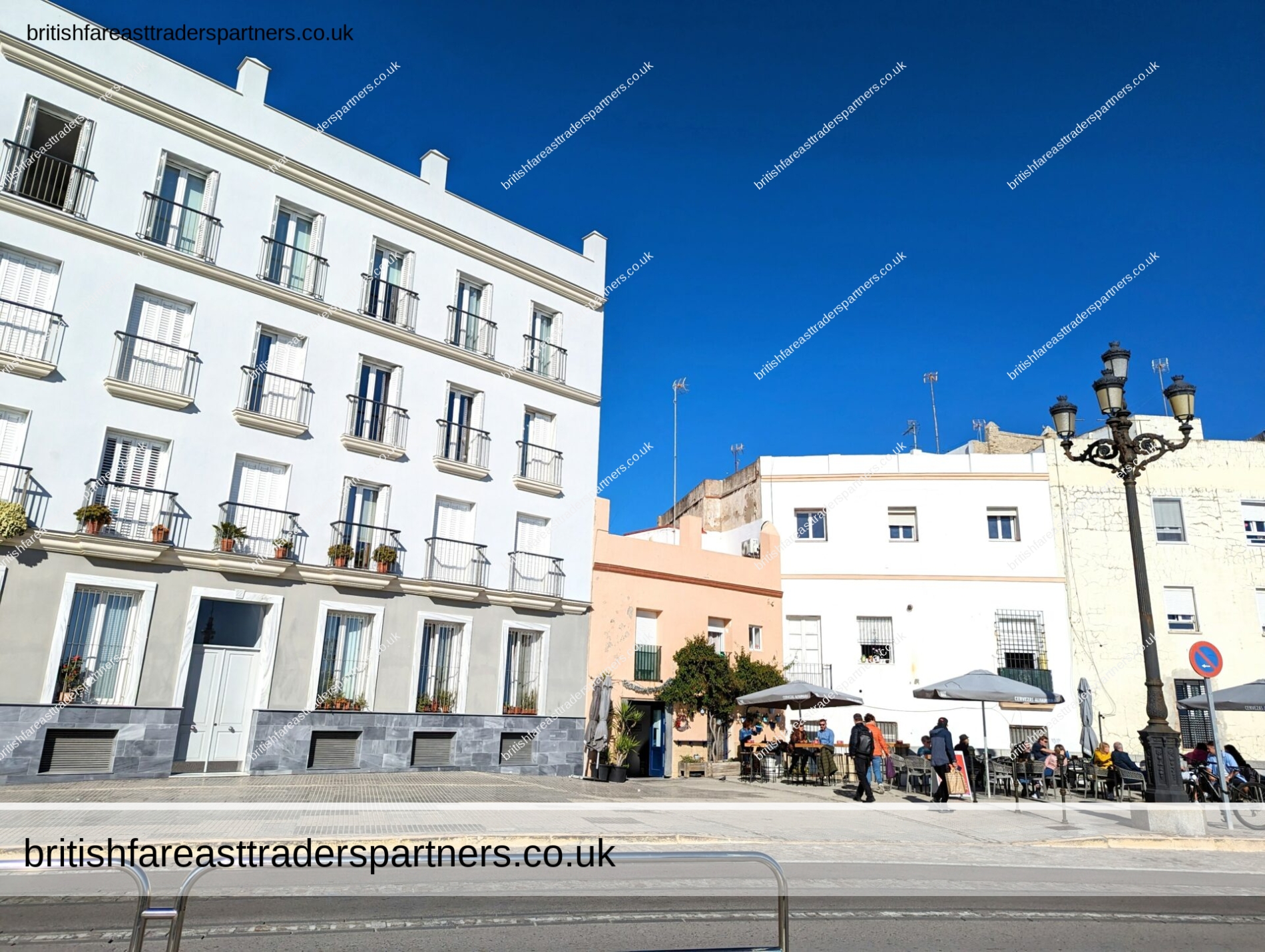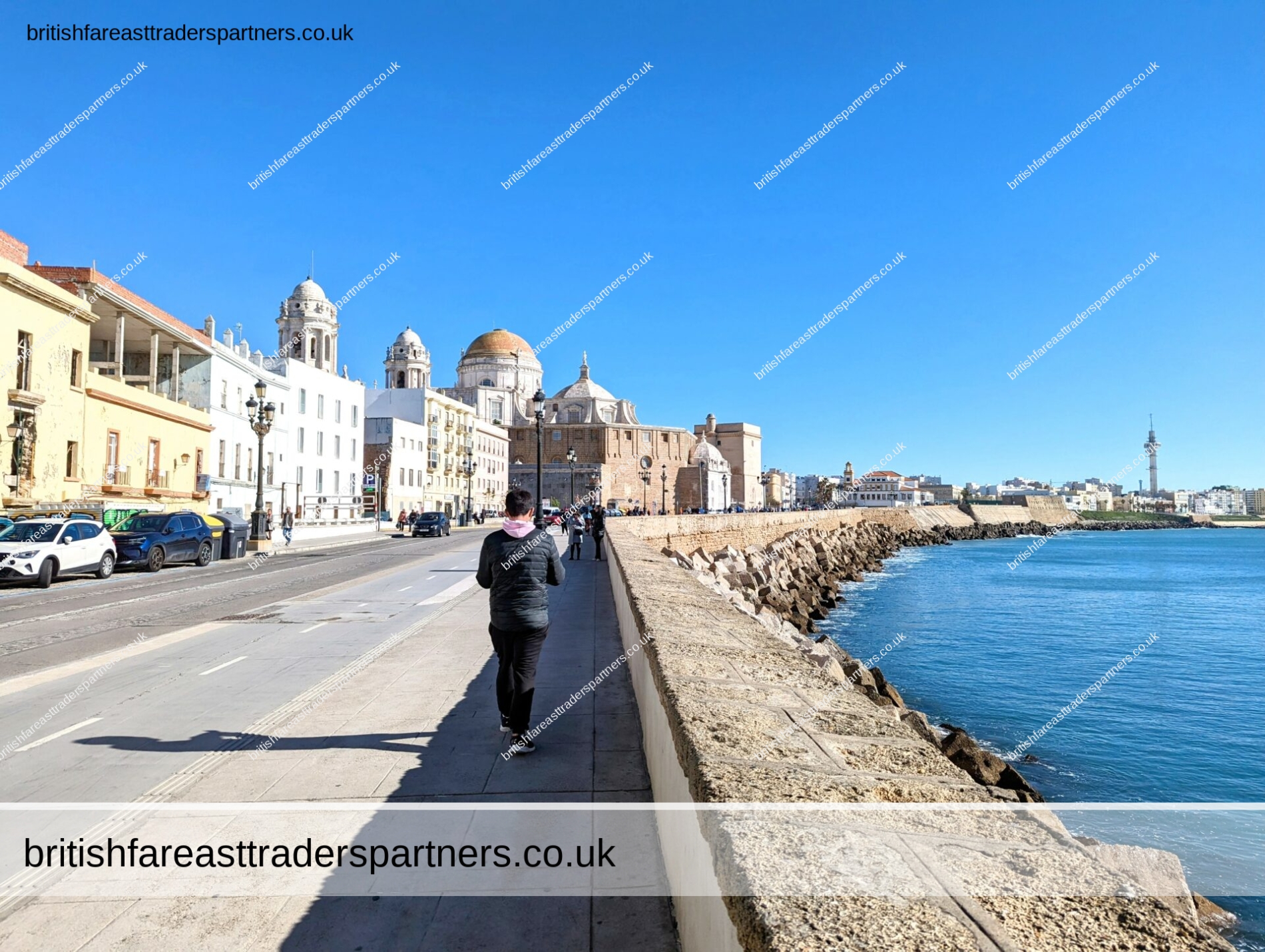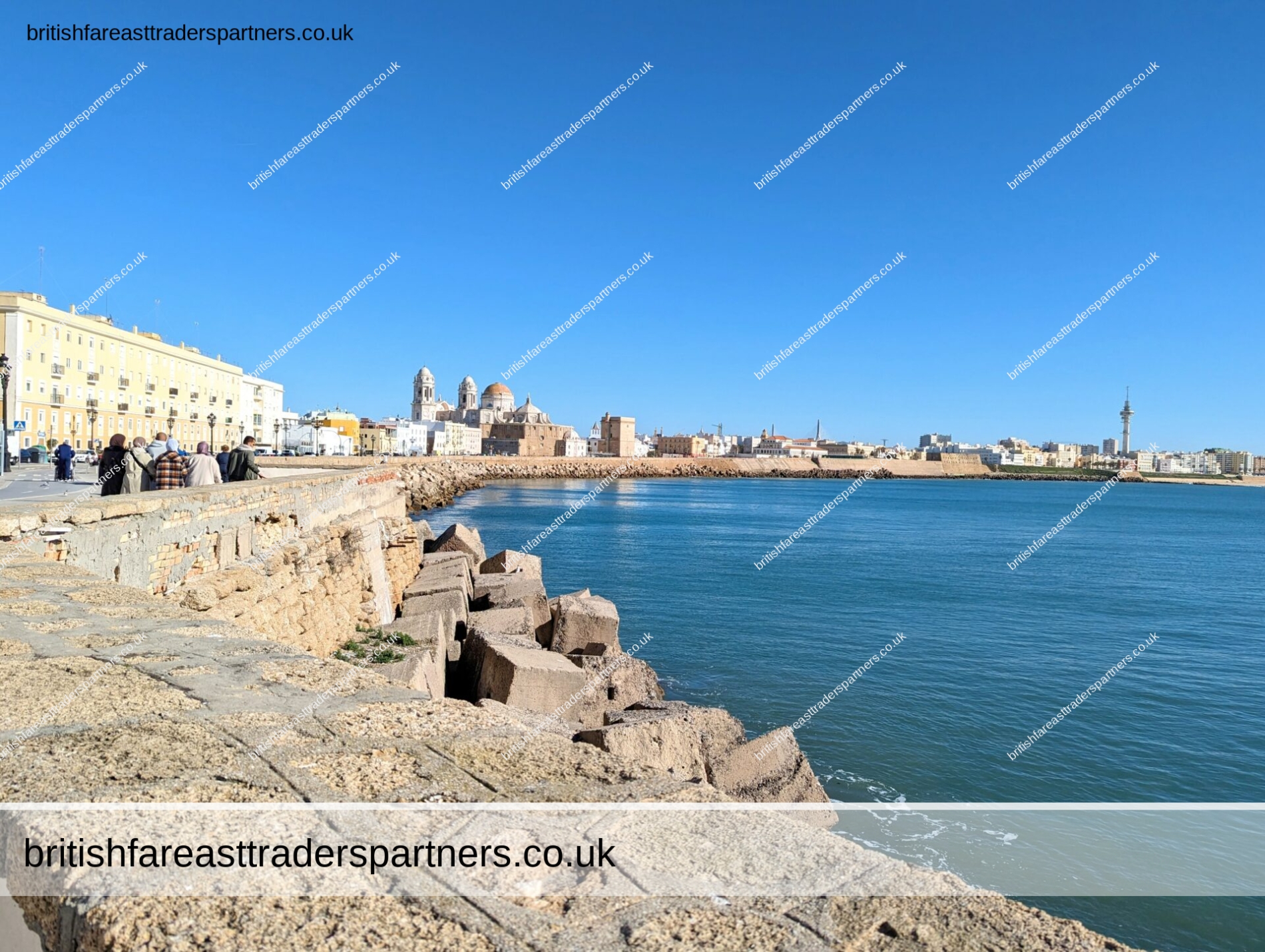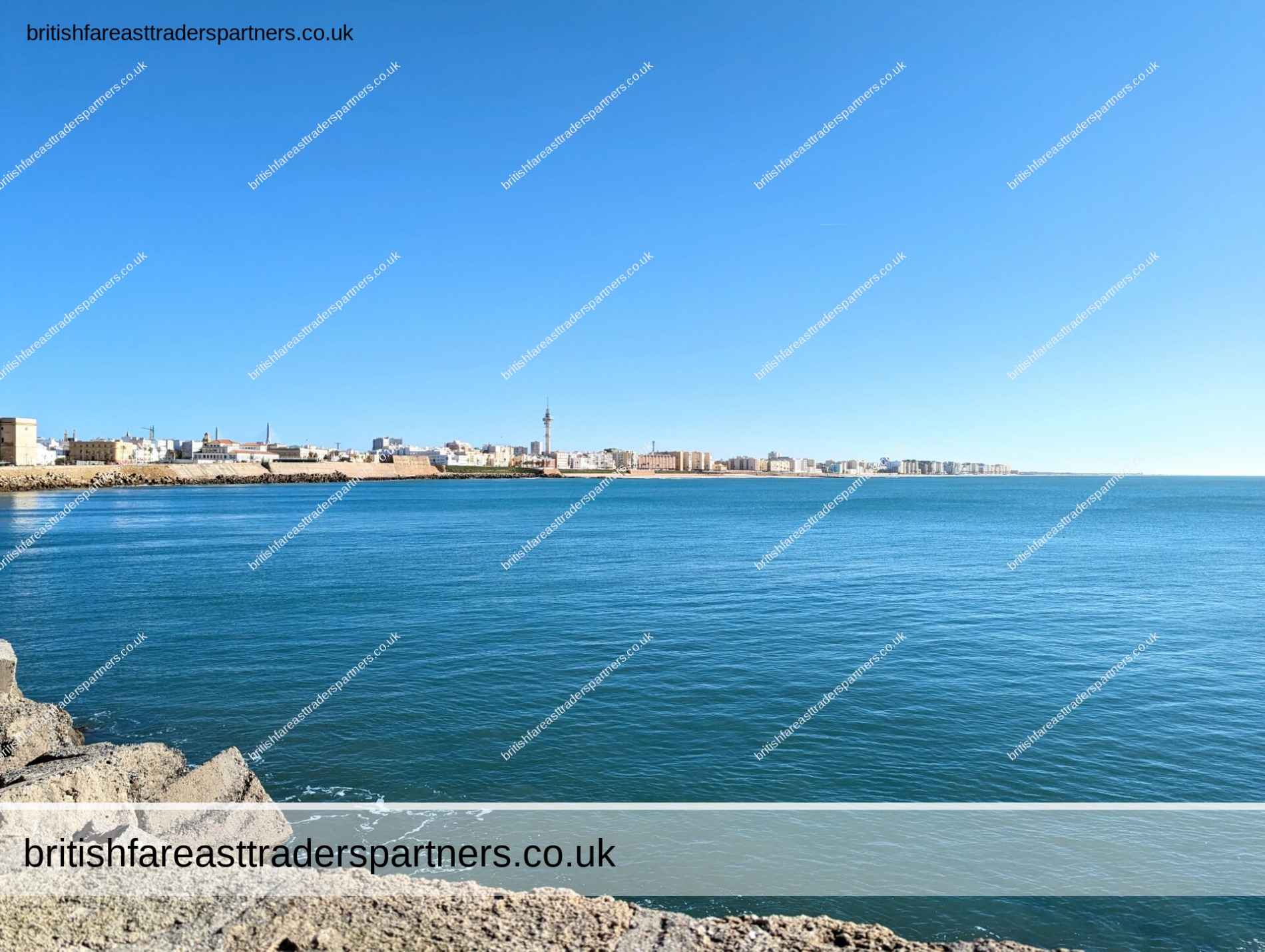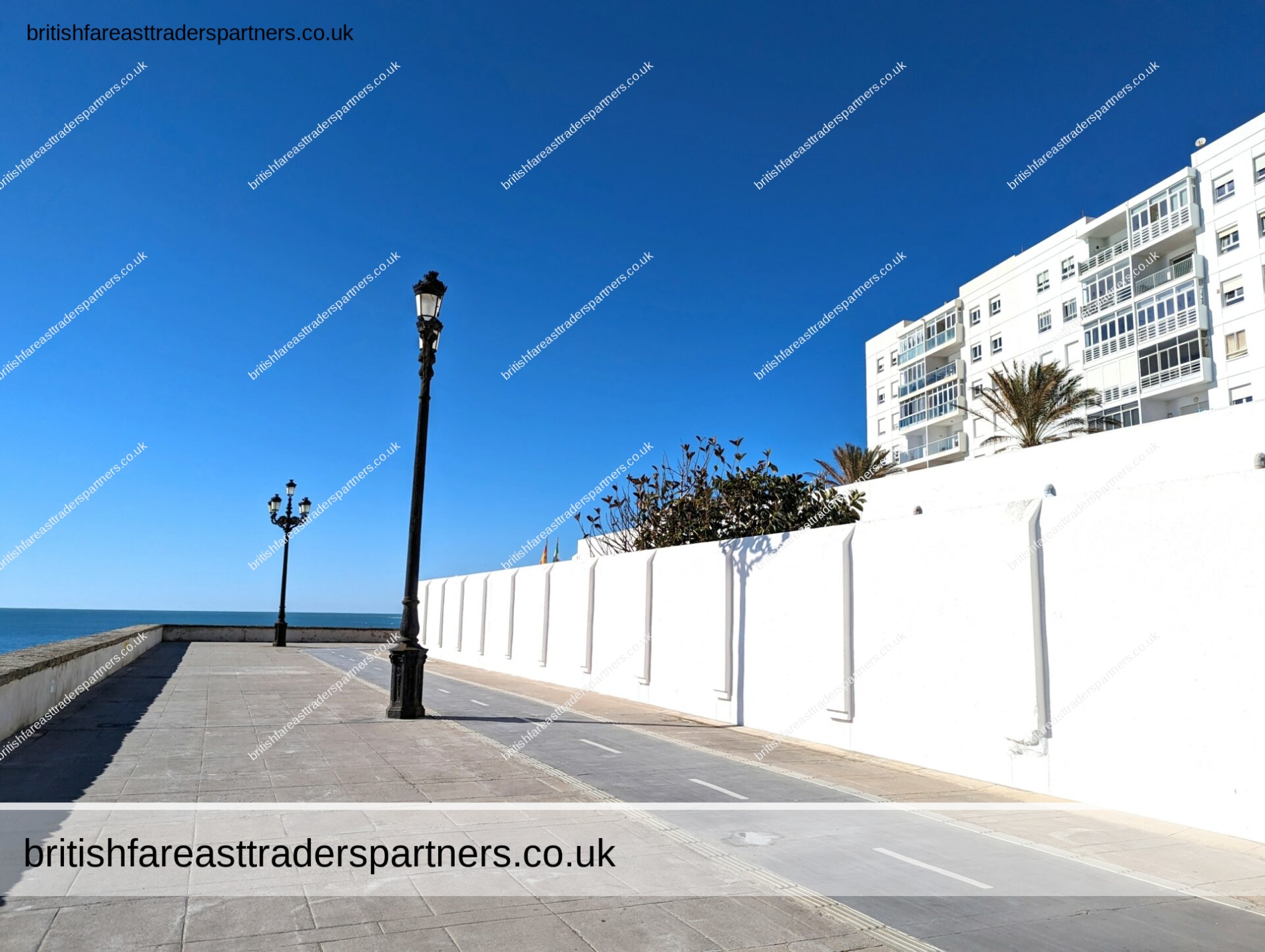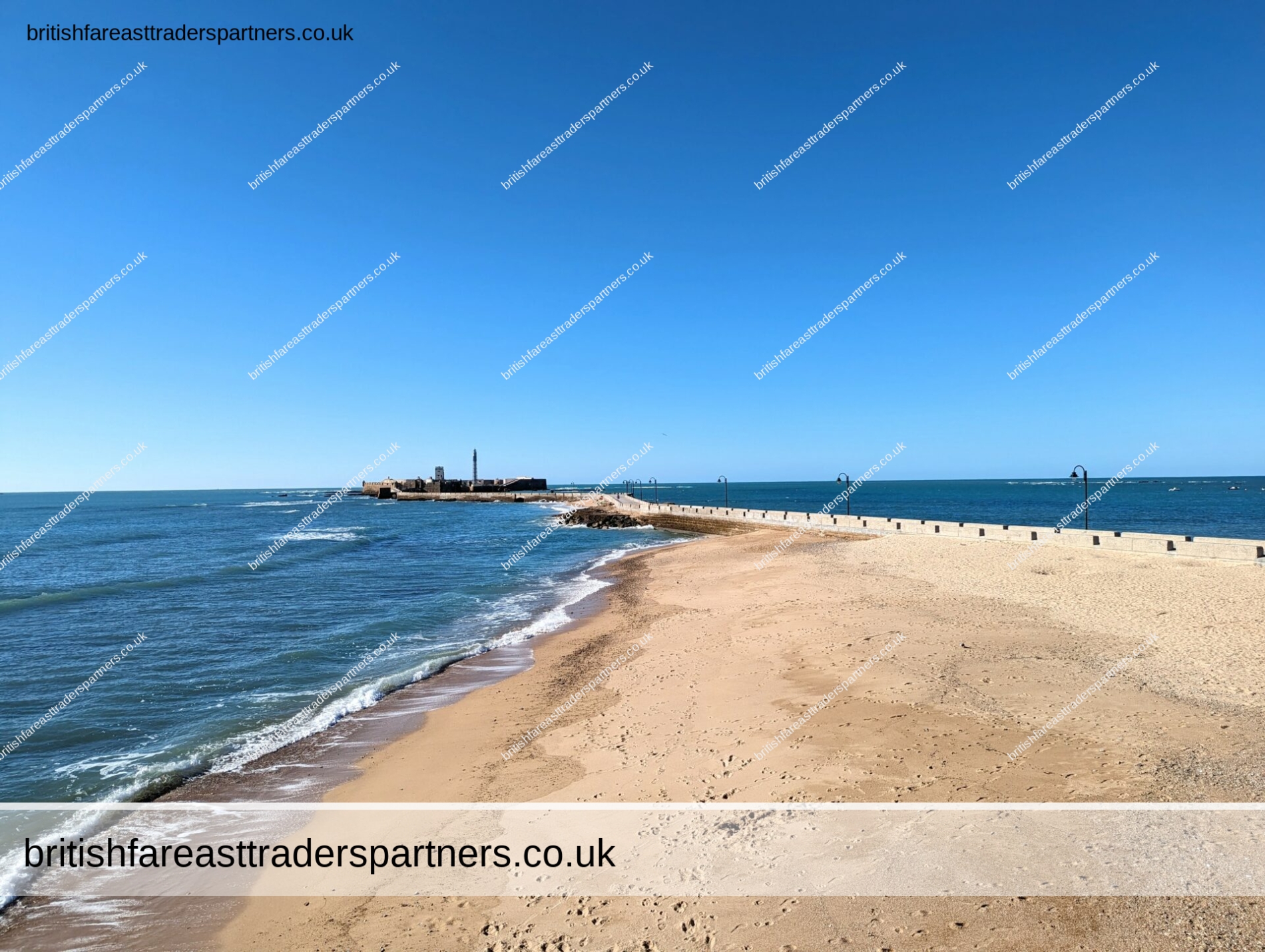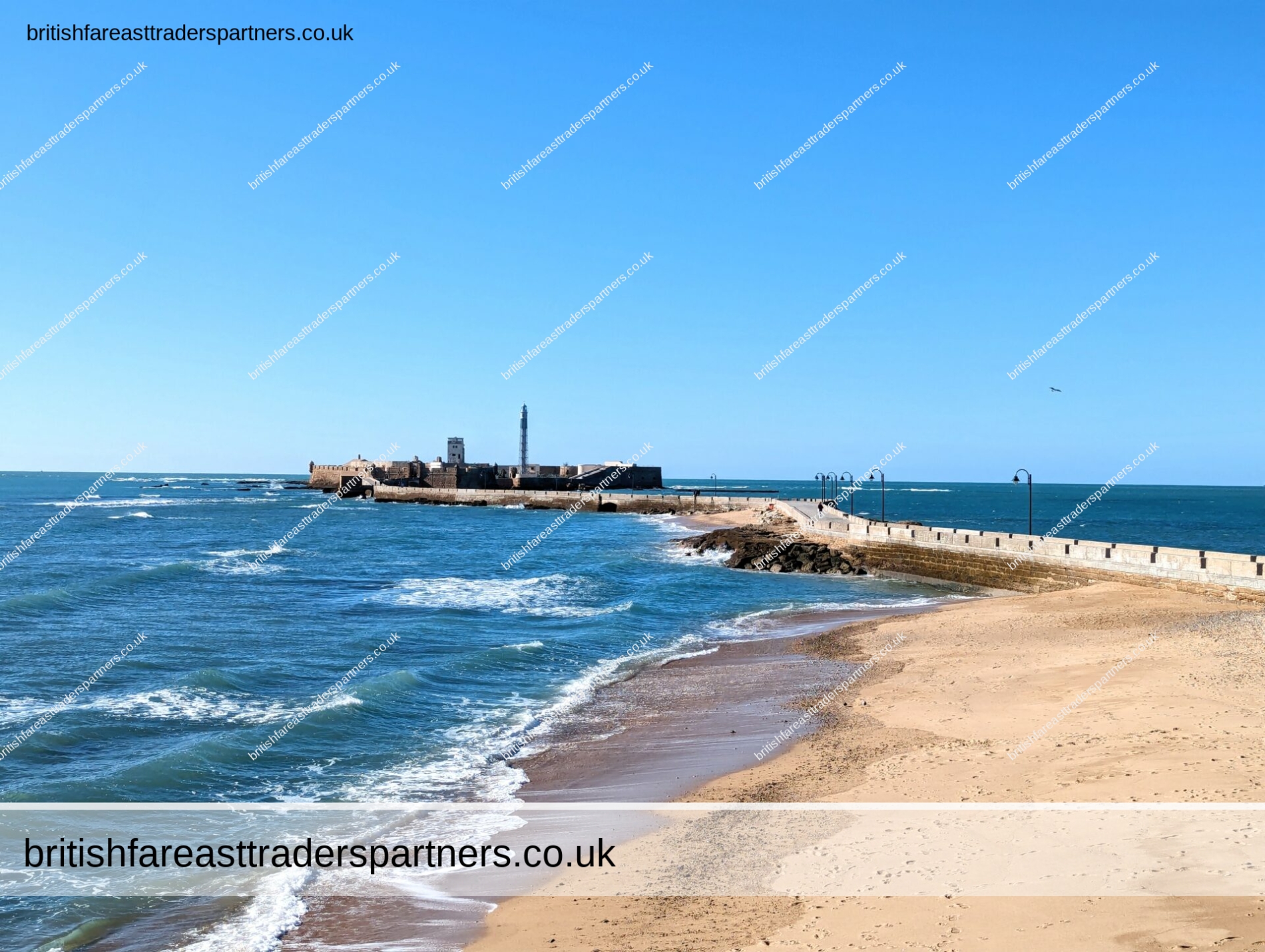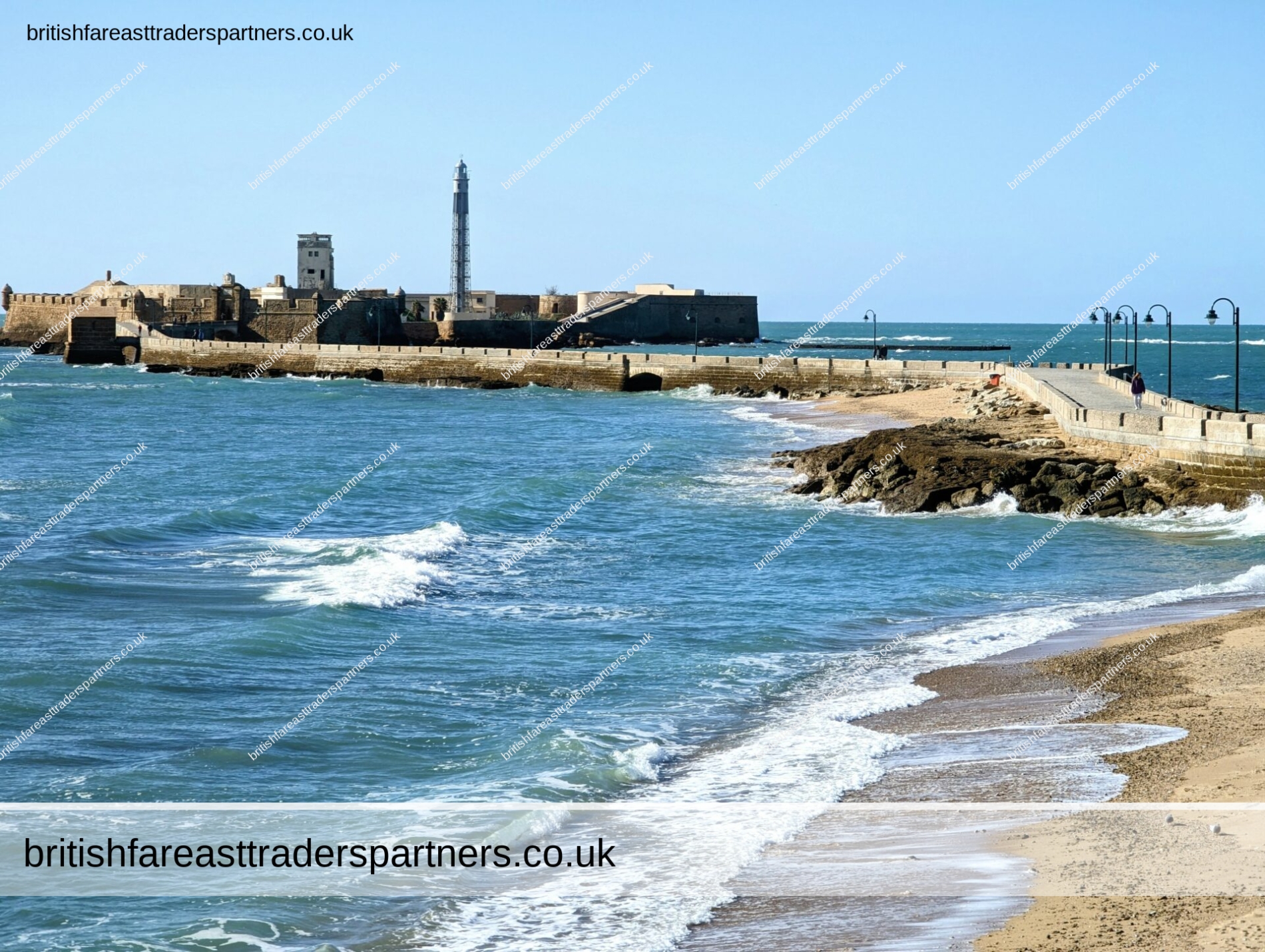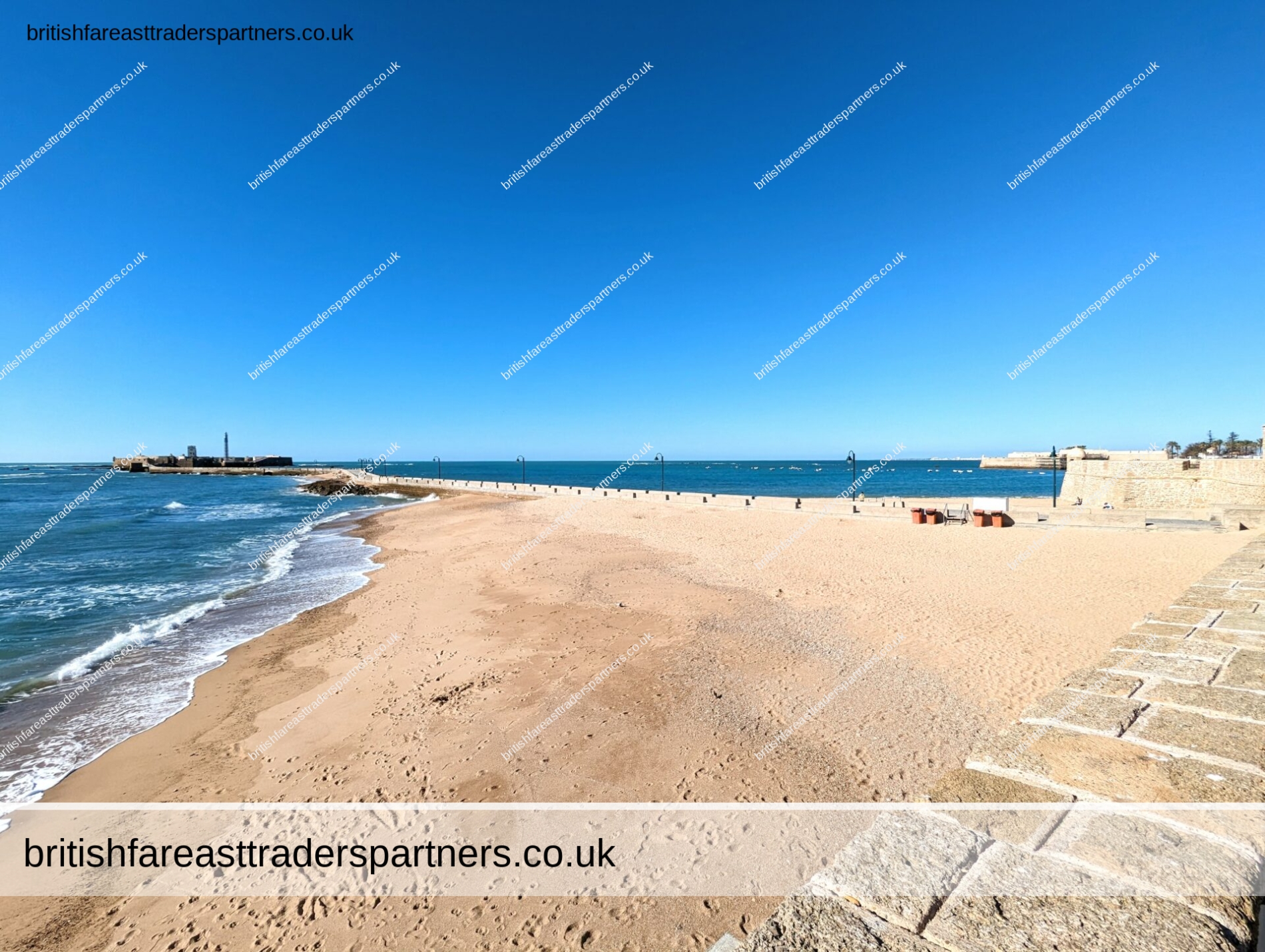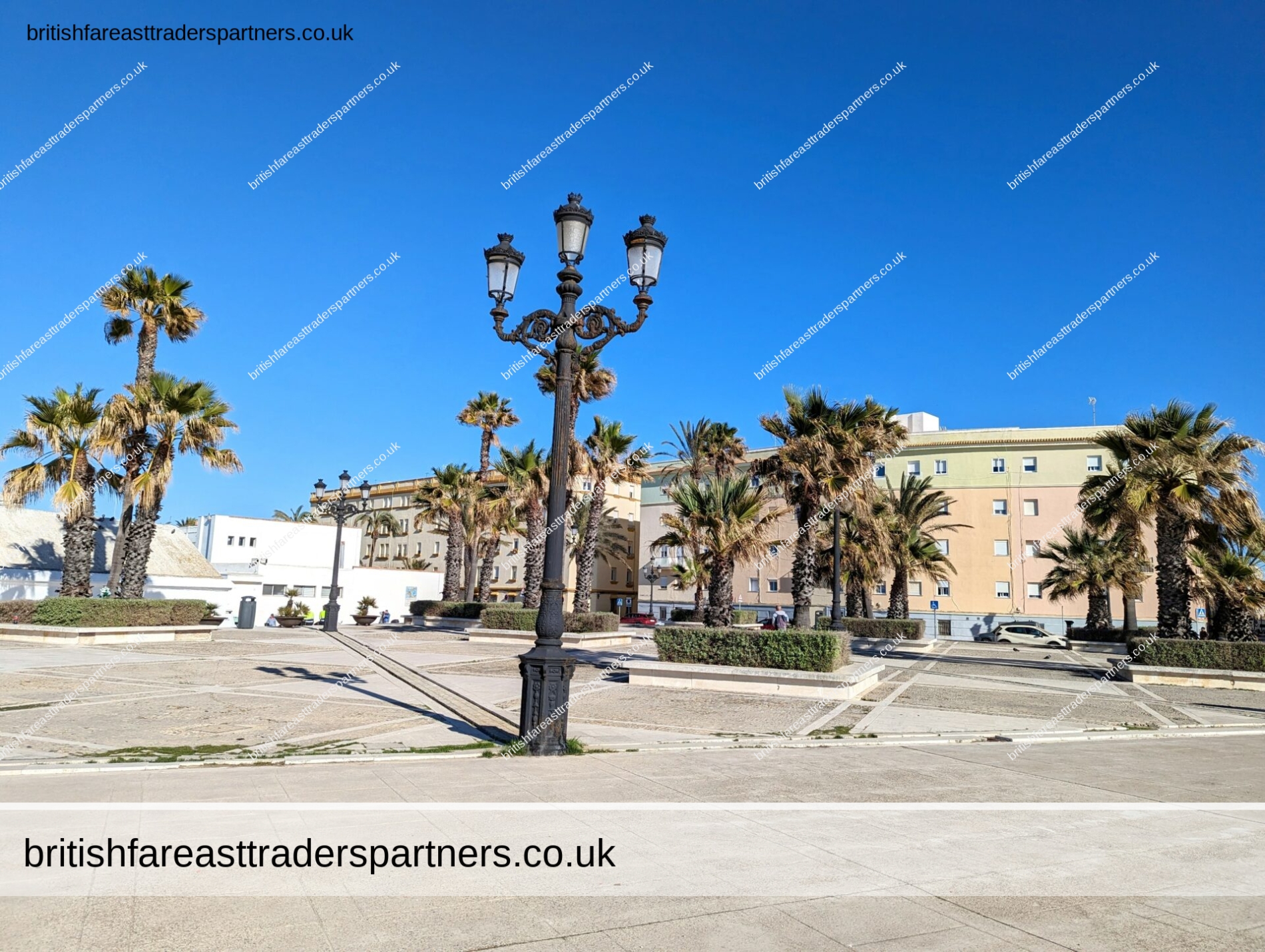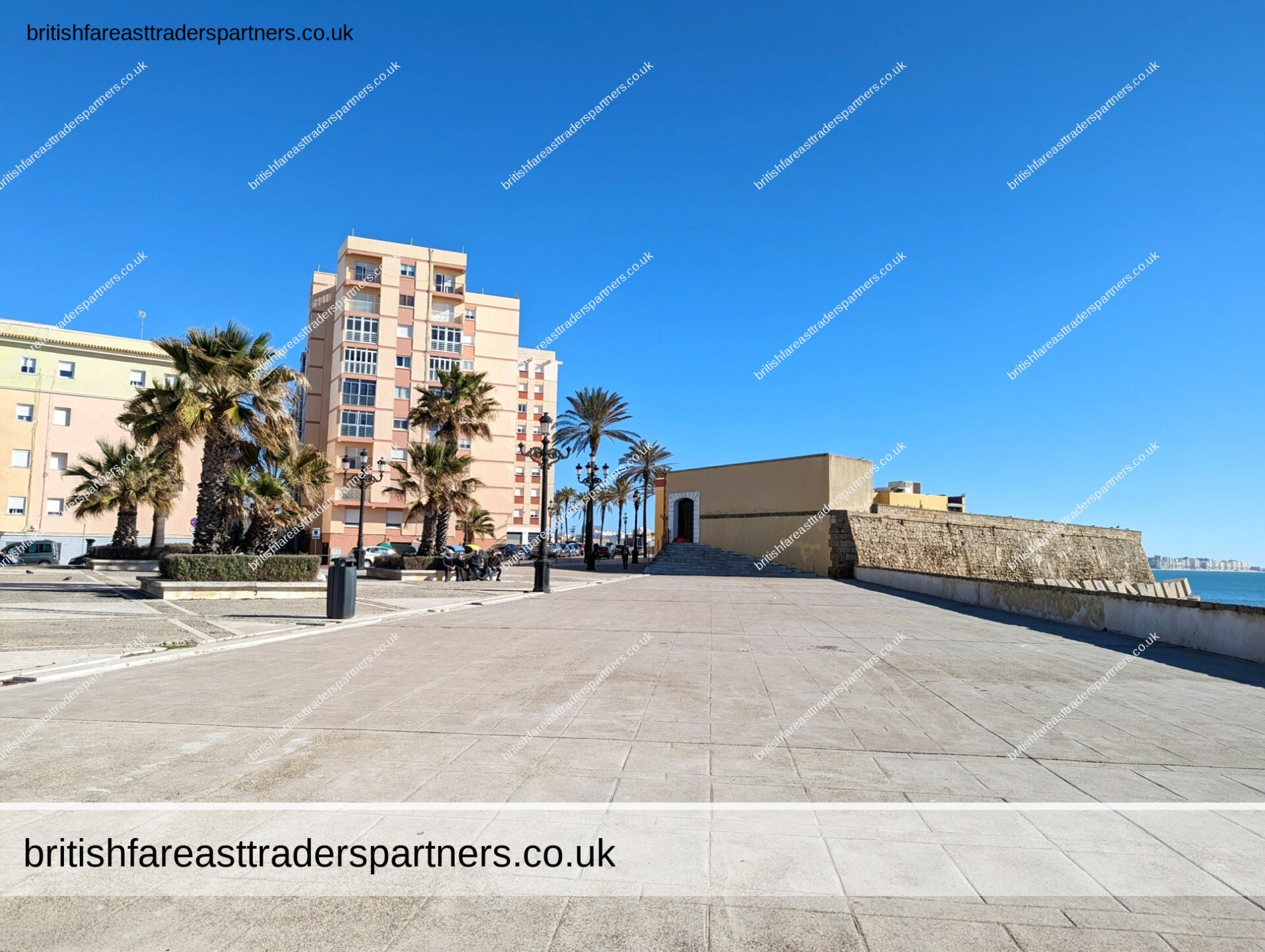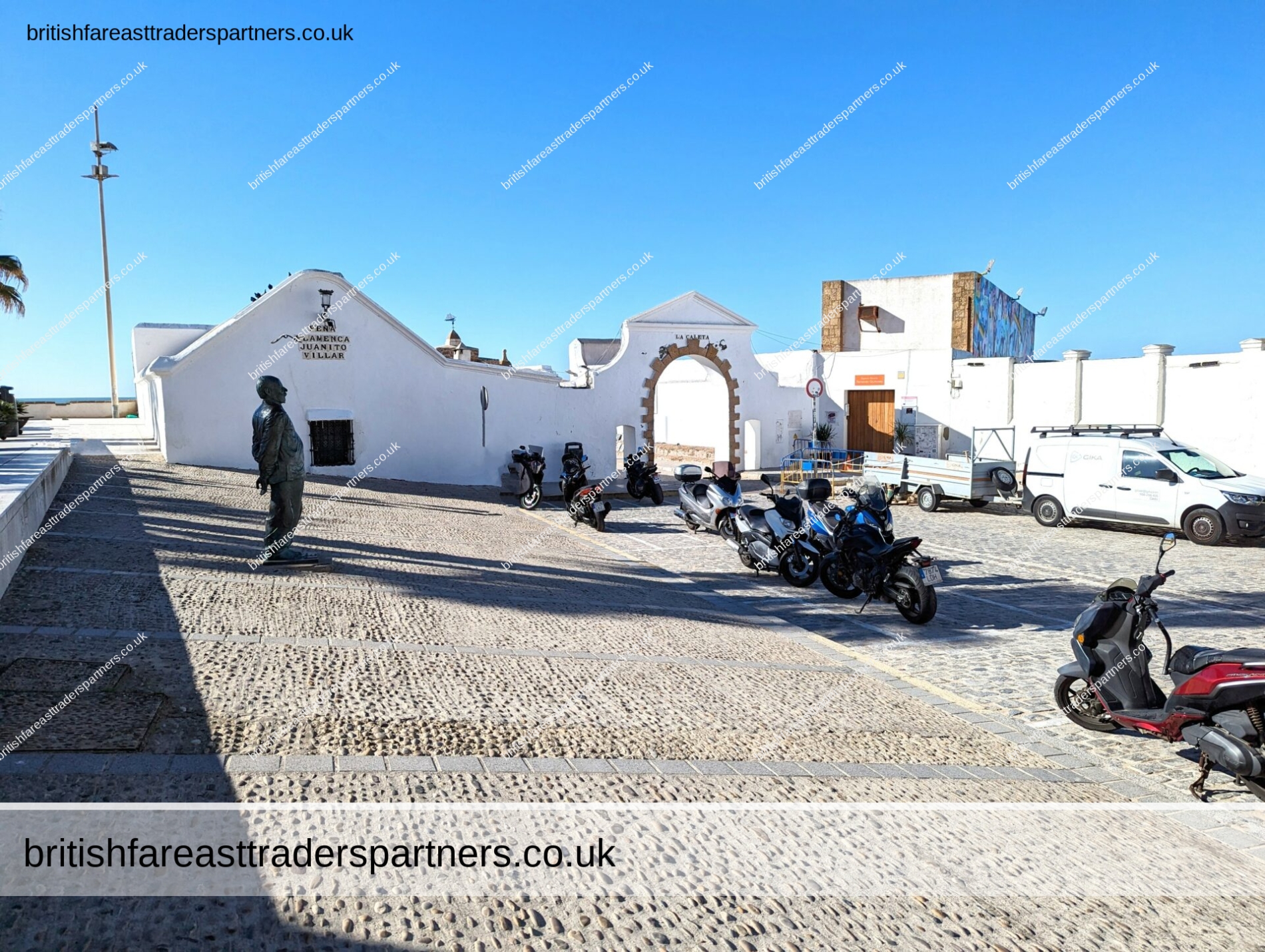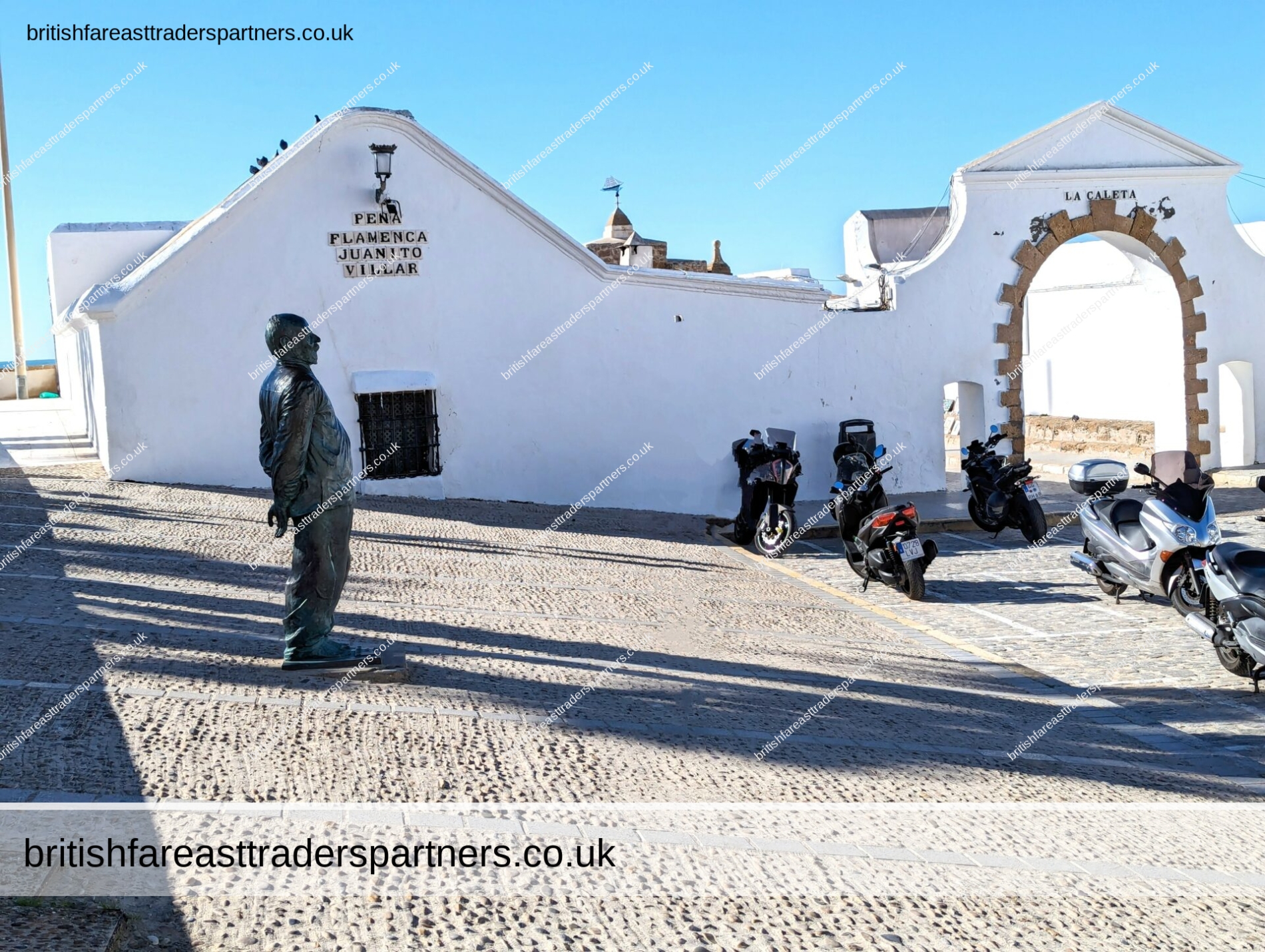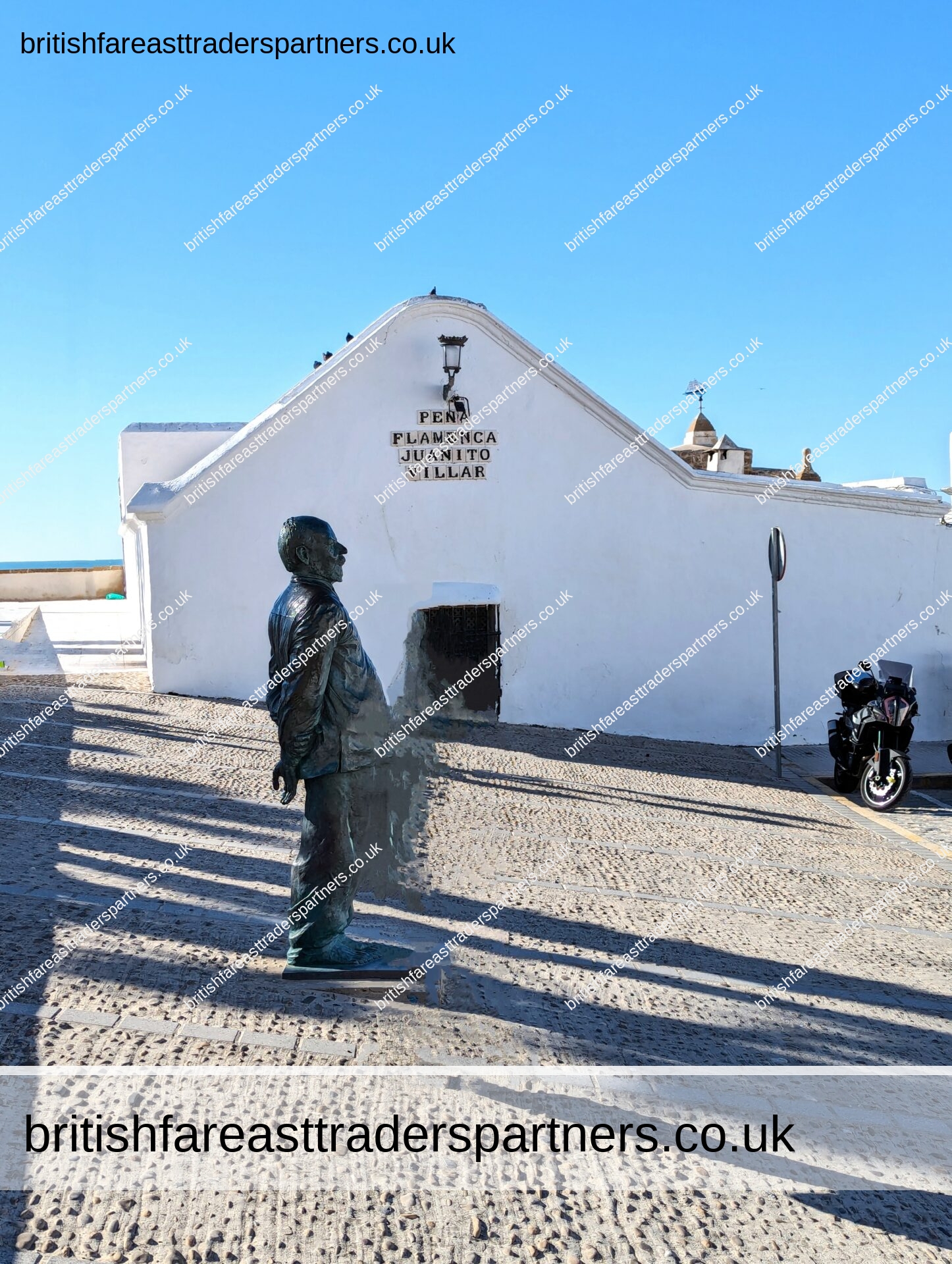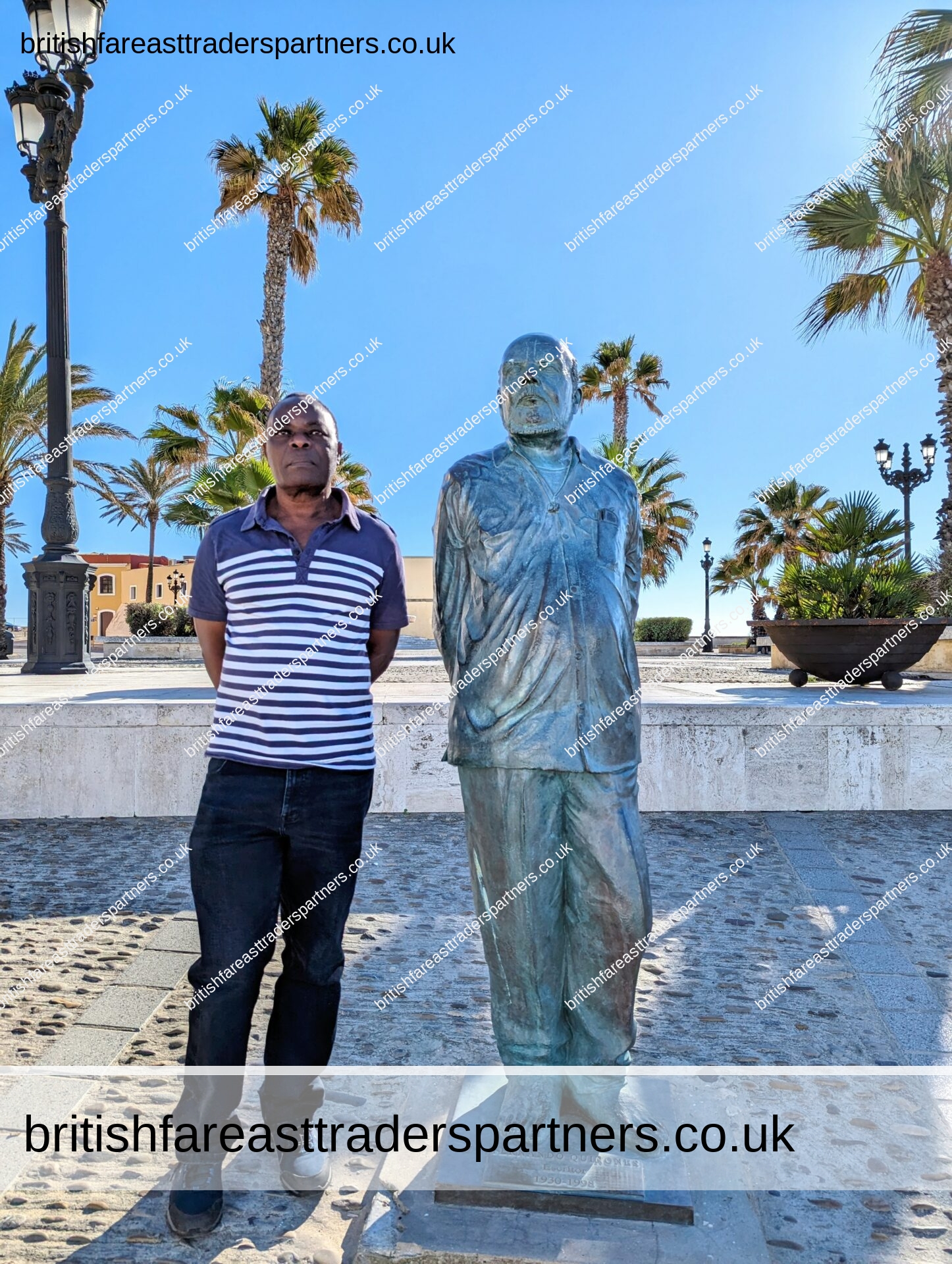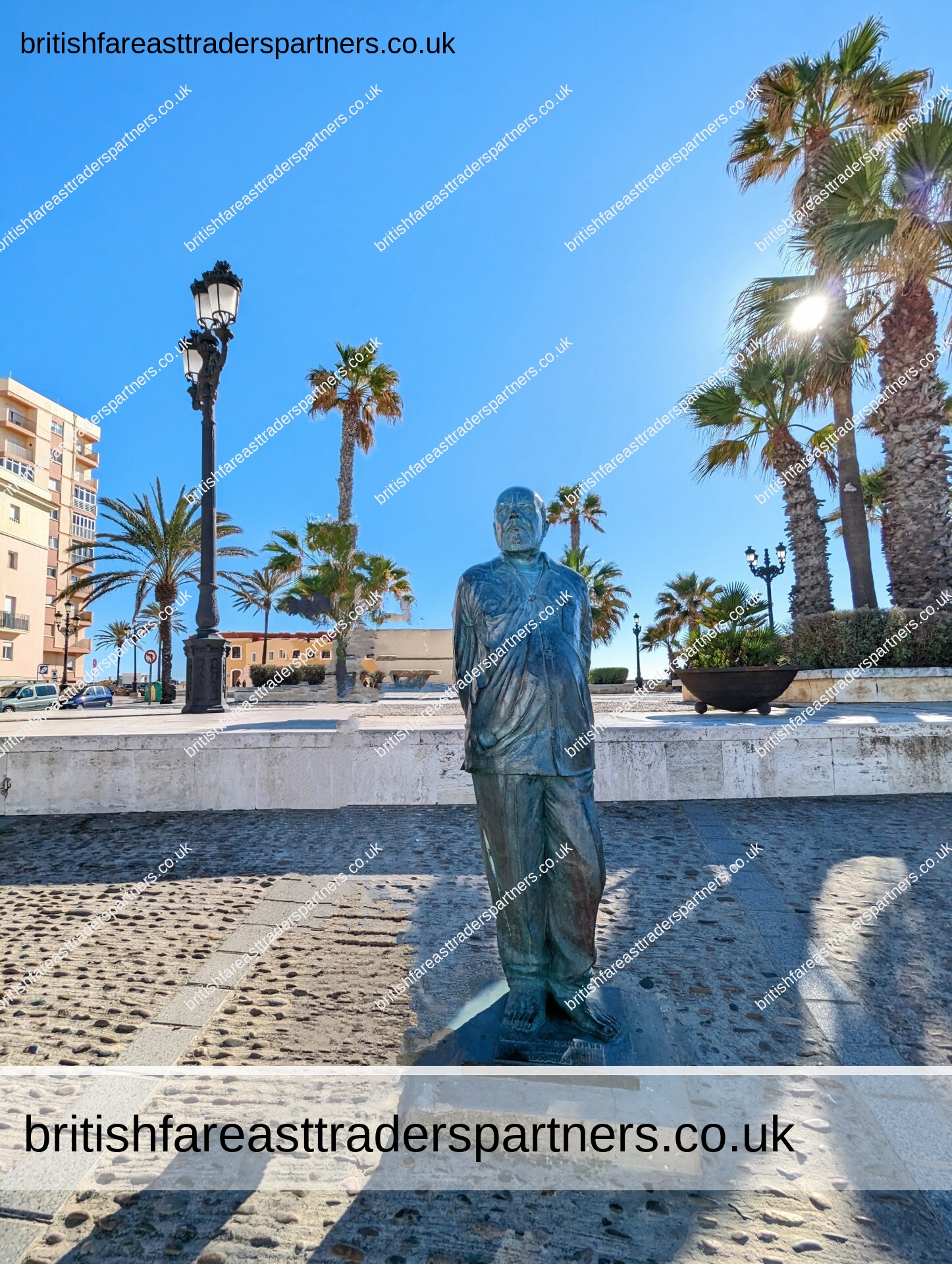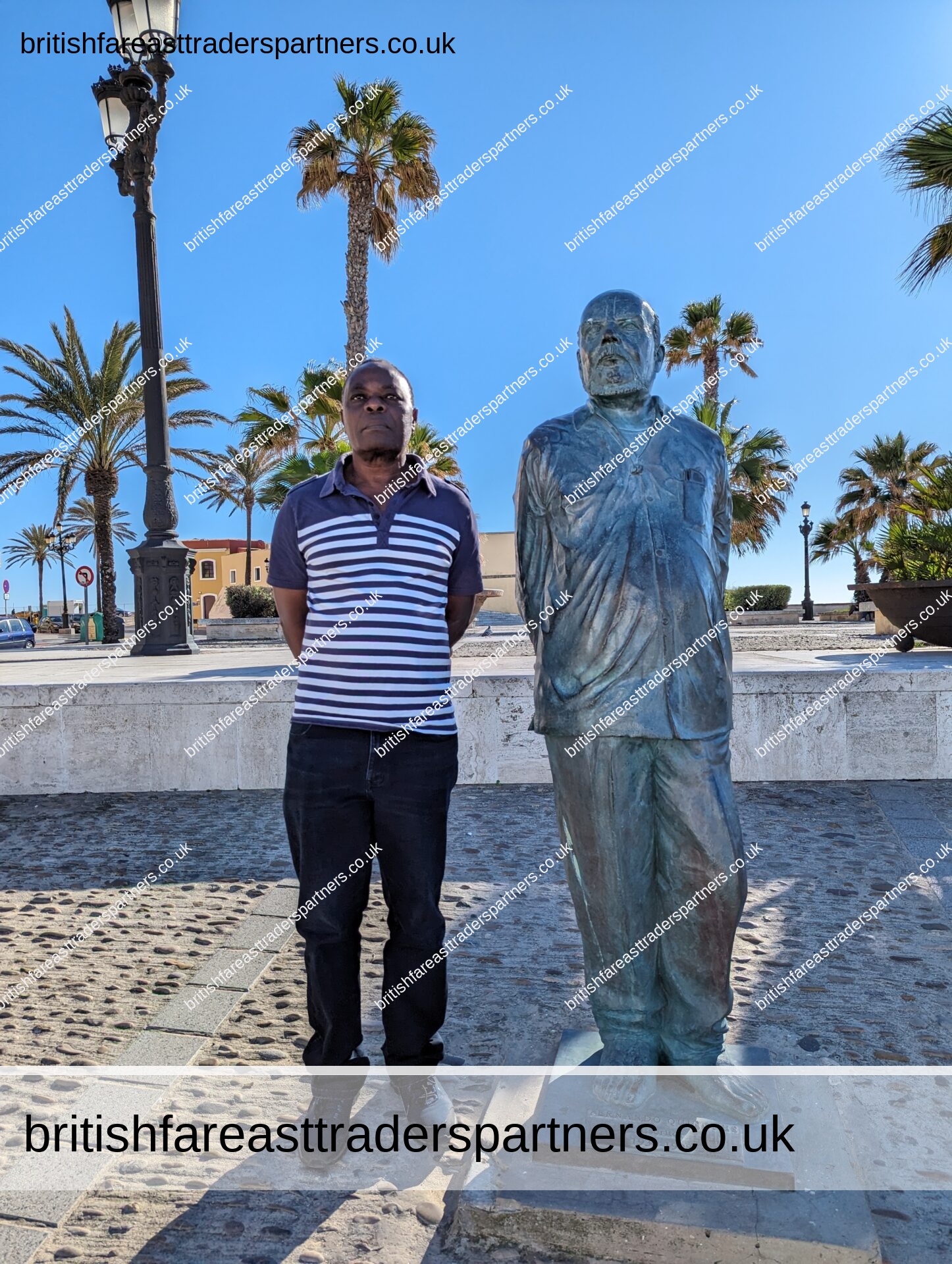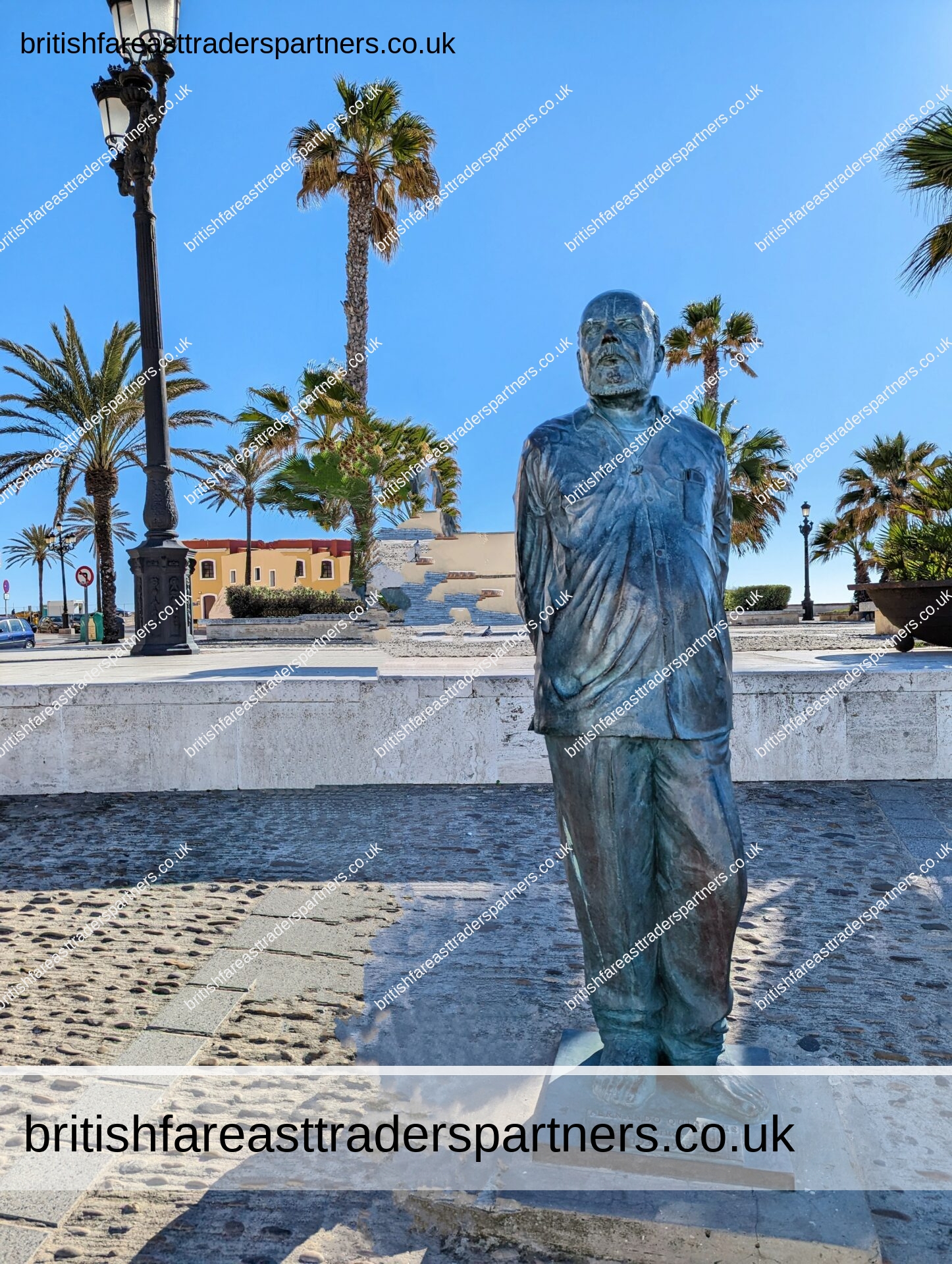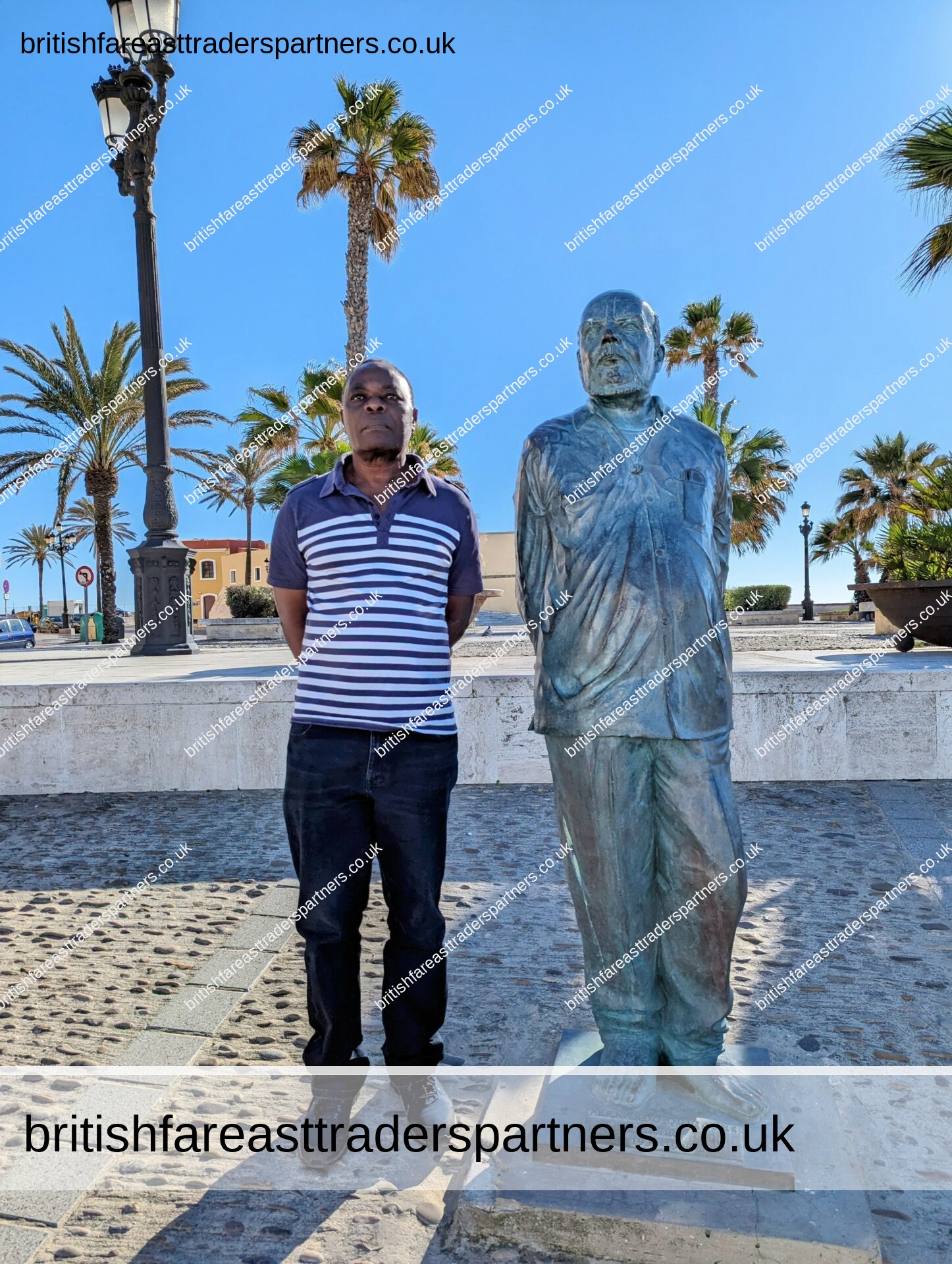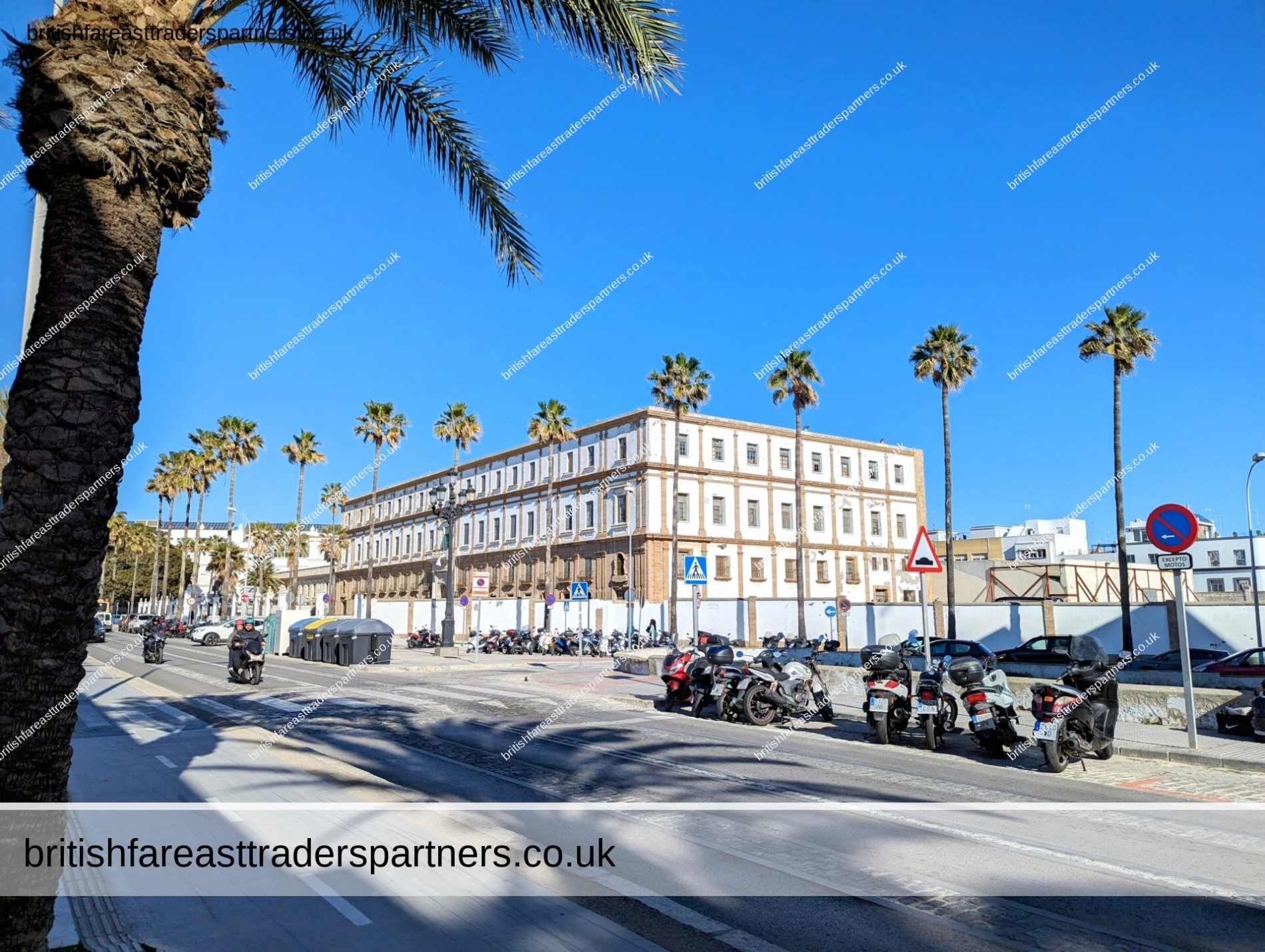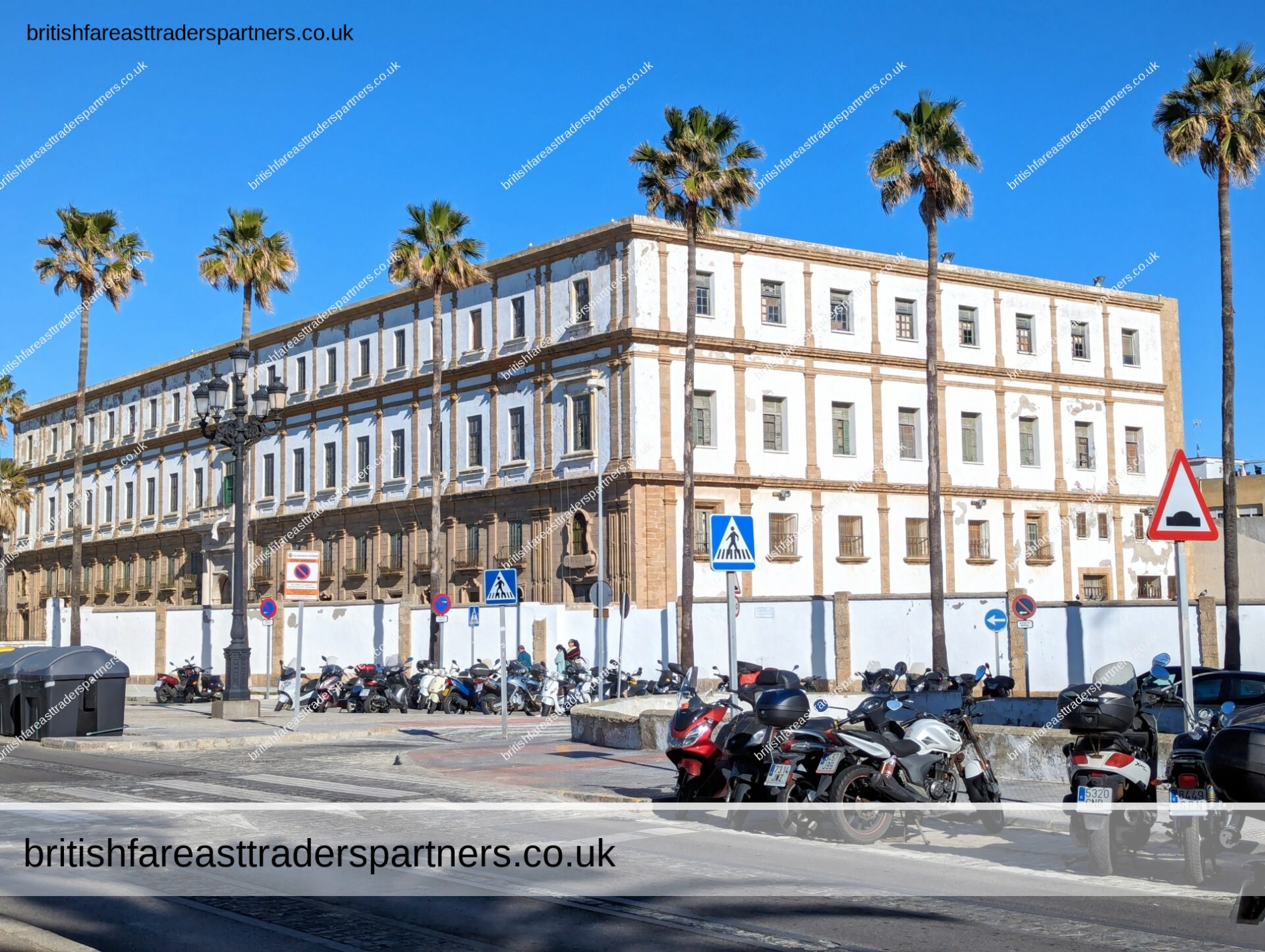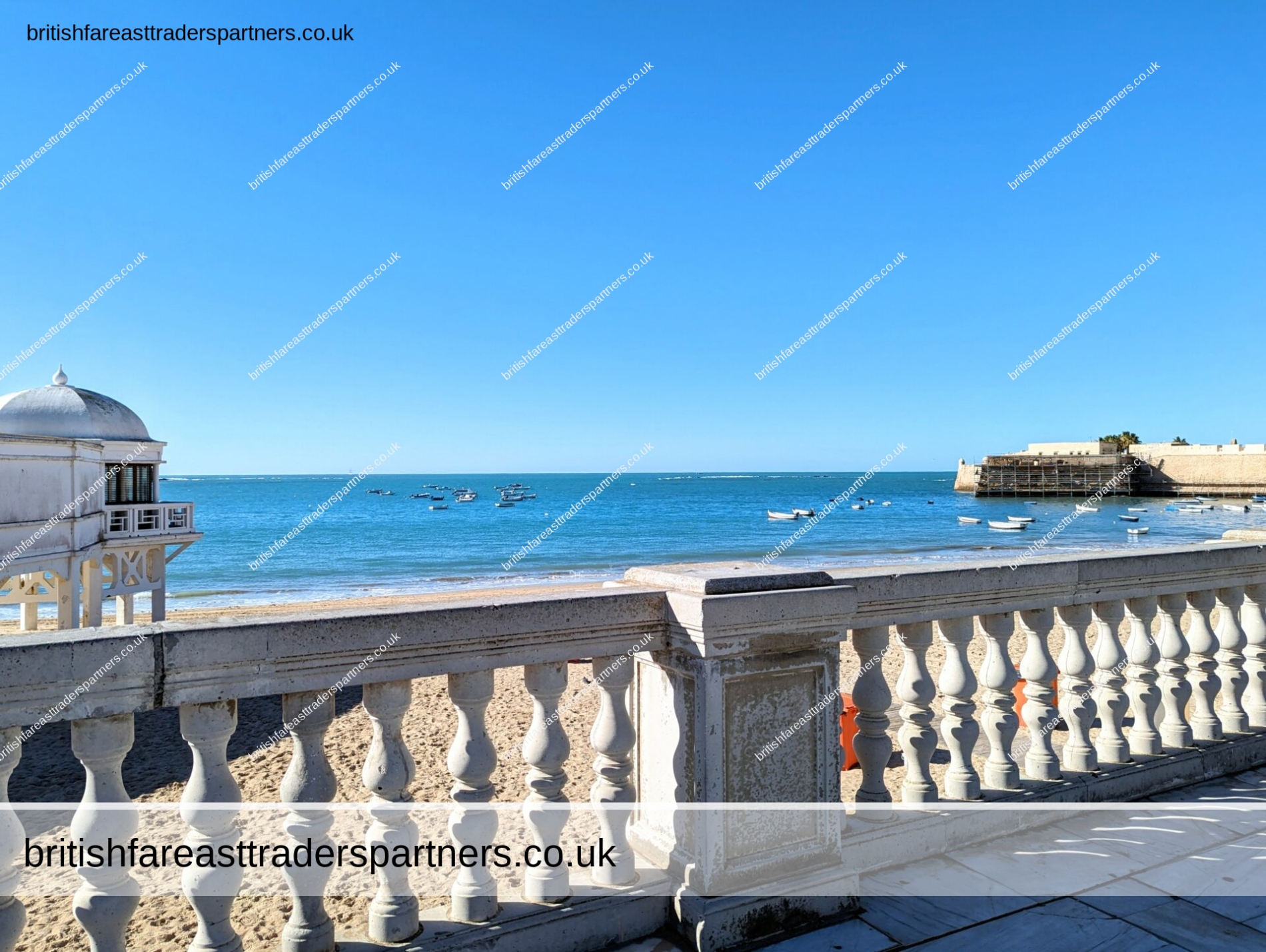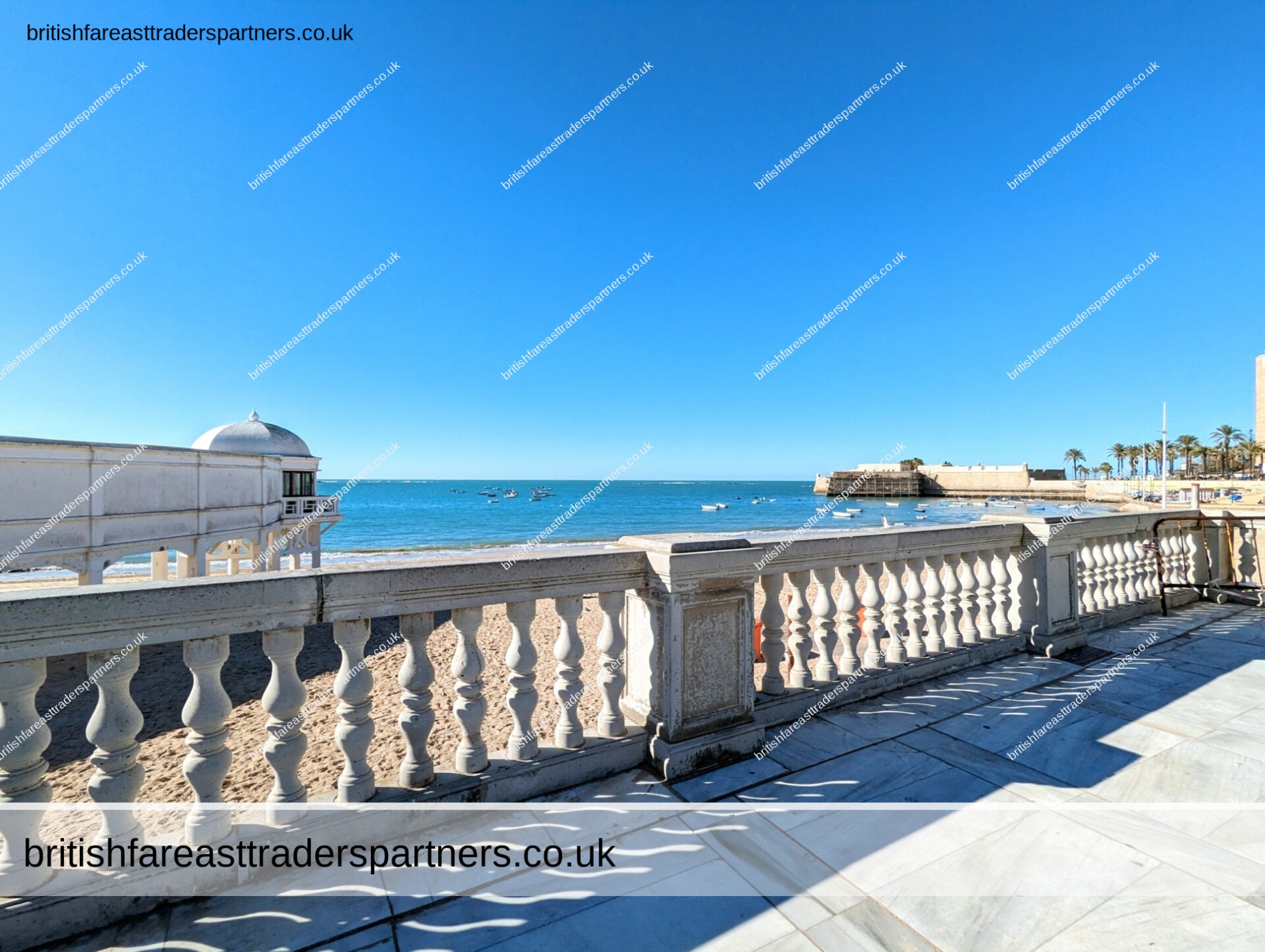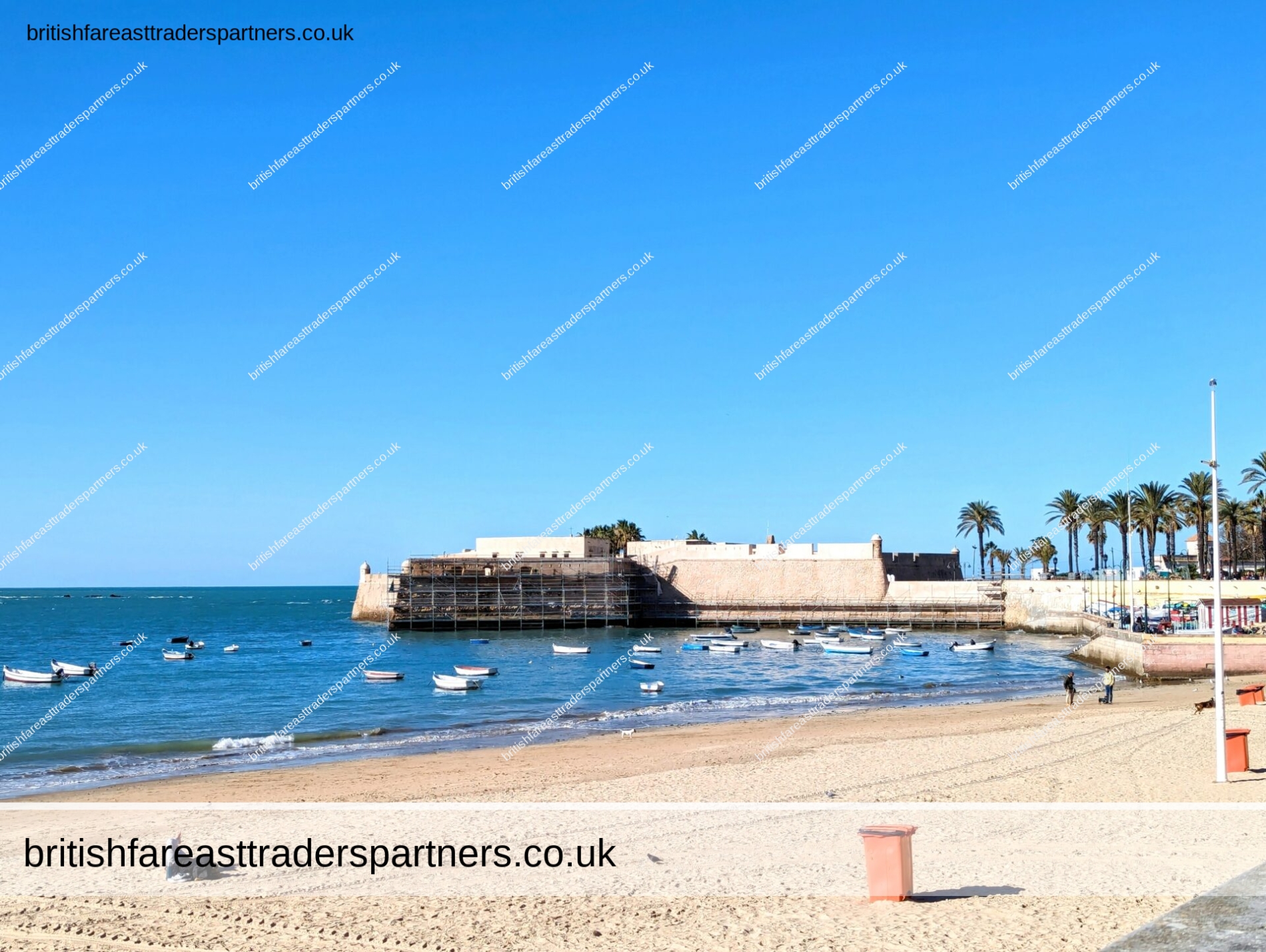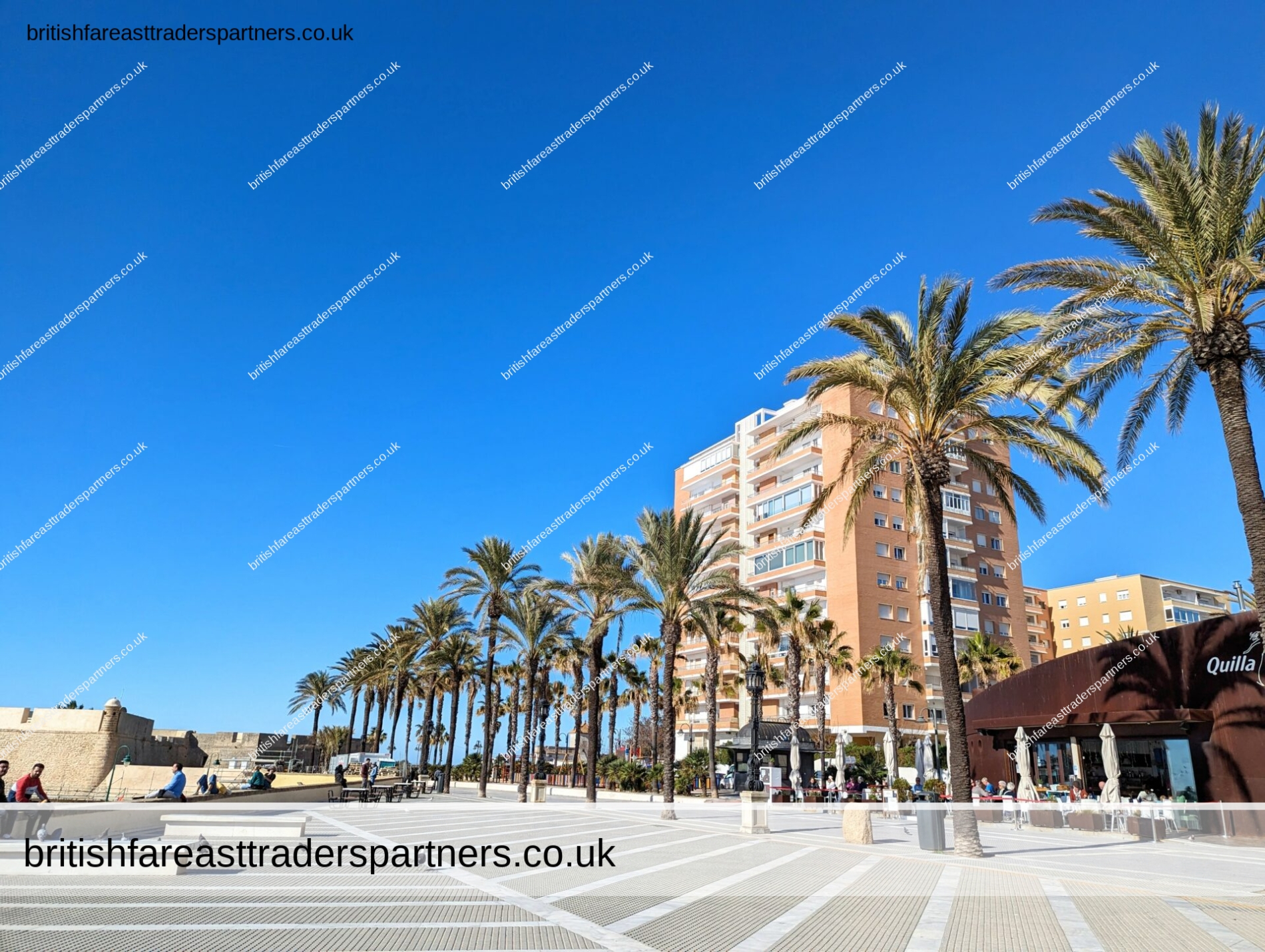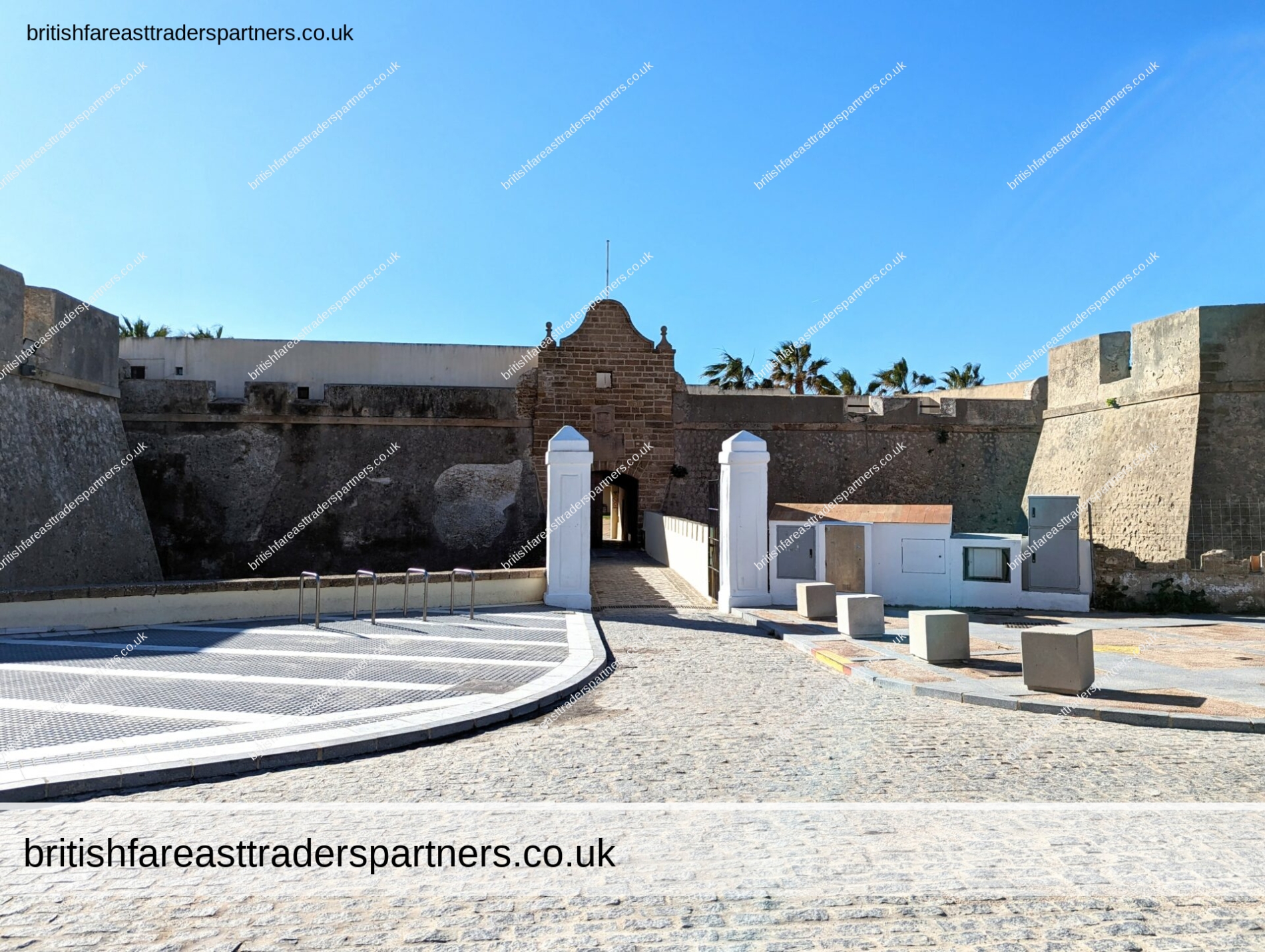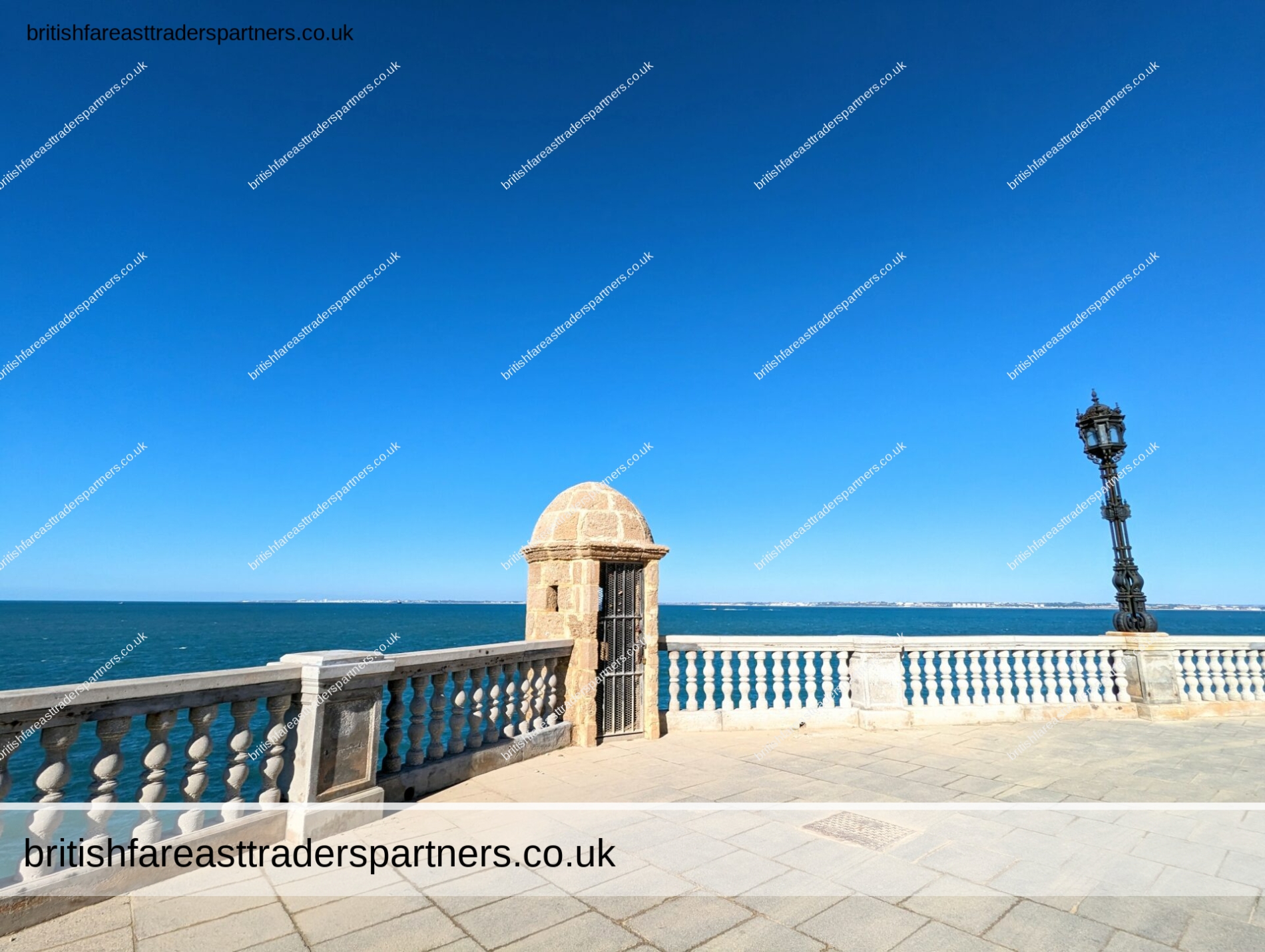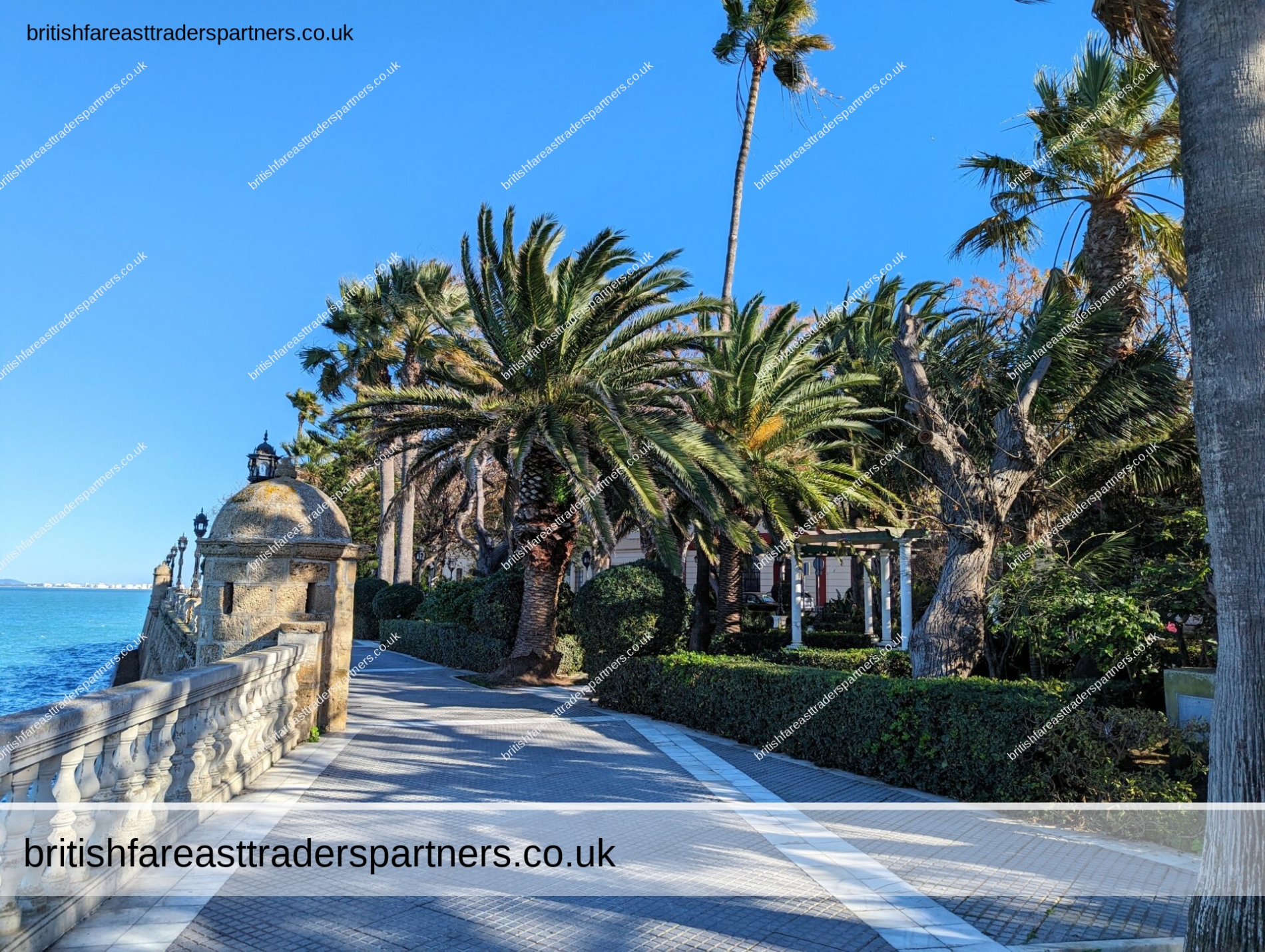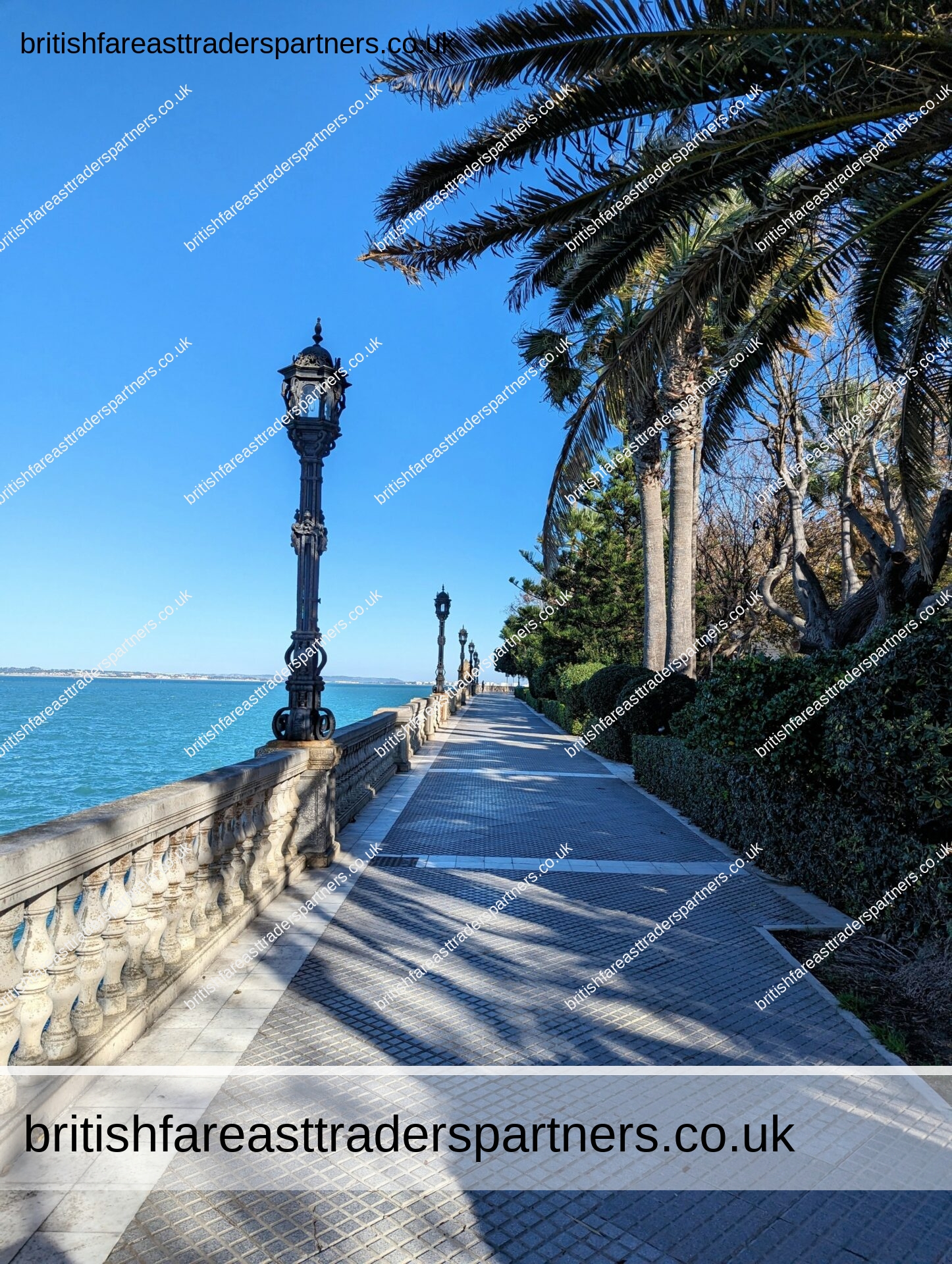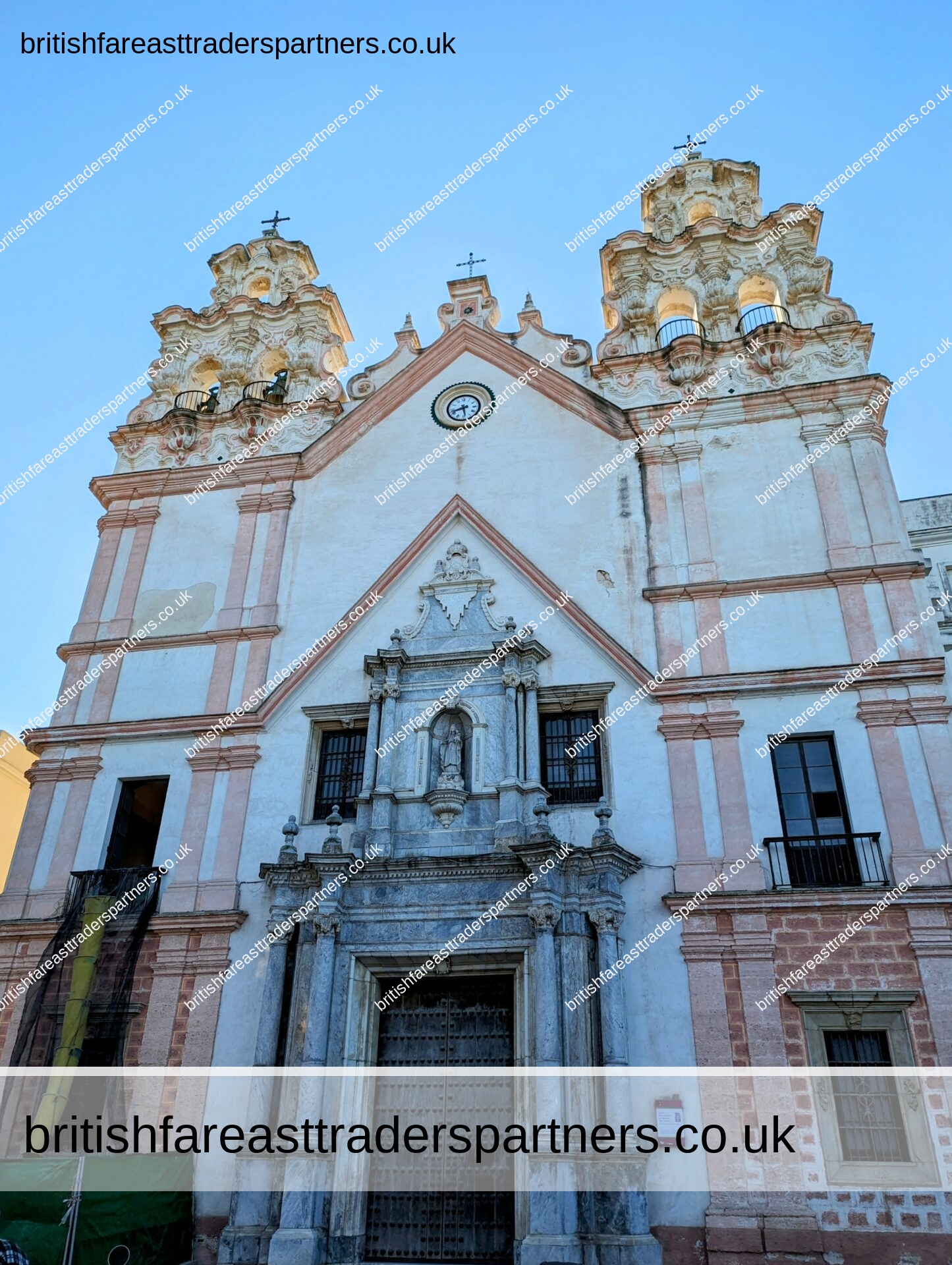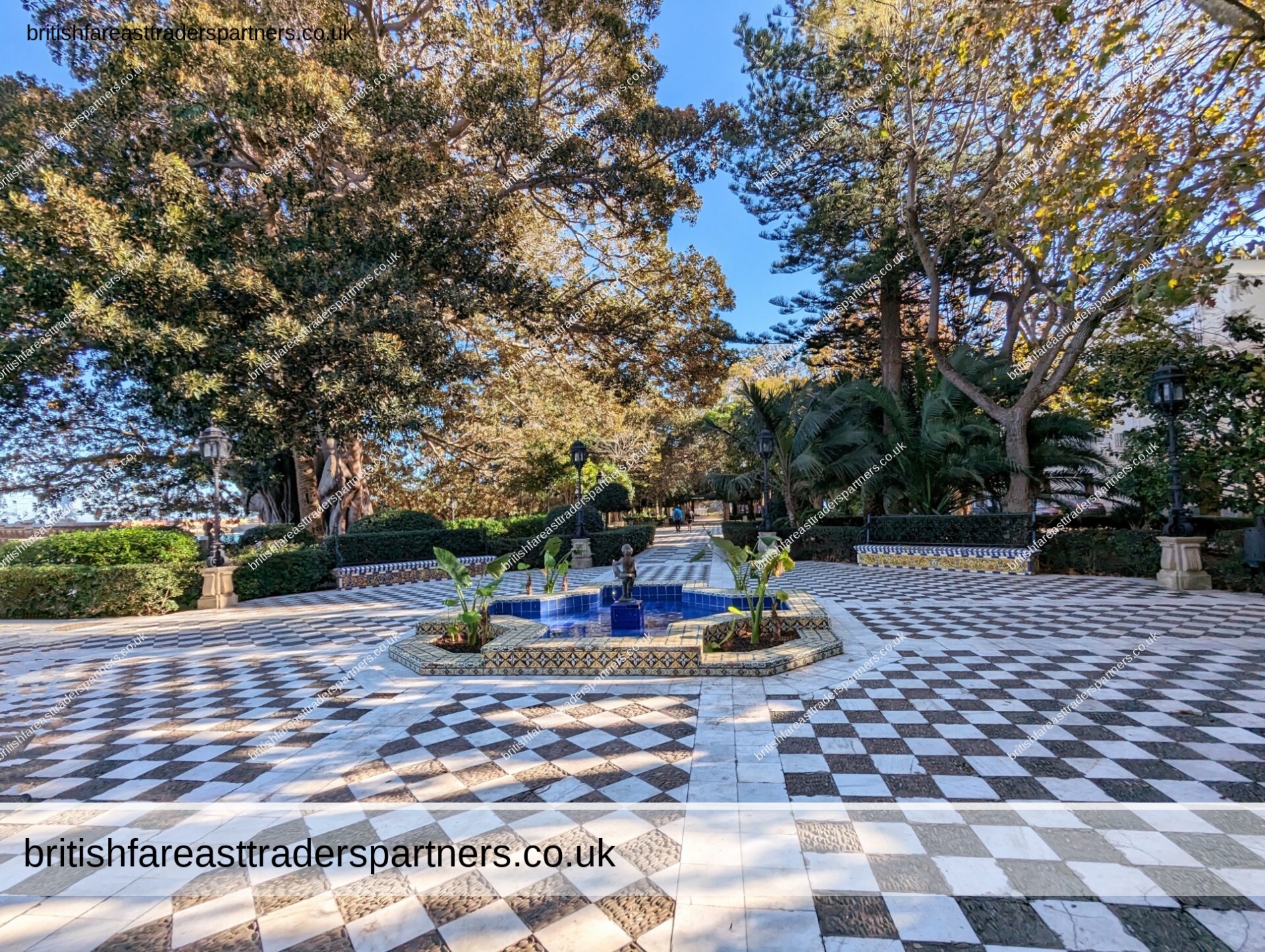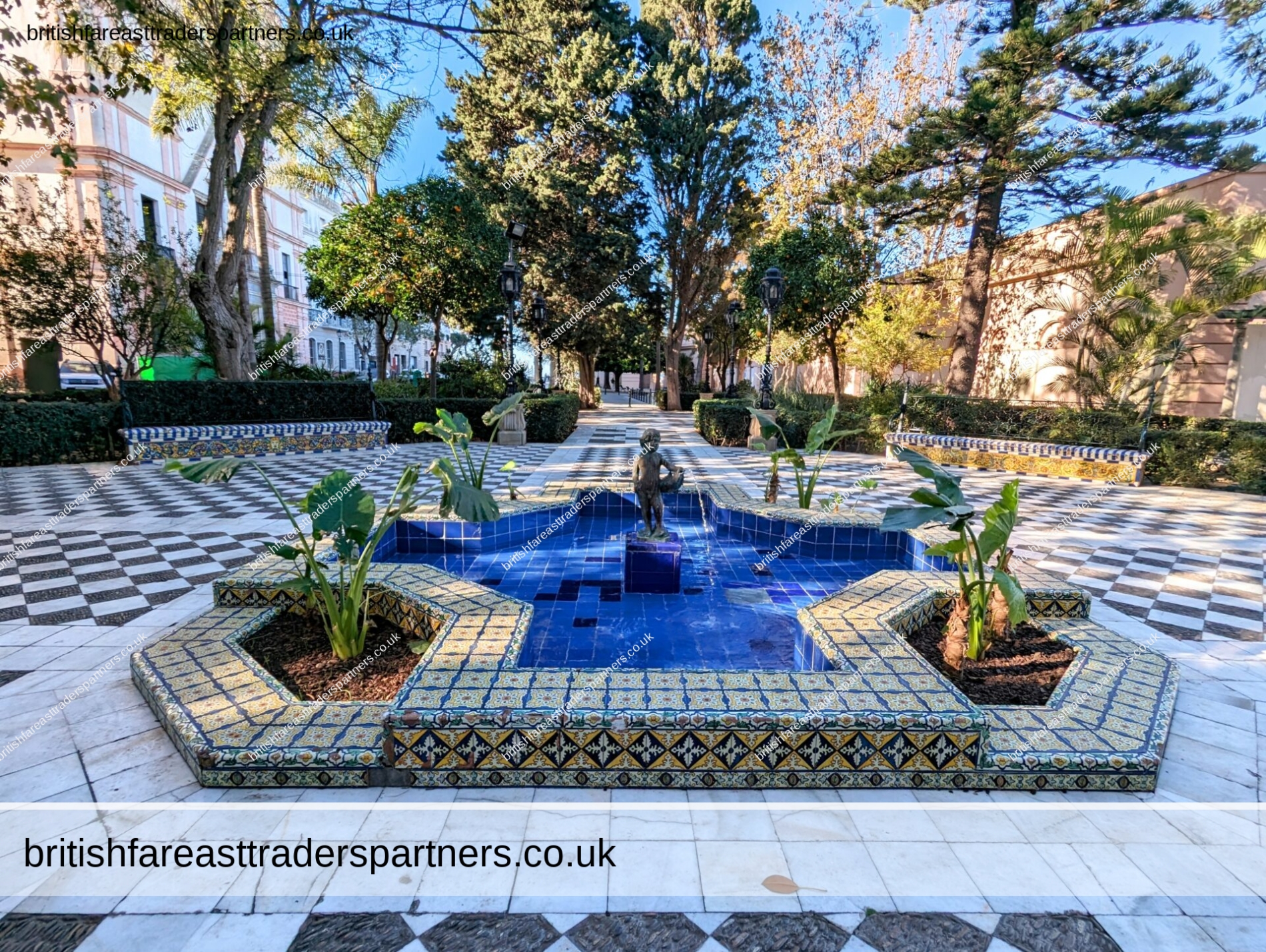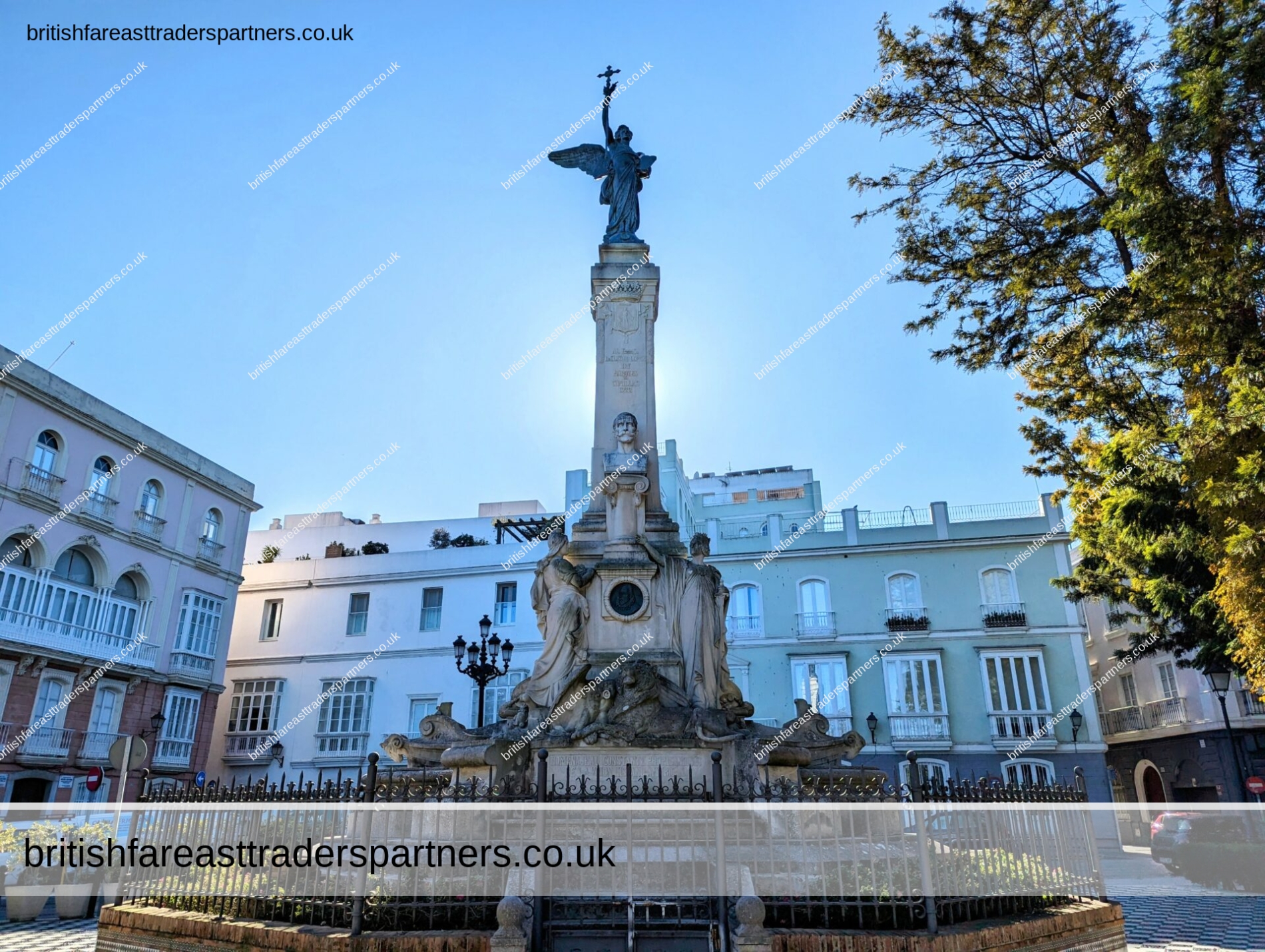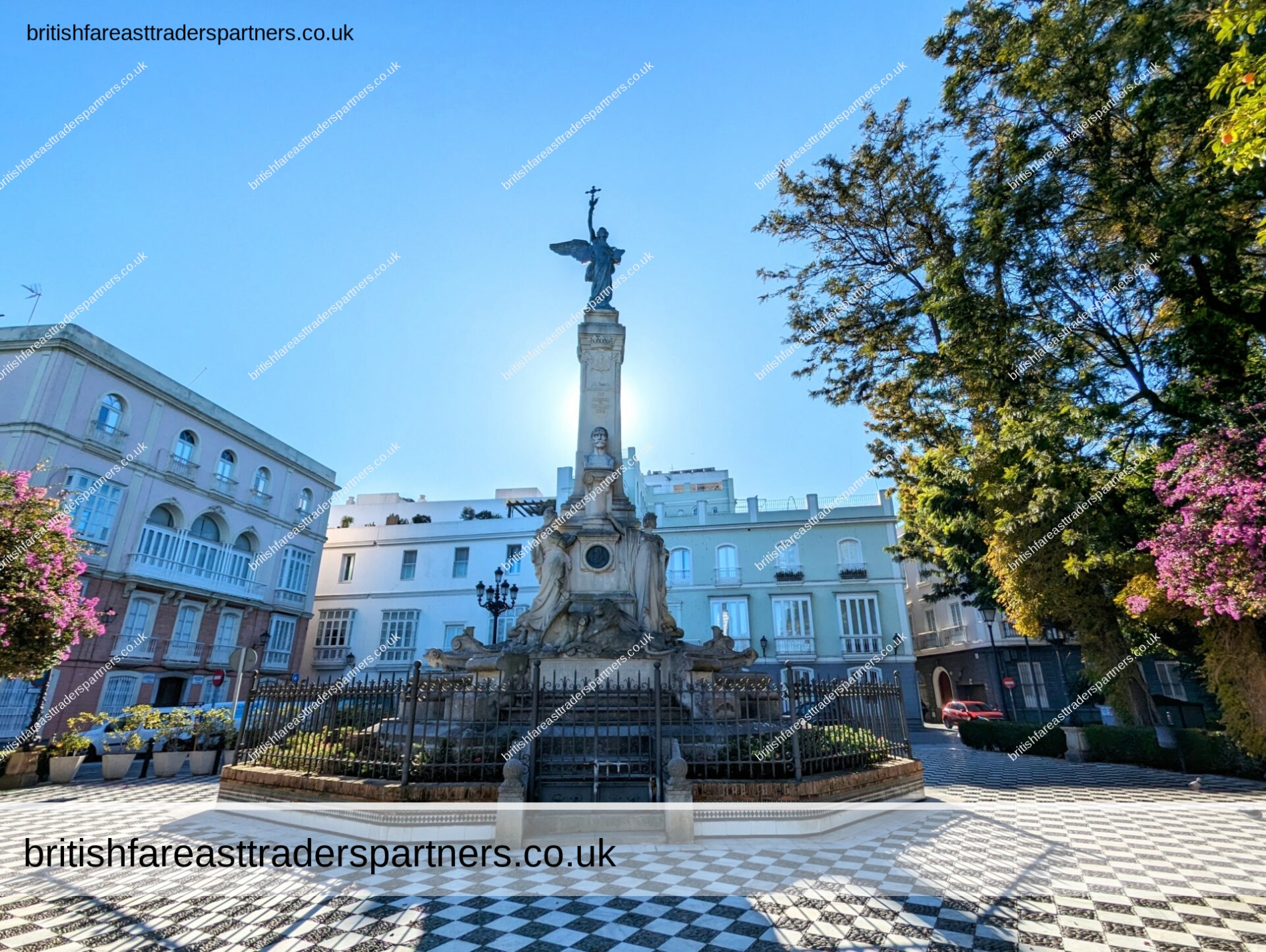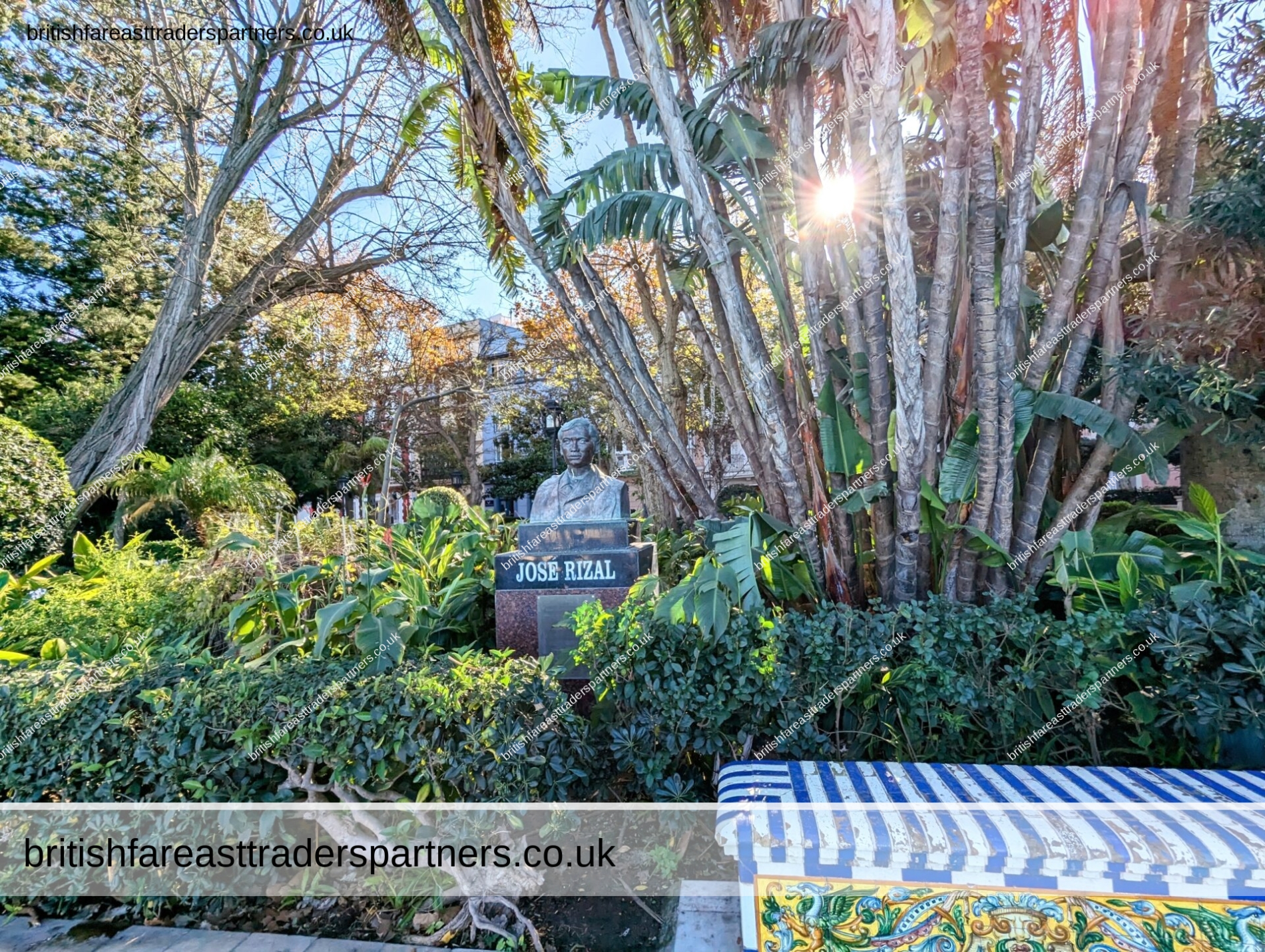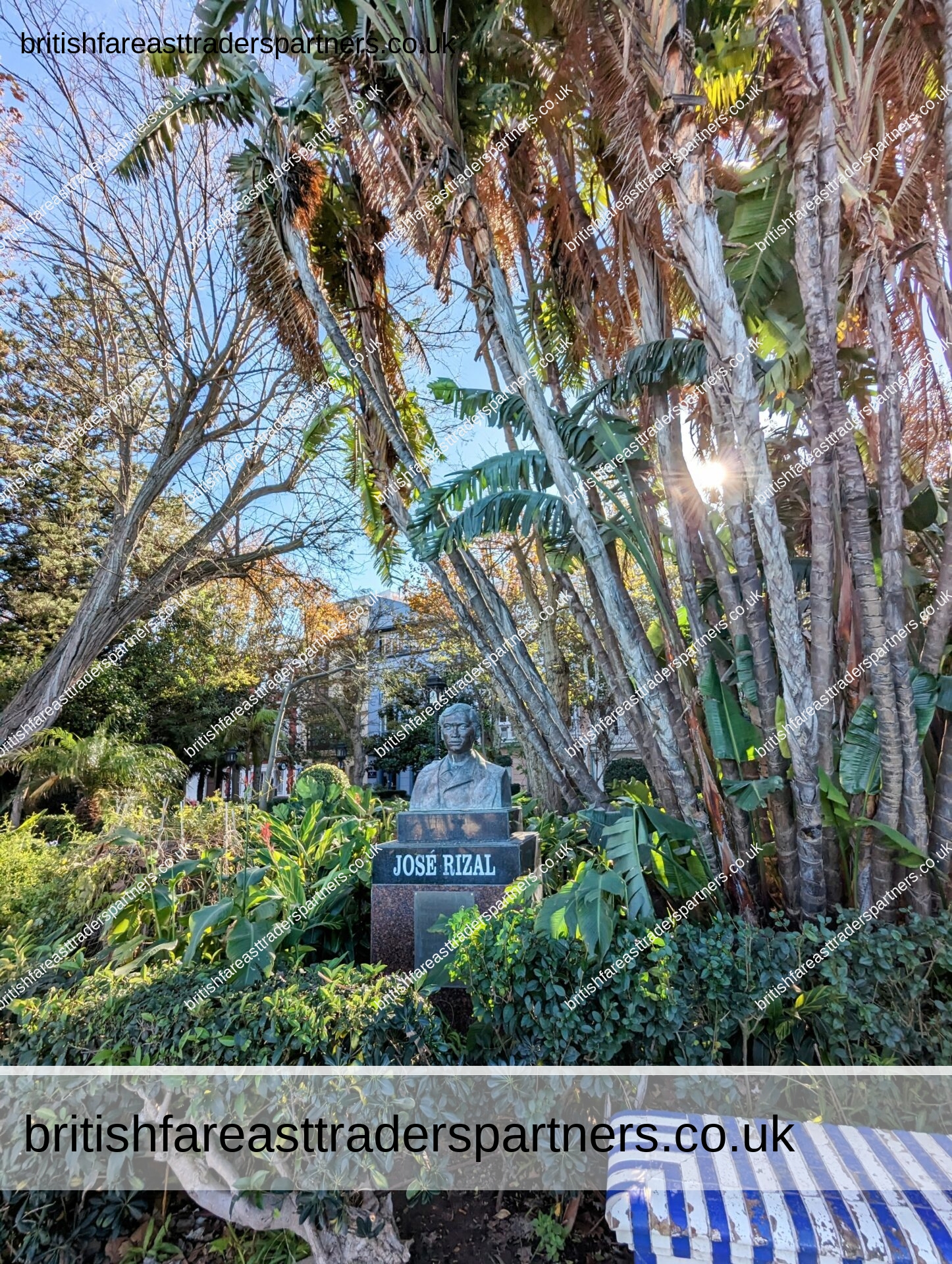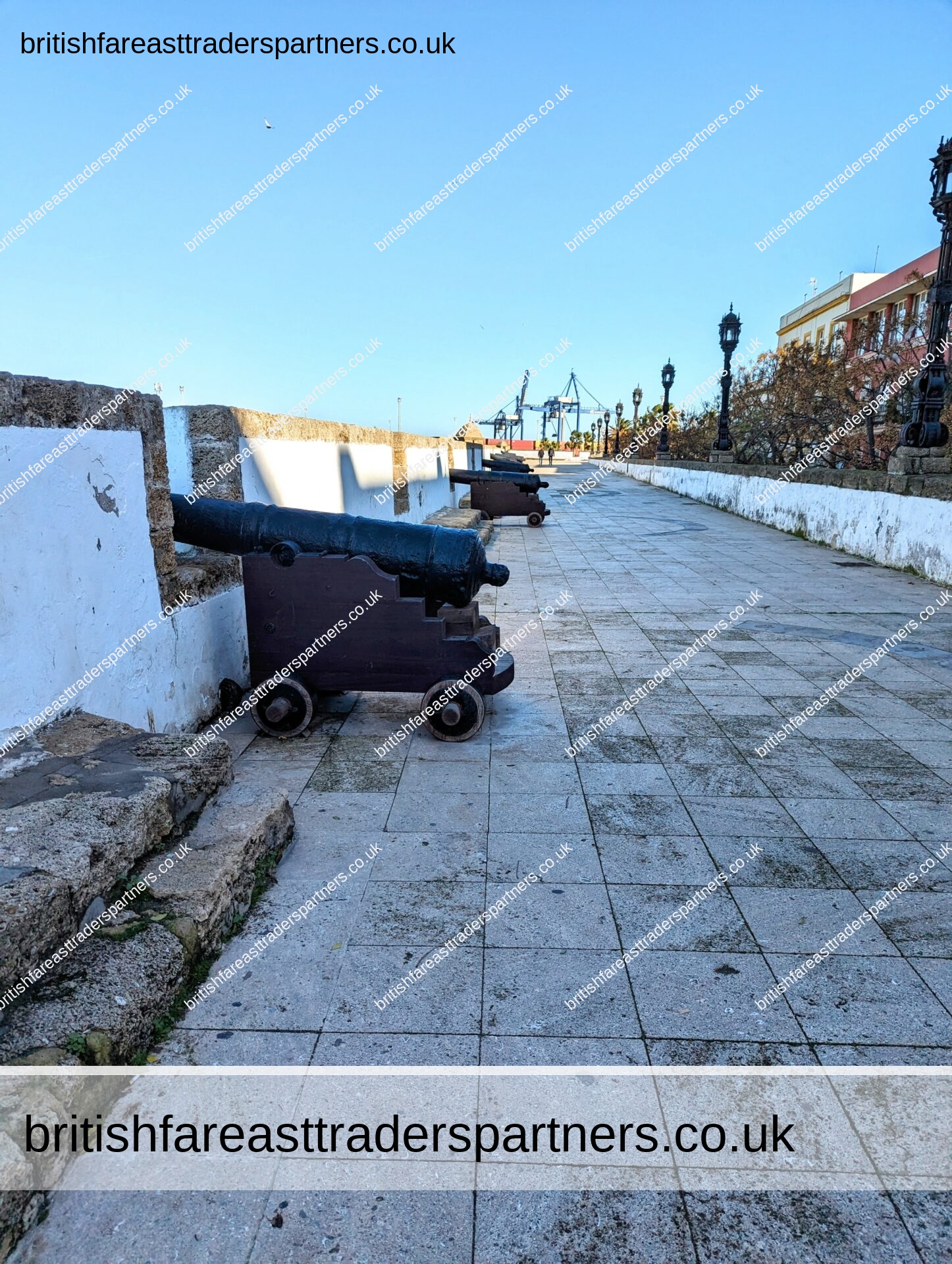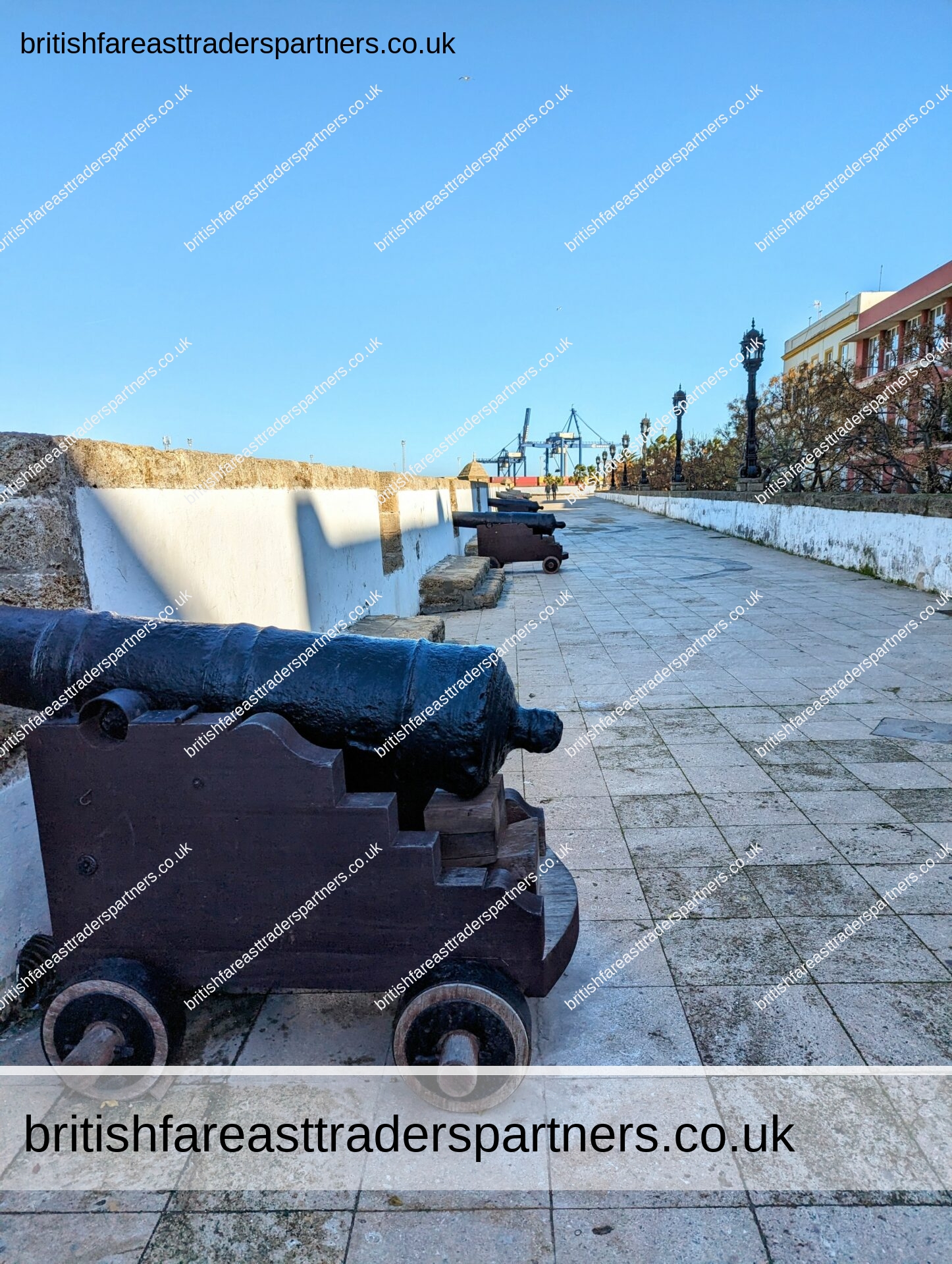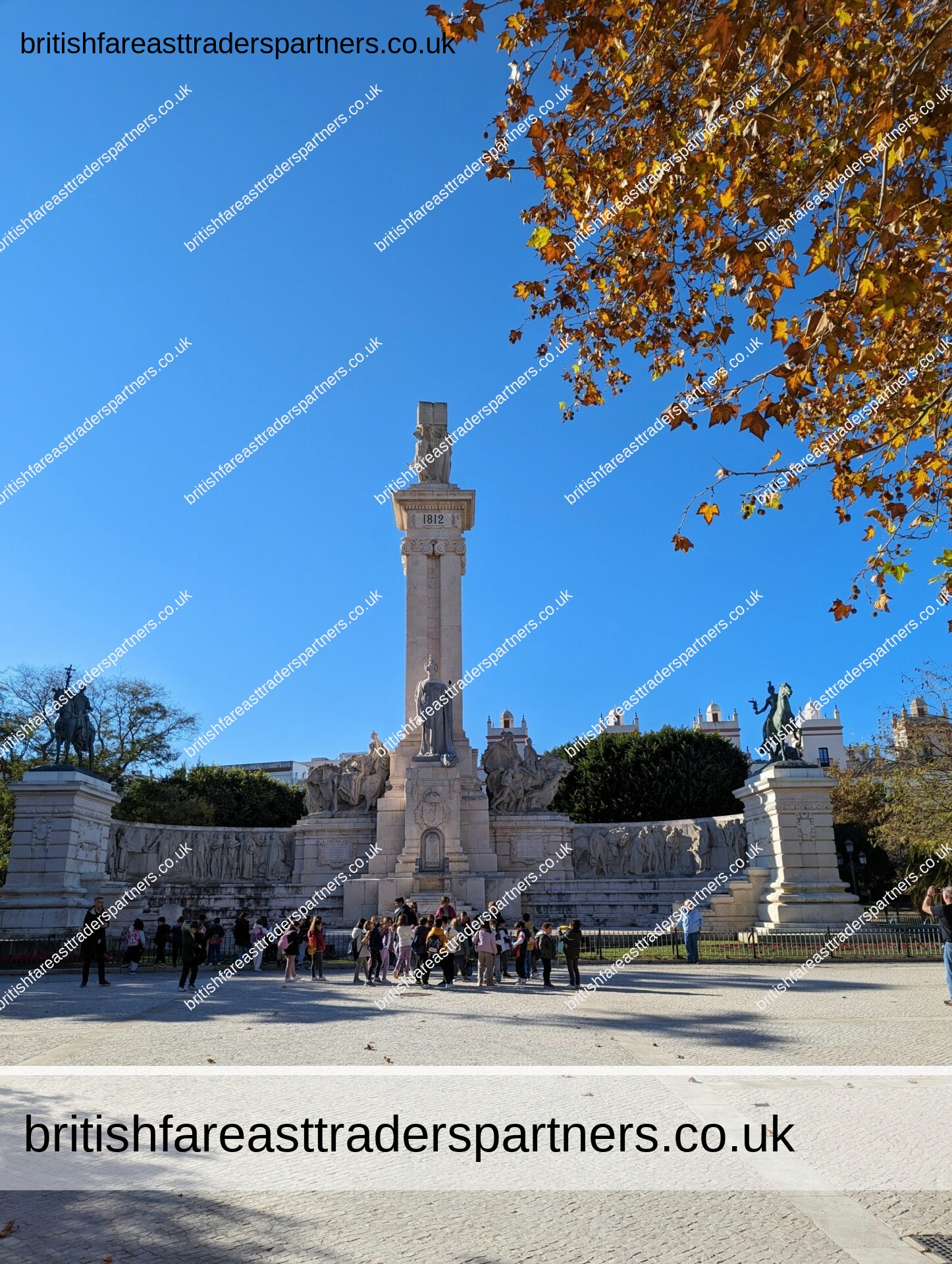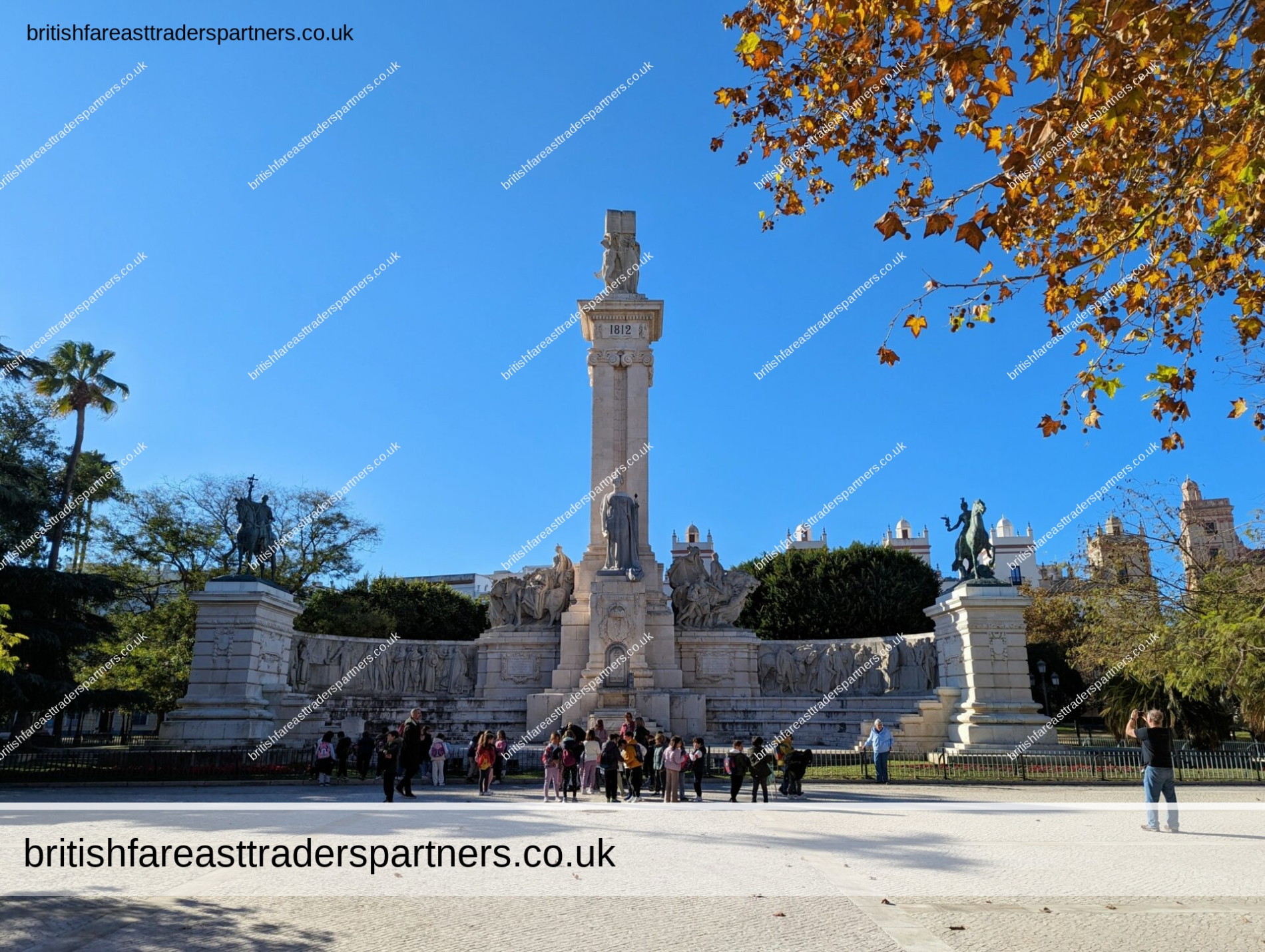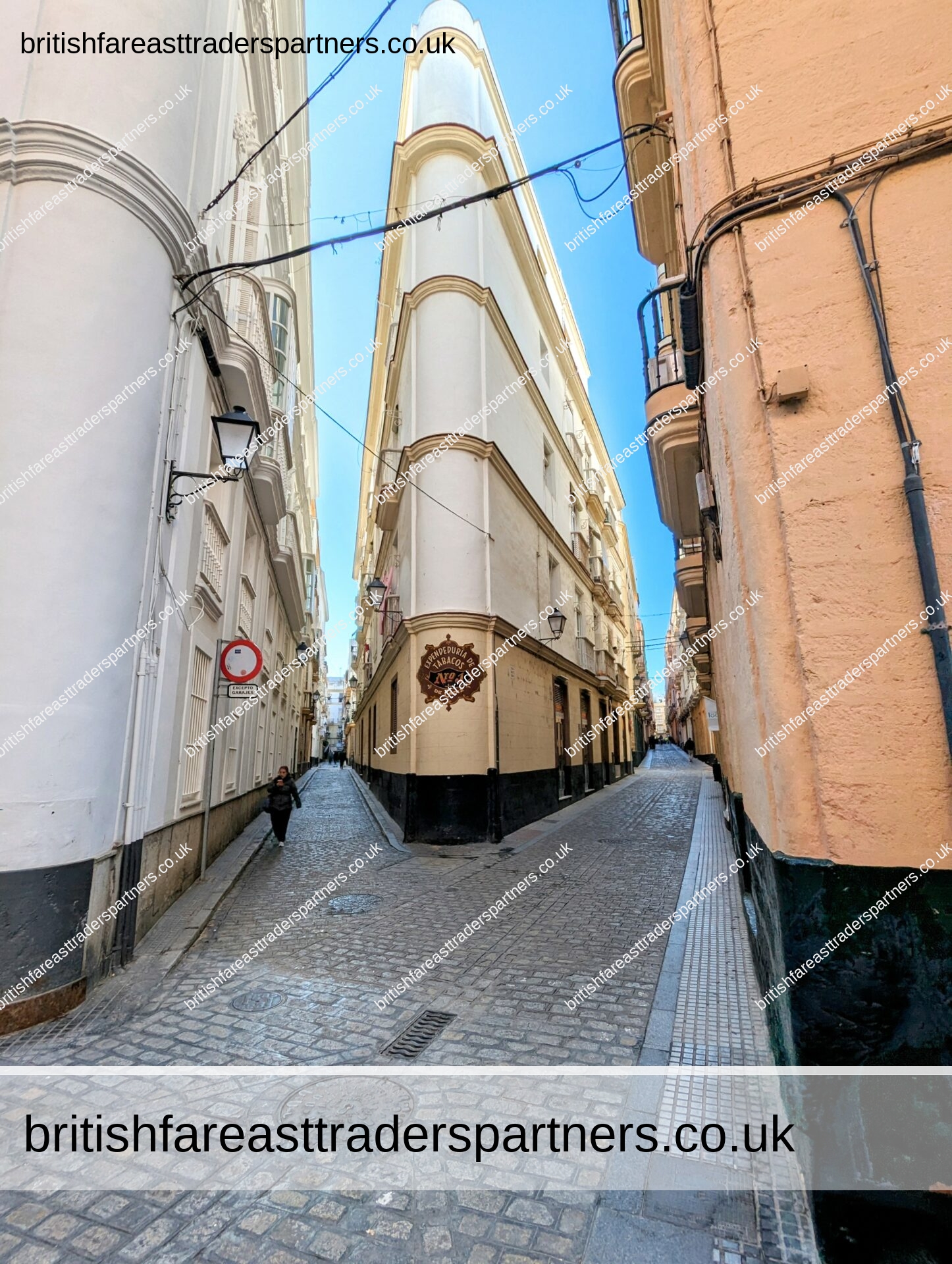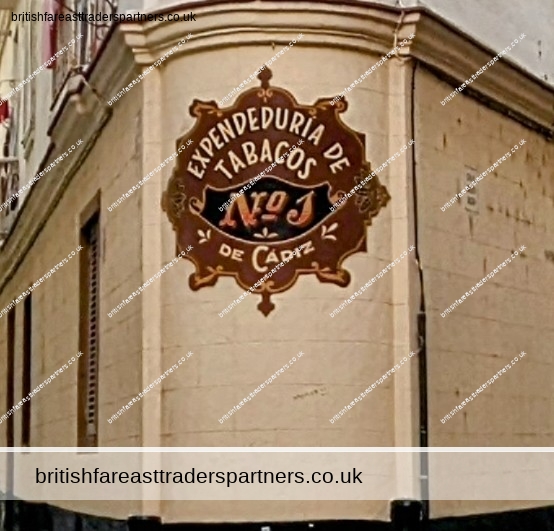Last Updated on: 30th December 2023, 02:27 pm
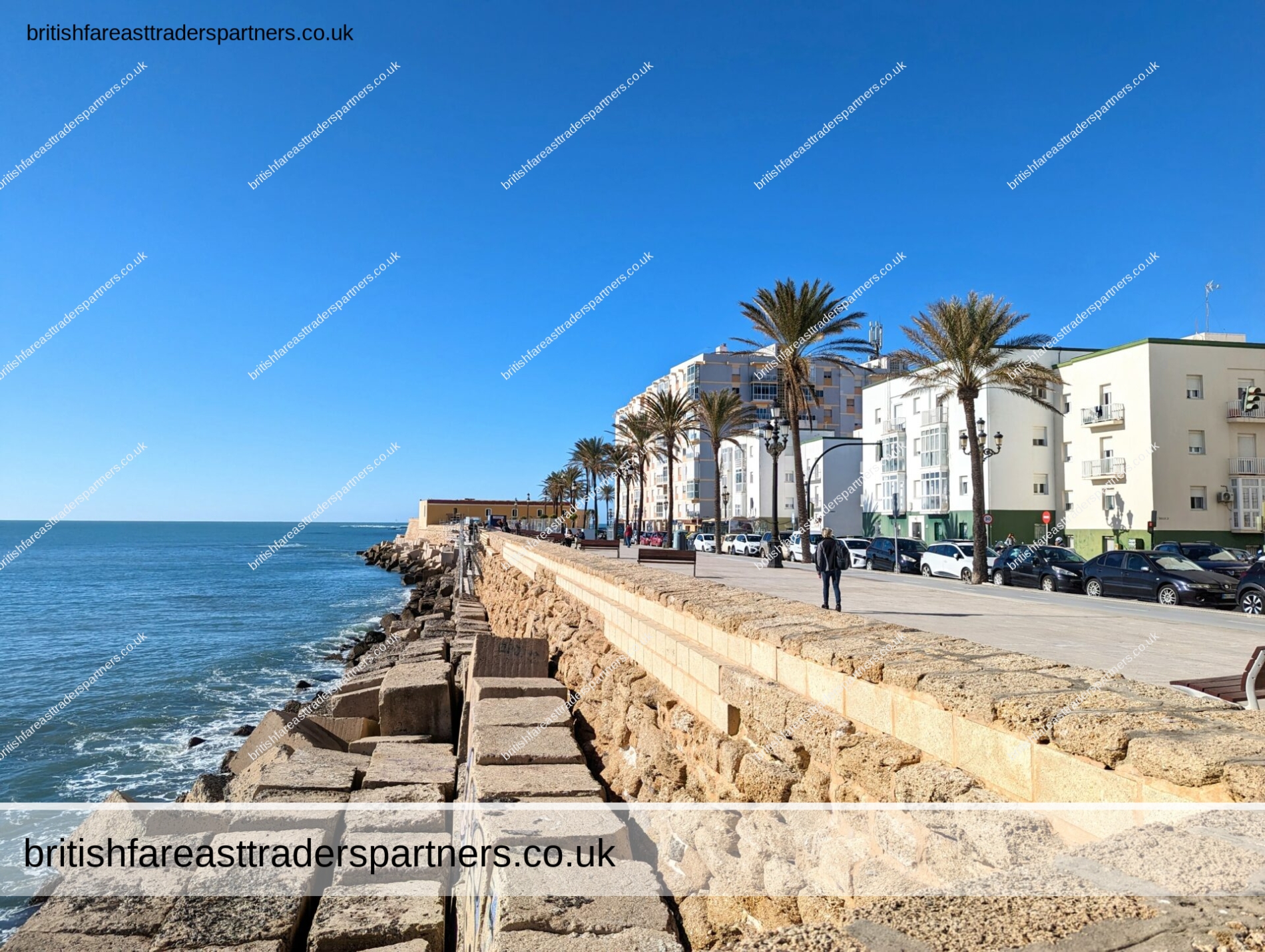
- britishfareasttraderspartners_admin
- ARCHITECTURE, COASTAL, COUNTRYSIDE, CULTURE, ETHNOGRAPHIC, EUROPE / EUROPEAN, HERITAGE, HISTORY, HOBBIES / PASTIMES, INSPIRE ME, LIFESTYLE, NATURE, OUTDOORS, RETREATS / ME TIME, TRAVEL, WALKS
- Architecture, Cadiz (Spain), Cruise, Europe / European, Gardens, Heritage, History, Mediterranean, P&O Cruises, Spain / Spanish
Explore Cadiz on Foot: DIY Walking Tour Highlights with P&O Cruises’ Ventura
Welcome aboard P&O’s Ventura, where every moment is an opportunity for adventure—even with limited time. As we dock in the historic Cadiz, join us on a swift and scenic self-guided walk through this city’s charming streets. With a recommended return to our ship by 4 pm, this brief exploration is designed to encapsulate the essence of Cadiz, giving you a taste of its culture, architecture, and the vibrant life of its historic center. Let’s lace up our walking shoes and set off on a journey that’s short in duration but rich with discovery!
Charming puppet band
These images capture the vibrant street scene in Cadiz, featuring a charming puppet band that brings a whimsical touch to the city’s lively atmosphere. Such street performances are a delightful find for visitors, showcasing local artistic flair and the region’s cultural penchant for music and entertainment. They’re not just a performance; they’re an embodiment of Cadiz‘s festive spirit, offering a unique and joyful experience to remember long after your ship sets sail.
The Monument to Moret in Cadiz
The Monument to Moret in Cadiz honours Segismundo Moret, a significant figure in Spanish political history. Moret was a Liberal politician and is recognised as a “favourite son” of Cadiz. His contributions were notably impactful in the abolition of slavery in Puerto Rico in 1870. The monument itself, designed by Agustín Querol, features a bronze statue of Moret, exuding confidence and authority, standing atop a pedestal with elaborate allegorical reliefs.
The inscriptions on the monument celebrate the values he represented: “patriotismo” (Patriotism), “libertad” (Freedom), “lealtad” (Loyalty), and “elocuencia” (Eloquence). The front of the pedestal proudly declares “Cádiz a Moret” (Cadiz to Moret), symbolising the city’s appreciation for his work and contributions.
The monument has its own storied history, having been moved several times since its unveiling in 1909, a relatively rare occurrence for a monument to be inaugurated while the honoree was still alive. The statue was initially erected through a public subscription initiated by the Ayuntamiento of Cadiz and has since returned to its original location in Plaza de San Juan de Dios as of 2012.
Moret’s life spanned from 1833 to 1913, during which he served in various political roles, including as prime minister in the early 20th century. The monument stands as a grand tribute to his memory and to the values he stood for, in the heart of Cadiz, a city with a rich historical fabric.
Sources:
Monument to Moret (Cádiz) on Wikipedia
Monument to Moret (Cádiz) on detailedpedia
Calle Marques de Cadiz
This photo gives you a snapshot of Calle Marqués de Cádiz, capturing the essence of everyday life in this vibrant Spanish city. The buildings lining the street showcase the classic European architecture that Cadiz is known for, with their ornate balconies and elegant facades. This street seems to be a bustling spot where locals and visitors alike can soak up the sun and immerse themselves in the local culture, enjoying a leisurely stroll or perhaps a café con leche at a nearby café. It’s a perfect representation of the relaxed yet richly historic atmosphere that makes Cadiz such a unique and inviting place to visit.
The Arco del Pópulo
The Arco del Pópulo is a significant historical arch in Cadiz, Spain. It originally served as the Puerta del Mar, the Sea Gate, marking the entrance to the port area and was a critical point of access to the city from the sea. This arch has a deep historical significance as it stands in the oldest part of Cadiz, which is considered by many to be the most ancient neighborhood in Western Europe, with a history of continuous occupation for around 3,000 years.
In the early 17th century, the Chapel of Nuestra Señora del Pópulo was built in front of the gate, giving it the passageway appearance it has today. The arch is named after the Virgin Mary, who was invoked with the Latin phrase “Ave María, ora pro Pópulo“, leading to the name “del Pópulo.” The Arco del Pópulo, along with the district it resides in, embodies the ancient heart of Cadiz, where the past and present converge seamlessly. Walking through this arch is like stepping back in time, surrounded by the echoes of fishermen and merchants who have traversed this path for centuries. It’s a beloved historical treasure that adds to the charm and character of Cadiz.
The Catedral de la Santa Cruz, commonly known as the Cadiz Cathedral
The Catedral de la Santa Cruz, commonly known as the Cadiz Cathedral, is an impressive structure in southern Spain. It’s a Roman Catholic church and the seat of the Diocese of Cadiz y Ceuta. This grand building, completed over a period of 116 years from 1722 to 1838, reflects a blend of styles due to its extended construction period. It began with a Baroque style, included Rococo elements, and was completed with Neoclassical features.
This cathedral isn’t just about its architecture; it also has historical significance. It was known as “The Cathedral of The Americas” because its construction was financed with wealth from the trade between Spain and America during Cadiz’s golden age. It was built with the intention to impress and be seen from the sea as ships entered Cadiz port, symbolising the city’s wealth and importance.
Inside, you can find a Latin cross floor plan, beautiful Corinthian columns, exquisite vaults, and a crypt that was the first part of the cathedral to be built. Notably, the cathedral houses the remains of composer Manuel de Falla and playwright José María Pemán, both native to Cadiz.
For those who can visit, the Levante Tower offers stunning panoramic views of the city. With its rich history and beautiful design, the Cadiz Cathedral is a testament to the city’s past and a must-see landmark for visitors.
The Paseo del Vendaval
The Paseo del Vendaval is a picturesque coastal promenade in Cádiz that offers an easy and enjoyable stroll along the city’s shoreline. It’s a place where you can listen to the soothing sounds of waves crashing against the rocks, feel the refreshing Atlantic ocean breeze, and take in the vibrant colours of the Cádiz skyline. This area, close to the historic center of the city, allows you to experience the lively atmosphere with a backdrop of the sea just meters away from the bustling Plaza and the magnificent Cathedral. The promenade is a part of a nearly 15 km long waterfront path that encircles the ancient port city, providing stunning views and a near-continuous experience of the Bay of Cádiz, alongside beaches, through parks, and past historical sights like the city’s numerous watchtowers and its spectacular cathedral.
Running along the Paseo del Vendaval is a favourite activity for locals and tourists alike, offering a scenic 1.5 km stretch along the coast, with options to extend the route out to piers for fantastic water views. It’s part of a larger loop around the peninsula that’s about 11 km long, perfect for those looking for a longer walk or run with a variety of sights along the way.
The Castillo de San Sebastián
The Castillo de San Sebastián in Cádiz is steeped in history, standing on a tiny islet at the end of La Caleta beach. It’s part of the city’s old fortifications and has been around since more than two thousand years ago when it was believed to be the site of the Temple of Kronos. This castle has served many purposes from a refuge for sailors to a protective fortress. It’s also a cinematic star, having been featured in the James Bond movie “Die Another Day”. If you’re into photography or just love exploring historical sites, this castle’s imposing walls and watchtowers are quite a sight. Although it was closed for renovation in winter 2019, you can still walk up to its gates and enjoy the view.
Playa de la Caleta
Playa de la Caleta in Cádiz is more than just a beautiful beach; it’s a place deeply ingrained in the city’s character and history. Known as the most iconic beach in Cádiz, it’s nestled in the historic center and flanked by the impressive castles of San Sebastián and Santa Catalina on either side. This 450-metre stretch of golden sand has been a hub of activity since Phoenician times and is a beloved spot for locals from the La Viña neighborhood to gather for swimming, sunbathing, and community socialising.
The beach’s history is as rich as its views, having been the mooring point for boats since ancient times and an area where many historical remains have been discovered. These finds contribute to Cádiz’s cultural heritage and some are on display at the Museum of Cádiz. The Balneario de Nuestra Señora de La Palma y del Real, an iconic building from the early 20th century, overlooks the beach, though it’s now used for administrative purposes, housing the Subaquatic Archaeology Centre of the Andalusian Historical Heritage Institute.
La Caleta is not just about relaxation; it’s a lively place where something is always happening. It’s a blend of natural beauty, historical significance, and cultural vibrancy that encapsulates the spirit of Cádiz, making it a must-visit location for anyone wanting to experience the essence of the city.
The Castillo de Santa Catalina
The Castillo de Santa Catalina in Cádiz is not just a fortress with a striking star-shaped design; it’s a canvas of history that tells tales from its construction in the late 16th century to its various roles over the centuries. Commissioned after an English attack in 1596, it was completed in 1621 under the rule of Philip III. This architectural marvel was ingeniously designed to be a formidable defense structure with a pentagonal layout, optimized for protection against artillery fire with projecting bastions named after saints like San Felipe and Santa Catalina.
Its historical layers include serving as a military prison in the 18th century, a refuge during the Spanish Civil War, and even a holding place for participants of the 1981 coup d’état attempt. It’s more than just walls and cannons; it’s where Mariano Abasolo, a Mexican independence hero, was exiled and passed away, adding to its poignant narrative. Today, the Castillo de Santa Catalina stands proud as a cultural venue.
The Parque Genovés
The Parque Genovés in Cádiz is truly a botanical gem that offers a unique microclimate hosting over 150 different species of trees, palms, and shrubs. Its landscape is highlighted by the Drago tree, a species emblematic of the city, along with significant specimens like the Metrosidero from New Zealand, and two varieties of Araucaria trees that reach impressive heights. Not just a place for plant lovers, the park is adorned with a picturesque pond and waterfall, along with various sculptures that pay homage to notable figures such as José Celestino Mutis and others associated with the city’s history and the Battle of Trafalgar.
Along the oceanfront promenade of Alameda Apodaca, you’ll find multiple garitas, which are watchtowers that once served as lookout points for city guards. These structures, along with the stretch of lanterns that protrude slightly into the ocean, make for a stunning and atmospheric spot. One particular garita stands out for its aesthetic appeal, beautifully combining the old-world charm of the lanterns with the vastness of the ocean beyond.
The Jardines del Paseo de Carlos III
The Jardines del Paseo de Carlos III in Cadiz is a historically significant promenade that serves as a lush connector between the Genoves Park and the Alameda de Apodaca. Established in 1927, this area was formed by gradually taking over the military security zone that once surrounded the walls of Cadiz. The architecture you see today was designed by Juan Talavera y Heredia, who also remodeled the nearby Gardens of Alameda Apodaca and Marques de Comillas. The layout of the gardens along the promenade includes a series of roundabouts and walkways, some of which are shaded by pergolas, and it features the same regionalist style seen in the Alameda.
This beautiful walkway was declared an Asset of Cultural Interest by the Junta de Andalucía and is included in the General Catalogue of the Historical Heritage of Andalusia. Its distinctive feature is the continuous garden running parallel to the seaside walk. The design of the walk includes balustrades, traditional lampposts, and sentry boxes, which add to its historical charm. The gardens are adorned with a rich variety of botanical species, including the Dragon Tree, Honey Locust, and various palm trees like the Chinese Fan Palm and the Date Palm. The pergolas are covered with vibrant climbing plants such as Bougainvillea and Trumpet Vines.
For anyone interested in the local flora and history, or simply looking for a serene place to stroll and enjoy the views, the Jardines del Paseo de Carlos III is a must-visit when in Cadiz. It reflects the city’s appreciation for both cultural heritage and natural beauty, offering a peaceful retreat right next to the sea.
The Iglesia del Carmen
The Iglesia del Carmen in Cadiz is a church with significant historical and artistic value, completed in 1762. It is renowned not only for its Baroque architectural beauty but also for hosting the solemn Te Deum on March 19, 1812, in celebration of the completion of the Spanish Constitution of 1812, also known as “La Pepa“. This Constitution is a landmark in Spanish history, representing the first steps towards a more modern and liberal state, and the church’s role in its celebration underlines its historical importance.
The church exhibits a Latin cross plan with three naves and a main facade that is a quintessential example of 18th-century Baroque from Cadiz. It is adorned with marble and flanked by spires richly decorated. Inside, you can find a pulpit made of Genoese marble from the end of the 17th century and an 18th-century retablo mayor (main altarpiece), which took almost two decades to complete. This retablo is divided into three sections by Corinthian columns and features a significant image of the Virgen del Carmen dating back to 1638.
The Alameda Apodaca
The Alameda Apodaca is a picturesque promenade in Cadiz, graced with an array of lush, verdant plants and an ambiance that echoes the sea’s serenity. It’s a spot where the locals unwind, against a backdrop of panoramic ocean views that inspire awe. The gardens are a patchwork of meticulously maintained flowerbeds, towering trees, and vibrant, patterned tiles that embody the spirit of Andalusia. As you stroll along the Alameda Apodaca, the tranquility of the place envelops you, offering a respite from the urban rush. It’s like walking through a living tapestry, rich with the fragrance of flowers and the soft rustle of leaves. The garden’s design is a nod to the city’s connection with the sea, featuring maritime motifs that remind visitors of Cadiz’s enduring love affair with the ocean. Whether it’s the whisper of the breeze through the palm fronds or the tranquil murmur of the water features, the Alameda Apodaca is a testament to the beauty and calm that nature brings to the heart of Cadiz.
The Monument to the Marquis of Comillas in Cádiz
The Monument to the Marquis of Comillas in Cádiz is a tribute to Don Antonio López y López, who was a significant figure in the history of the town of Comillas. Created in 1890, the monument is located in a park with scenic views of the sea and is noted for its maritime themes, which include a pedestal shaped like a ship’s prow. This design reflects Don López’s connections to maritime trade and his financial success, which was attributed to his ventures after emigrating to Cuba, where he made his fortune and later supported Alfonso XII during the Cuban insurrection.
Don López is often referred to as the “father of Comillas” because of his substantial contributions to the town’s development after his return to Spain. However, his legacy is not without controversy, as there are claims that his wealth was, in part, built on the slave trade, which was a significant part of the economy in some countries, including Cuba, until the mid-19th century.
The monument was designed by the architect Doménech y Montaner and constructed under the direction of Cascante, with the land for the monument being donated by Ángel Pérez, a friend of López, to the town of Comillas. The statue of the Marquis himself is positioned on top of the column, overlooking the area with an air of significance and remembrance of his influence.
The bust of José Rizal
The Alameda Apodaca is a picturesque promenade in Cádiz, Spain, known for its beautiful gardens, stunning views of the bay, and its serene atmosphere. The presence of the bust of José Rizal here is significant as it represents the historical connections between Spain and the Philippines, as well as the recognition of Rizal’s influence and legacy.
Rizal’s bust in Alameda Apodaca serves as a reminder of the complex history between the two countries, but also as a symbol of peace and reflection on the impact of historical figures on world events. The setting, with its vibrant greenery and the tranquility it offers, provides a fitting space for contemplation of Rizal’s contributions to literature, national identity, and social reforms.
It’s a testament to the universal respect for a man who stood for national dignity and self-determination, and placing his bust in such a prominent and beautiful location in Cádiz allows for a diverse audience to appreciate and learn about his story and the enduring ties between Spain and the Philippines.
Cannons lined up along the Alameda Apodaca
These cannons lined up along the Alameda Apodaca in Cádiz are likely historical artifacts that serve as a reminder of Cádiz’s maritime and military history. Given Cádiz’s strategic position throughout history, it has been fortified with many defenses, including cannons such as these, to protect against naval attacks.
The presence of these cannons in a now peaceful and scenic walkway juxtaposes the city’s past with its present. It’s an embodiment of how spaces once meant for war and defense have been transformed into areas for leisure, reflection, and enjoyment of the natural beauty of the seafront. They stand as historical monuments that visitors can explore, providing a tangible connection to the past.
Moreover, the location of these cannons, with the modern backdrop of crane structures from a nearby port or shipyard, illustrates the evolution of Cádiz from its historical military significance to a contemporary working city with an active port. This blend of old and new is characteristic of many European cities, where layers of history are visible in the urban landscape, offering an open-air museum experience to residents and tourists alike.
The Monumento a la Constitución de 1812
The Monumento a la Constitución de 1812 located in Cádiz, Spain, is a significant historical and cultural landmark, commemorating Spain’s first constitution, which was promulgated in Cádiz on March 19, 1812. The Constitution of 1812, also known as “La Pepa” since it was enacted on Saint Joseph’s Day, was one of the most liberal of its time and laid the groundwork for modern Spanish democracy.
The monument itself is an impressive structure, featuring a tall central pillar topped with an allegory of Spain, and is flanked by various figures that represent the values enshrined in the constitution, such as Justice, Peace, and War. The two robust statues of standing lions add a powerful symbol of strength and resilience.
The monument not only celebrates the historical significance of the Constitution but also serves as a focal point for public gatherings and celebrations. Its location in the Plaza de España in Cádiz is a prominent public space, often filled with both locals and tourists. The clear blue sky and the autumn leaves in the photographs suggest a serene atmosphere, inviting contemplation on the progress of constitutional democracy in Spain.
The presence of people around the monument indicates its role as a living part of the city, where history is not just remembered but continues to be a part of the daily life and identity of the people of Cádiz. The Monumento a la Constitución de 1812 stands as a tribute to Spanish history and a symbol of the enduring values of liberty and democratic governance.
The narrow and old streets of Cádiz
The narrow and old streets of Cádiz with the “Expendeduría Número Uno Cádiz” tobacco shop nestled within its walls. This scene is a slice of the daily life and history in Cádiz, a city known for its well-preserved historical quarters. The tobacco shop, as denoted by the sign with the traditional Spanish coat of arms for tobacco stores, is likely a long-standing establishment, as indicated by “Número Uno” which often implies it was the first or primary of its kind in the area.
Cádiz is renowned for its maze of narrow streets that echo the city’s long history, dating back to the Phoenicians. The architecture reflects a mix of periods, with influences from the city’s time under Roman, Moorish, and later, Spanish rule. These streets have a distinct character, with buildings that rise closely together, creating shaded walkways that provide respite from the hot Andalusian sun.
The design of the streets is not only a product of historical development but also a reflection of the need for defense, as Cádiz was an important naval base. The compactness would have made it easier to defend against invaders. Today, these narrow streets provide an intimate experience of the city’s charm, with small shops, cafes, and boutiques offering both necessities and luxuries to locals and visitors alike.
Walking through Cádiz’s old town, one can appreciate the city’s vibrant life that has pulsed through these streets for centuries. The cobblestones underfoot, the historic facades above, and the life that moves in between form a living museum, where every corner tells a story, and places like the Expendeduría Número Uno are threads in the city’s rich tapestry.
As we conclude our walking tour of Cádiz, the whispers of the past retreat into the backdrop of the city’s vibrant rhythm. From the solemnity of the Monumento a la Constitución de 1812, a beacon of democratic ideals, to the tranquil oasis of Alameda Apodaca, where history and nature intertwine beneath the watchful gaze of José Rizal’s bust, we’ve journeyed through corridors of time.
We sauntered past the stoic cannons, silent sentinels of the city’s formidable maritime history, and meandered through the narrow arteries of this ancient city, where the Expendeduría Número Uno stands as a testament to tradition amidst the modern cadence of Cádiz life.
As the sun dips toward the horizon, casting a golden glow on the cobbled streets, we part ways with hearts full of memories, our footsteps echoing the countless that came before us. Cádiz, a city sculpted by the winds, waves, and the wills of its people, bids you a warm ‘hasta luego’. Carry with you not just photographs, but the living soul of this city, the tales etched in its walls, and the spirit of its streets until they call you back to wander once more.
Thank you for allowing us to guide you through the charm and tales of Cádiz. Safe travels, and may the memories of today be as enduring as the history of this timeless city.
Related posts:
- Vintage Delicate Spring Florals pattern Ceramic Creamer Charming vintage creamer with a delicate floral motif, perfect for...
- VINTAGE Cochem Western Germany Castle and Winery Collectable 0.25L Creamer Vintage Western German creamer with Cochem castle design, perfect for...
- Vintage Gold Lustre BOHEMIA KS Czechoslovakia Demitasse Coffee Cup & Saucer Refined Bohemian demitasse set, a treasure of gilt artistry and...
- RELAX IN THE LAIDBACK ISLAND LIFESTYLE OF ISLE OF WIGHT UNITED KINGDOM RELAX IN THE LAIDBACK ISLAND LIFESTYLE OF ISLE OF WIGHT...
- Unveiling the Secrets of Intramuros—Manila’s Timeless Spanish Walled City Explore Intramuros: Dive into Manila's historic charm and colonial legacy....
- Amsterdam Nights: A Vibrant Escape into City Lights & Delights! Experience Amsterdam's charms: a magical canal cruise and the allure...
- A Lovely Selection of VINTAGE & ANTIQUES BIRTHDAY GREETINGS POSTCARD Here we showcase to you a Lovely Selection of VINTAGE...
- ANTIQUE 1915 DIVIDEND STATEMENT ‘THE NORTH BRITISH & MERCANTILE INSURANCE CO.’ ANTIQUE 1915 DIVIDEND STATEMENT 'THE NORTH BRITISH AND MERCANTILE INSURANCE...
- 2020 ‘THE VOICE OF THE NATION’ ELIZABETH II GIBRALTAR ONE CROWN COLLECTABLE COIN Welcome to this eBay UK Buy It Now listing for...
- A Twilight Journey Beside the Thames: Rediscovering London’s Ancient Pulse Join us on a picturesque evening stroll along the iconic...

